

What is slow tourism and why is it so good?
The slow tourism industry isn’t one that is necessarily well publicised. In fact, many people have never heard of slow tourism. It does, however, comprise a significant proportion of the broader tourism industry worldwide. In parallel with an increased awareness of the importance of sustainability amongst the general public, the slow tourism movement is now bigger than ever before.
As part of my types of tourism series, this post will discuss the concept of slow tourism.
What is slow tourism?
Slow tourism definitions, the origins of slow tourism, the three pillars of slow tourism, slow tourism and sustainability, backpacking, business travel, volunteer tourism, visiting friends and relatives (vfr), hiking/cycling/active pursuits, southeast asia, the united states of america, slow tourism: conclusion, further reading on slow tourism.
Slow tourism is based on the concept of speed. It involves travelling for a prolonged period of time at a slow pace, allowing the tourist a deep, authentic and cultural experience.
An alternative tourism form, slow travel is typically associated with sustainable practices, taking into consideration the impacts of travel on the environment , society and economy .
Slow travel can be undertaken in any destination, but is particularly popular amongst traditional backpacking routes in destinations such as South East Asia, Central America or Australia . It is also commonly identified in popular road trip areas, such as Canada, Australia or the United States.
Defining slow tourism isn’t as easy as it might seem. Whilst at the core of the term is the notion of speed, there is indeed more encompassed in the concept of slow tourism than this.
There is a general consensus amongst academics that, contrary to its title, slow tourism is not solely about speed. In fact, it is indeed focussed more predominantly around the notion of sustainable travel , allowing for a more cultural and environmental friendly solution to travel.
Dickinson and Lumsdon (2010) define slow tourism as:
‘A conceptual framework that involves people who ‘travel to destinations more slowly overland, stay longer and travel less’ and who incorporate travel to a destination as itself an experience and, once at the destination, engage with local transport options and ‘slow food and beverage,’ take time to explore local history and culture, and support the environment.’
Lipman and Murphy (2012) pertain that sustainable consumption through ‘slower’ transport and products, reduced mobility, and ‘less’ travel are fundamental to the concept of slow tourism.
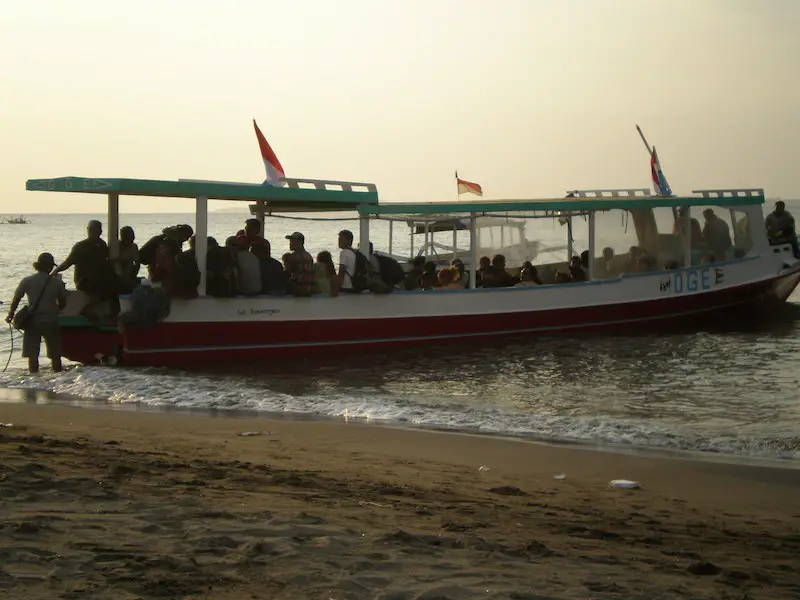
Furthermore, Moore (2012) emphasises that in order for tourism to be ‘slow’, it must redact the principles of traditional ‘fast tourism’, such as package holidays and organised tours.
Whilst said academics are in agreement that travel must be ‘slow’, there is little consensus on what ‘slow’ actually means and how it is practiced or interpreted in relation to different tourism contexts, cultures, and mobilities” (Fullagar, Markwell, and Wilson 2012). In other words, what is ‘slow’ in one situation, to one person, may not be ‘slow’ in a different circumstance.
The notion of slow tourism derives from the food industry.
The slow food movement was developed in Italy during the late 1980s (Dickenson, 2002) and has become more and more popular throughout the decades. The aim of slow food is to prevent local food cultures and traditions from disappearing, to counteract the rise of fast life and to raise public interest in the food we eat, where it comes from and how our food choices affect the world around us.
The premise between slow food and slow tourism is the same: both industries are interrelated with many other aspects of life, including culture, politics, agriculture and the environment.
Dickinson et al. define slow tourism according to three distinct pillars.
- 1- Doing things in the right speed
- 2- Changing the attitude towards speed
- 3- Seeking quality over quantity
Now, it is important to note that the above statements are subjective. What is the ‘right’ speed? What type of attitude should one have? How do we define ‘quality’?
Generally speaking, people tend to associate slow tourism with a slower pace of life. Many of the stresses associated with travel are alleviated or reduced. Slow tourism involves spending longer in one place, getting to know the area and the community. Slow tourism involves the tourist slowing down, and often doing less, in order to gain a deeper understanding of the surroundings, community, and authentic culture.
Some suggest that slow travel should avoid the use of air and car travel. Instead, tourists should use alternative means of transport that are more environmentally friendly. Whilst may often be the case for slow tourists, it is not, in my opinion, a defining characteristic.
Slow tourism demonstrates strong links with sustainable tourism .
Slow travel will often involve getting to know the local community within which you are staying. Perhaps tourists will stay in a homestay or a local Airbnb.
Instead of racing to see the top sights before your return flight home, slow tourists will take their time sightseeing. They will typically read all of the exhibits in the museums, sit an enjoy the sights and sounds over a coffee or whilst reading a book and see many of the lesser-known attractions in the area.
Because slow tourists will often be embarking on long-term travel plans, they are often more money conscious than the tourist who is taking their annual vacation. These tourists are more likely to eat in local restaurants and are less willing to spend their money in Western chains that are expensive in comparison.
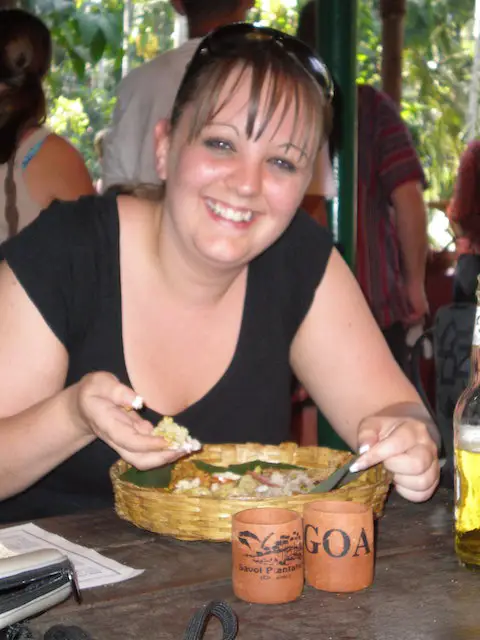
This type of behaviour promotes positive social impacts of tourism ; allowing tourists to learn more about the local culture and have an authentic travel experience . It also promotes positive economic impacts of tourism as money is more likely to stay within the community, demonstrating less economic leakage from tourism .
Lastly, the negative environmental impacts of tourism are often mitigated or reduced through slow tourism, because travellers tend to think more consciously and will often choose more environmentally means of transport.
Types of slow tourism
So now we understand what slow tourism is, but what does it look like in practice?
Well, there is no straight answer to this question, because slow tourism comes in many shapes and forms! But here are a few examples:
Backpacking is typically a form of slow tourism because of its speed. Backpacking trips can range from month-long adventures in Europe to round the world backpacking tours.
Whilst backpacking trips do not always demonstrate the sustainable mindset that is often associated with slow travel amongst tourists (particularly young backpackers travelling to party destinations in Thailand or Australia), there is an inevitable proportion of social benefits that will naturally raise from slow travel. Backpackers might still choose to fly, but they have probably chosen to eat and stay local, too.
Roadtrips are categorised as trips that involve substantial travel by road. OK, so the use of a car or motorhome isn’t the most environmentally friendly mode of transport, but a road trip will allow a tourist to have a slow experience, if this is what they choose.
One of my favourite family travel bloggers, Travel Mad Mum , for example, is about to embark on a road trip from the UK to New Zealand with her husband and two young children. This is a great example of slow travel!
Many people will travel on business. Business tourism can be either long or short term and it can involve travelling to one destinations or multiple different places.
Business travel can be a form of slow tourism because it can require the traveller to spend long period of time in a destination. I met a lady on my travels to Jeju with the kids who has been working in India for several months on a project as part of her job. She travelled to many different areas for business and had a deep cultural experience. This was a good example of slow tourism.
Volunteer tourism is the act of visiting a destination for the purposes of undertaking voluntary work.
Volunteer tourists can take part in many different types of projects, including those that work with the environment or the local community. Either way, volunteer tourism projects typically last for a month or more in duration and involve a significant level of integration with the host community.
Visiting friends and family is one of the largest areas of the travel and tourism industry, and it continues to grow. More and more of us are relocating or expatriating and then use our leisure time to visit our friends and relatives, wherever in the world they may be based.
Prolonged trips can be considered a type of slow tourism. Often such trips will allow the tourist to immerse themselves within the local community and to have a deep cultural experience. Since moving to China , I have had friends that have come to visit. Most people who visit Hangzhou will spend only a couple of days here, whereas my visitors have stayed for several weeks and have had a highly cultural and deep experience.
Travel involving the environment is popular amongst slow tourists. Hiking and cycling are two examples. When I climbed Mount Kilimanjaro , for example, this could be considered slow tourism because of the slow pace that was taken. Likewise, many cycling tours are considered forms of slow tourism.
Slow tourism destinations
Slow tourism can take place anywhere around the world. However, there are some parts of the world that are particularly popular with slow tourists and are that are well known for the types of tourism noted above.
Here are some examples of popular slow tourism destinations.
Southeast Asia is a popular route for slow travel, particularly amongst twenty-something backpackers.
Thailand , Laos, Cambodia and Vietnam are popular hotspots for young travellers looking for an authentic travel experience with some of their favourite commodities from home, a few familiar faces and a great party atmosphere thrown in.
Travelling on the sleeper buses through Vietnam or by slow boat in Laos are great examples of slow travel that allow the traveller to experience a deep cultural and authentic travel experience.
Australia is another popular destination for slow travel. This vast country attracts intrepid explorers as well as holiday makers.
If time isn’t an issue then you can easily spend months travelling through Australia. Many people choose to undertake slow travel in Australia using a motorhome.
Another slow travel destination that is popular work road trips is the Unites States of America.
America is huge so the options are endless! Personally, I would love to road trip Route 66 someday…
Interrail passes have given slow travel a boost in Europe. These affordable train travel passes have encouraged many people to travel through Europe and have helped to boost tourism in some areas.
Slow tourism is an area that is growing in popularity. Changes in societal attitudes and awareness regarding sustainability issues have contributed to the growth in slow travel. Slow tourism has also grown due to increased holiday time offered in jobs around the world and because of the many options to work remotely nowadays.
Despite the growth in slow tourism, however, it remains to be relatively under researched. If you want to learn more about the slow tourism industry, there are a few key texts listed below.
If you would like to learn more about slow tourism, I would recommend that you consult the following sources:
- Slow tourism experiences and mobilities – An edited book which introduces and places the concept of slow tourism. This is the most commonly cited text on the subject.
- Slow tourism, food and cities – Offers key theoretical insights and alternative perspectives on the varying practices and meanings of slow from a cultural, sociological and ethical perspective. It is a valuable text for students and scholars of sociology, geography , urban studies, social movements, travel and tourism, and food studies.
- Slow Travel and Tourism (Tourism, Environment and Development) – This book defines slow travel and to discuss how some underlining values are likely to pervade new forms of sustainable development.

Slow Travel Guide: The Best Slow Travel Destinations
by Melissa Giroux | Last updated Feb 19, 2024 | Budget Travel , Travel Tips
By now, you have probably heard of the latest travel trend, slow traveling.
Many backpackers and budget travelers enjoy slow traveling – spending a month or two in each place before moving on.
In the past few years, many travelers are now opting to travel to fewer destinations and stay in each one for longer.
So what exactly is slow traveling, how do you do it, and which countries should you do it in?
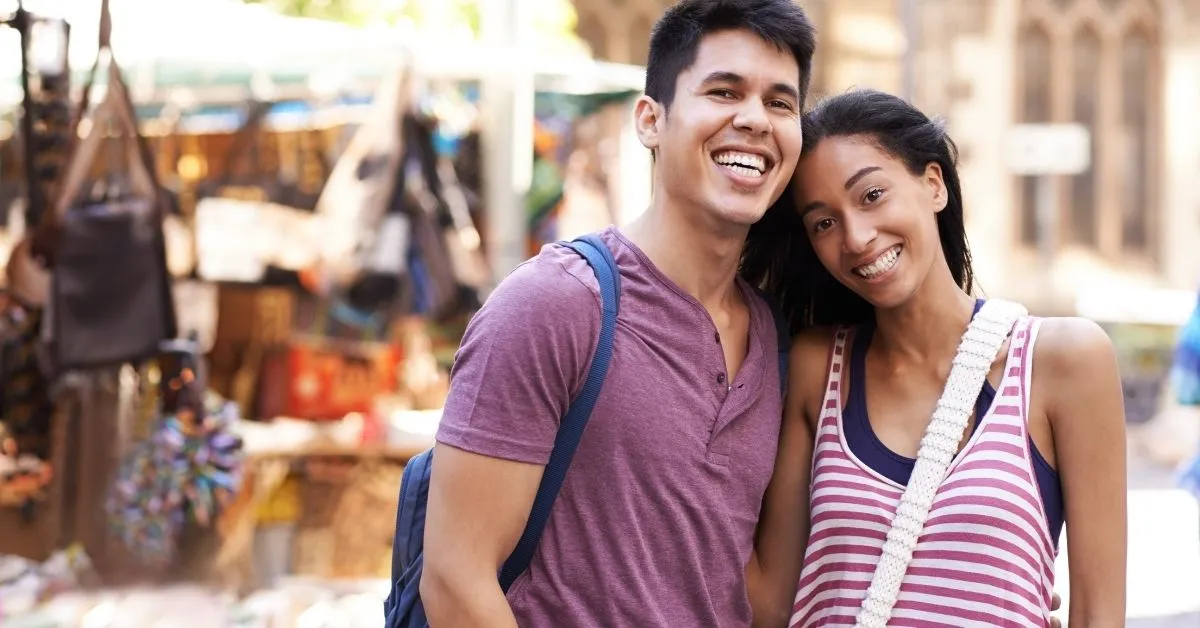
What Is Slow Travel?
Most backpackers typically seek to visit as many destinations as possible on a trip. Therefore, they choose to spend a few days in each place, seeing only the highlights before moving on.
By traveling in this way, you can visit around ten or so spots on a one-month trip, swiftly getting through your bucket list.
A slow traveler typically spends longer in a destination than a traditional backpacker.
Slowing down your trip in this way allows you to experience each place on a deeper level, learn more about the culture, and even get involved in the community.
A slow traveler who spends one month in a particular city will have a completely different experience than a backpacker who passes through for a weekend.
Slow traveling allows you to get a greater sense of life in other parts of the world. By spending a few weeks to a few months somewhere, you may feel more like you temporarily live there rather than on vacation.
The additional time allows you to explore more of the city and the surrounding areas. You are also likely to do more ‘local’ activities than just the tourist attractions.

How To Slow Travel
Slow travel is ideal for anyone who wants to travel for longer. However, it can seem that a one-year trip would be much more of a financial investment than a one-month vacation.
Therefore, many travelers worry that they will run out of money if they travel slowly like this.
However, there are ways that you can slow travel around the world without spending more money than you would on a shorter backpacking trip.
Here are five tactics you can use to travel slowly on a budget.
Visit Destinations During Low Season
We slow travel to break away from the traditional tourist mindset.
Therefore, to see a destination differently and save money, I recommend planning your trip so that you visit each destination in the low season, or at least towards the end of the high season.
As you know, hotels, tour operators, and even restaurants raise their prices at the beginning of the high season in anticipation of flocks of tourists.
However, as the season draws to a close and the crowds leave, prices come back down. So, arriving at this point is a brilliant idea if you want to travel on a budget.
Not only will you get better deals everywhere in the off-season, but you will also experience a much more peaceful and relaxed atmosphere.
Without the tourist crowds, it’s much easier to see a city for what it truly is and integrate yourself into the community.
However, the low season can mean extremely high temperatures in some parts of the world. Or, like in many tropical countries, the low season corresponds to the rainy season.
Even so, tropical rainstorms are usually short and heavy and don’t last all day. Therefore, you will still have plenty of opportunities to enjoy your time there.
Spend (At Least) One Month In Each Place
I recommend staying in each place for one month. If you’re used to staying just a few days in each location, one month may seem very long.
But I promise you, it is not. Aside from slowing down and exploring at a leisurely pace, you can snap up great accommodation deals if you commit to staying for a month.
You can usually get monthly discounts at hotels and Airbnbs. However, you might be able to rent a studio apartment for one month for even cheaper.
You’ll also be able to save money on car or scooter rentals. Usually, rental companies have better deals for long-term rentals.
Live Like A Local
To keep your day-to-day costs low, look at and copy how the locals live.
Although the western restaurants may feel familiar and comforting when you’re in a foreign land, the food in these restaurants is often 5 times the price of local eateries.
While it’s OK to treat yourself to home comforts once in a while, doing so daily will seriously dent your budget.
Some local restaurants also aim more towards tourists than locals, so prices will be higher. An easy way to find a proper local restaurant is to look for where you see the most locals eating.
Unless you’re traveling in Asia or South America, where eating out is extremely cheap, you’ll probably want to cook your own meals too.
Visiting food markets and buying groceries is a brilliant way to experience local life and keep your daily spending under control simultaneously.
PSSST. Want to get FREE accommodation in exchange for work?

Choose Land Travel Instead Of Flying
Traveling without any time restraints opens up the opportunity to travel via different (and cheaper) modes of transport.
Instead of flying, look into the possibilities of traveling between destinations via car, bus, or train.
Yes, the journeys will be much longer and less comfortable than taking a flight.
However, you could save a considerable amount of money. Plus, traveling by land allows you to see very rural parts of the country.
Volunteer In Exchange For Accommodation
One of the best ways to slow travel around the world on a budget is to volunteer in exchange for free accommodation and food.
For example, many hostels will let you stay for free if you spend a few hours each day cleaning the dorms and common areas.
While it’s not glamorous work by any means, the money it will save you could allow you to double the length of your trip!
Many other ‘ volunteer for accommodation ‘ options are available if you’re not a fan of the hostel environment. I recommend using a trusted platform like Worldpackers to find opportunities.
Worldpackers vet and verify all the ads posted so you can rest assured that the placements are legit and trustworthy.
On Worldpackers, you can find community projects run by local organizations or NGOs. This is a fabulous way to get involved in the community and make a real difference during your time there.
Volunteering on these kinds of projects can bring real meaning and purpose to your trip, with the bonus of having free accommodation, meals, and other benefits.
There are also work exchange placements in schools, where you will get to teach English to underprivileged children.
Or, if you want to get in touch with nature, you can volunteer on a farm, an eco-lodge, or a campsite.
Want to learn more? Read our Worldpackers review .
GRAB YOUR DISCOUNT ON WORLDPACKERS
Best Destinations For Slow Traveling On A Budget
Now, let’s talk about the best destinations for slow travelers.
United States
The great news is, if you’re based in the US, you don’t need to leave the country to travel.
The USA’s diverse states and landscapes make the country perfect for slow traveling.
What’s more, you can take scenic road trips from one destination to the next without having to splash out on any expensive flights.
However, the downside of traveling in America is that it is generally more expensive than in other parts of the world. Even so, one way to significantly cut your costs is to volunteer for accommodation at each destination.
Worldpackers has over 150 US volunteer programs on its platform, ranging from hostel work to homestays to farm work. Some unique opportunities you can get involved in in the USA include:
- Caring for abandoned and neglected horses in Reeds
- Working in a hostel bar in Lake Tahoe
- Volunteering on a yoga retreat in Hawaii
- Browse more opportunities here
South America
South America is a slow traveling paradise for those on a tight budget, dance lovers, and anyone looking to learn Spanish.
The continent is exceptionally cheap, both to travel around and for day-to-day expenses. Plus, South America is just as diverse as North America.
Slow traveling in South America presents a wide range of potential opportunities.
For example, you can trek Machu Picchu, explore the Amazon, party in Rio de Janeiro, and learn to salsa in Cartagena.
With so much to do and see here, you’ll undoubtedly want to extend your stay. You will find many brilliant charity organizations working across the continent.
They are always keen to offer free accommodation and meals to anyone who helps them out.
In fact, South America is one of the easiest parts of the world to find volunteering opportunities in.
For example, Worldpackers has over 1000 listings for volunteer placements in Brazil alone! You can:
- Learn about sustainable farming in Brazil,
- Paint artwork in a hostel in Chile
- Help to build an Earthship inspired art studio in Argentina
- Take care of the stray dogs in Peru’s Sacred Valley.
Asia is an incredible place to slow travel. You can take your time to experience the unique way of life in each Asian country and give some much-needed help to the communities.
Asia is also full of beauty, and short backpacking trips often miss out on so much. By slow traveling, you can get off the beaten path more and discover some of the hidden gems of this vibrant continent.
If you’re a native English speaker, you will find hundreds of volunteer opportunities to teach English to underprivileged kids in Vietnam, Cambodia, India, and many more countries.
There is also plenty of charity and community work that you can get involved in where you will actively see your help making a difference.
Some cool and meaningful volunteer placements you can find on Worldpackers include:
- Working with Autistic children in Ha Noi, Vietnam
- Teaching yoga in the Philippines
- Caring for stray animals on Thai island
- Volunteering in an orphanage in Nepal
- Browse opportunities here
Australia is one of the most loved backpacking destinations worldwide. The country offers so much natural beauty, tons of adventure, and plenty of once-in-a-lifetime experiences.
However, traveling around Australia and taking trips to the Great Barrier Reef, Whitsunday Islands, and Uluru can quickly become costly.
Many backpackers in Australia fall in love with a particular town or city and begin volunteering in hostels, enabling them to extend their stay.
It’s easy to find hostels that will let you volunteer in exchange for a bed in a dorm.
However, there are also other types of volunteering options available that offer a more authentic Aussie experience.
For example, on Worldpackers , you will find opportunities to:
- Help on farms in Western Australia’s wine regions
- Care for llamas in the Southern Tablelands of New South Wales
- Clean the campgrounds on the gorgeous South Stradbroke island
There are so many wonderful European countries worth visiting, all with their own unique heritage and charm.
There is so much to see, like the lush green English countryside, Portugal’s medieval cities, Italy’s beautiful wine regions , and the immense Swiss Alps.
Therefore, it is essential to travel slowly through Europe.
However, like the USA, Europe can be an expensive continent to travel around. Therefore, volunteering for accommodation is a helpful way to explore more places while controlling your expenditure.
There are so many fun volunteer opportunities on offer in Europe. Many help the environment, too, such as rejuvenating a forest in Portugal.
Other unique European volunteer placements on Worldpackers include:
- Au pairing in France
- Leading pub crawls in Croatia
- Living and helping on a yacht in Montenegro
- Taking care of reindeer in Norway
Final Thoughts On Slow Travel
As the travel industry finds its feet again, many parts of the world choose to keep additional entry requirements in place.
Therefore, it’s the perfect time to travel slowly, spend longer at each destination, and volunteer for a good cause.
And to help you have the best slow travel experience, we’re giving you $10 off your next Worldpackers membership .
Want to learn more about volunteering abroad? Read one of the following blog posts:
- Hostel work
- Workaway vs Worldpackers
- Worldpackers promo code

MY TOP RECOMMENDATIONS
BOOK HOTEL ON BOOKING.COM
BOOK HOSTEL ON HOSTELWORLD
GET YOUR TRAVEL INSURANCE
LEARN HOW TO START A TRAVEL BLOG
LEARN HOW TO VOLUNTEER ABROAD

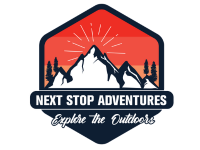
Outdoor Travel & Lifestyle Blog
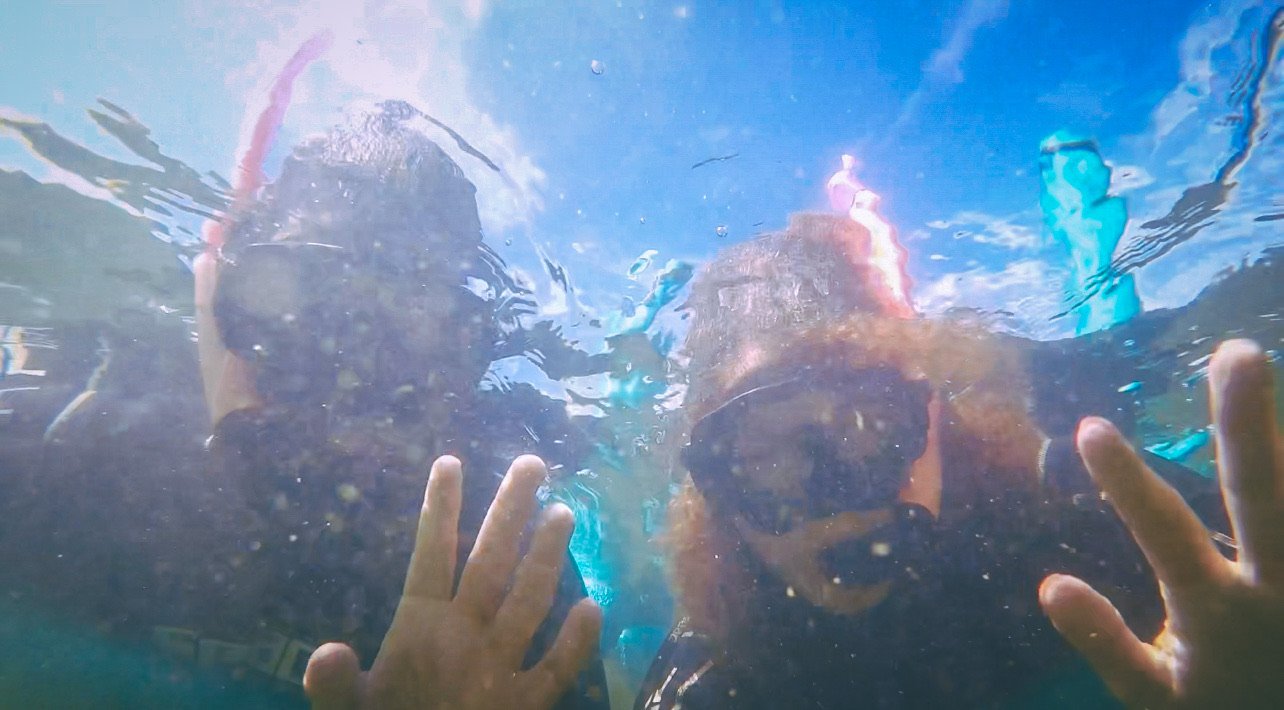
What is Slow Travel and 14 Ways to Fully Enjoy Your Destination
In this generation where fast-paced itineraries are pretty much dominating the travel scene, I must admit that I love seeing how slow travel is emerging as the antidote .
Some call it slow travel or slow tourism, while others like to refer to it as mindful travel .
No matter what you like to call it, slow traveling is a personal choice that prioritizes immersive experiences over a rushed itinerary or traveling for the ‘Gram.
It’s a compelling invitation to enjoy the journey and take it slow when exploring a destination.
Contrary to what many believe, slow travel is not a trend, but rather a lifestyle— a way of traveling with purpose.
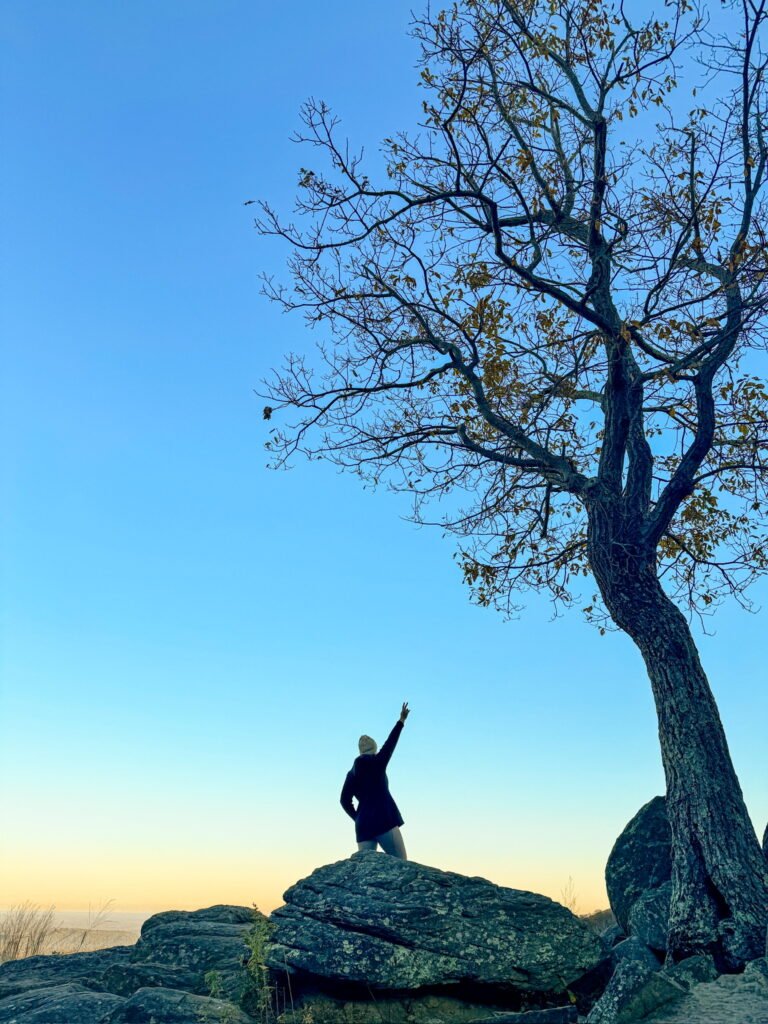
Experiences like scenic road trips , transformative journeys like the Camino de Santiago, and backpacking adventures are some examples of meaningful experiences that will tempt you to stay a little longer when you’re slowly traveling.
In this article, I’m sharing what I believe is the essence of traveling slowly as well as some ideas on how you can experience this unique way of traveling.
What is The Meaning of Slow Travel or Slow Tourism?
In simple terms, mindful or slow travel is about taking it all in . It’s about quality over quantity and taking the time to explore, connect, and discover culture, history, and people.
Instead of rushing through multiple cities eager to complete your bucket list of things to do and see, traveling slower allows you to genuinely enjoy every moment and immerse yourself in the destination.
Another great example is to embark on a transformative experience or a pilgrimage, like the Camino de Santiago , which has been on my mom’s bucket list for ages (Hi, Mom 👋🏼) .
These types of experiences reward you with countless meaningful and life-changing experiences that contribute to your personal growth that can’t be achieved with traditional tourism.
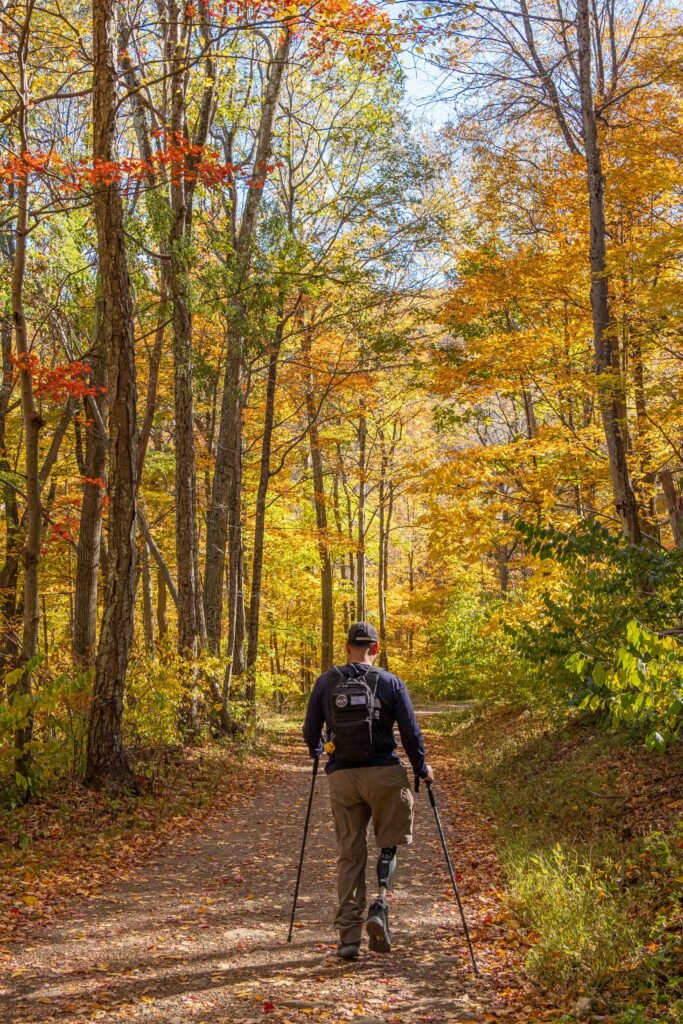
In slow travel, the journey is just as important, if not more so, than the destination, providing us with a meaningful travel experience .
Therefore, the decision to opt for a mindful experience when traveling is an intentional mindset for a slow-paced enjoyable experience.
Furthermore, it’s a deep desire to choose the road less traveled and explore off-the-beaten-path locations that bring more authentic experiences.
Overall, I think it’s great that travelers are seeking adventure travel and meaningful experiences as a way of escaping increasingly popular destinations .
It makes me happy to know that this is something we will continue to see more of!
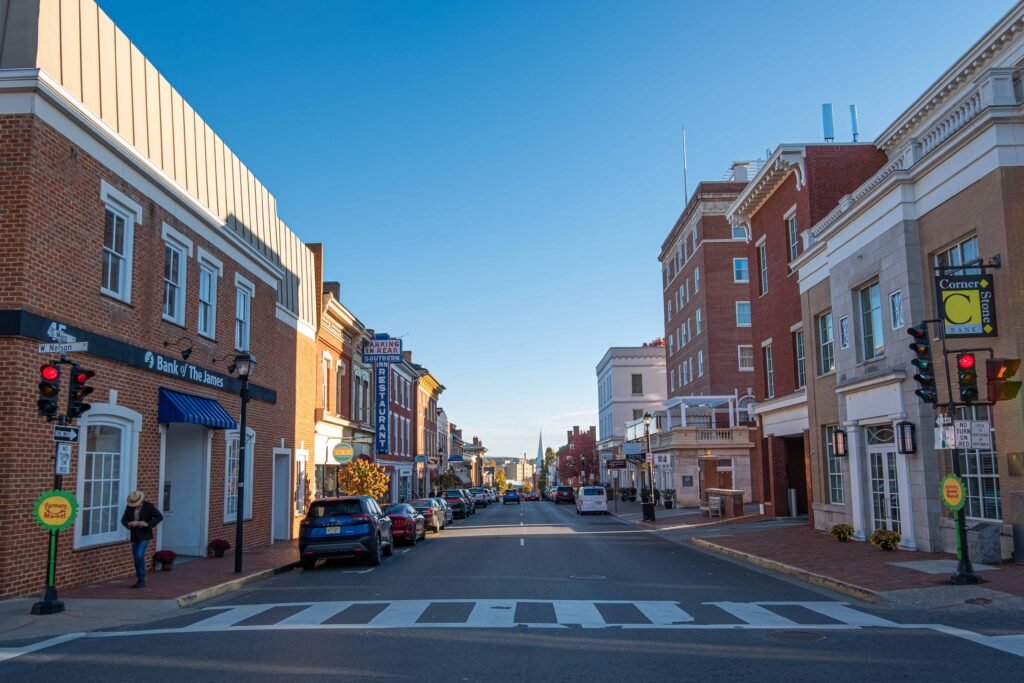
[BTEN id=”2594″]
How Can You Embrace A Slow Traveling Mindset?
1. choose the right destination.
Opt for lesser-known locations , away from tourist hotspots , and extend your trip to include secondary cities. Visit smaller towns, quaint villages, and places with rich history.
Before selecting a travel destination, you can also check its sustainability score for eco-friendly options.
2. Support Local
Visit local businesses and markets, dine at local family-owned restaurants, take a cultural tour, and explore the possibilities of choosing local lodging options .
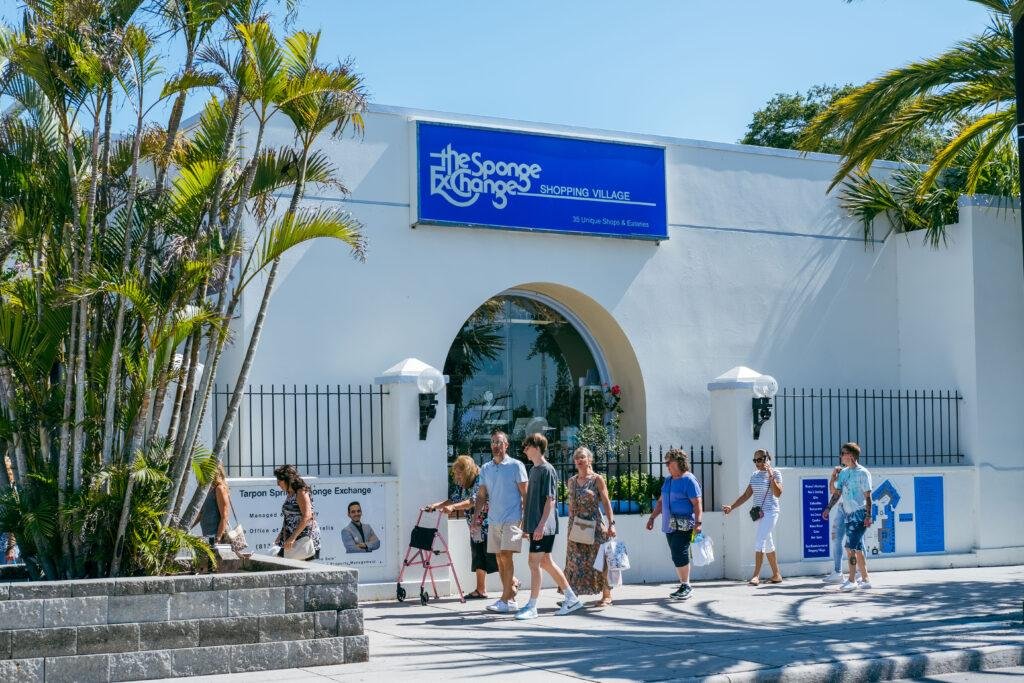
3. Embrace Sustainable Practices
Practice sustainable tourism and eco-tourism and be responsible when traveling. Opt for eco-conscious accommodations and be mindful of over-tourism.
14 Ways to Immerse Yourself in a Destination
Although there are many ways in which you can enjoy a mindful travel experience, here are my top choices of slow travel examples.
1. Take a Scenic Road Trip
Going on a road trip and allowing flexibility in your itinerary is an incredible opportunity to just go with the flow and discover what a destination has to offer.
You can pull off to the side of the road for an epic sunrise, take detours to explore hidden spots , and add spontaneity and joyful experiences to your trip.
A scenic road trip also provides the perfect opportunity to connect with the landscape at your own pace.
2. Stay in Airbnbs or Bed & Breakfasts
For places to stay when slow traveling, homestays like Airbnb or bed & breakfasts are pretty much the most authentic experience when it comes to lodging.
An intimate glamping experience by the river , a relaxing cabin in the mountains, a bright and airy beach house, or a bed & breakfast in a historic downtown can elevate your trip experience .
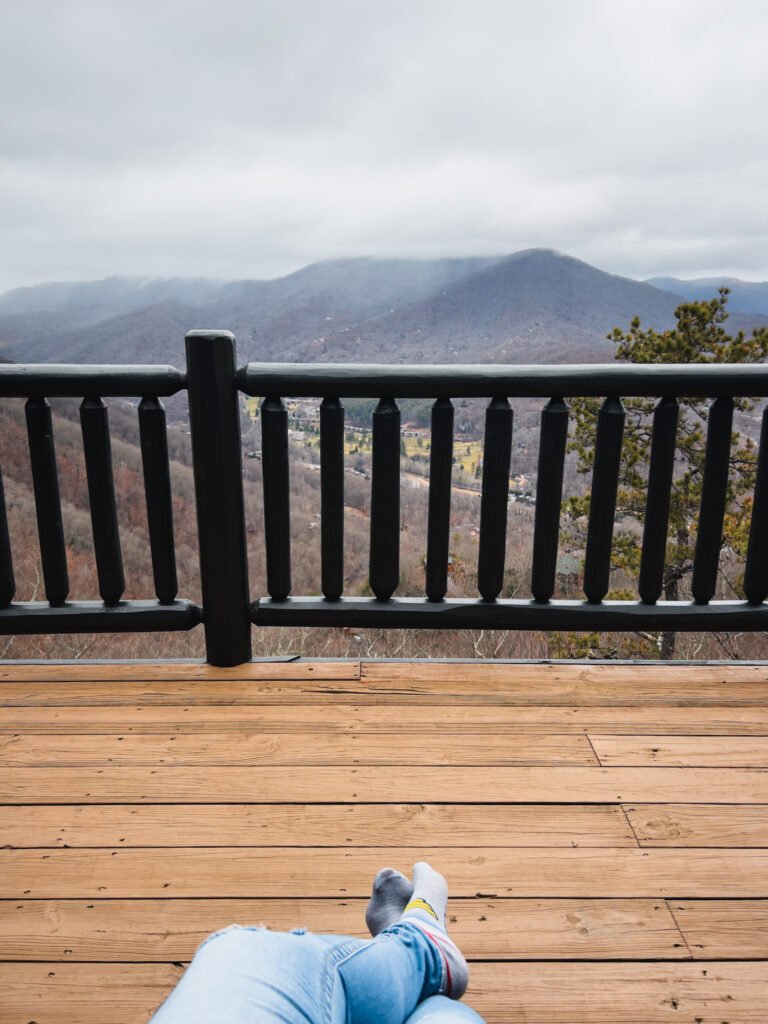
3. Embrace Digital Detox
I think that disconnecting from the digital world is one of the most important aspects of mindful travel.
Reducing screen time allows you to fully engage with the surroundings of the places you visit and be present in every moment.
A digital detox also allows you to absorb the sights, sounds, and unique characteristics of a destination without any unnecessary distractions.
4. Hike or Bike Through Nature
Consider natural settings or destinations with picturesque landscapes to explore on foot or biking.
Whether it’s hiking in the desert or the forest or walking on the beach, exploring nature by foot or bicycle allows a deeper connection.
Hikes and nature walks also allow you to absorb all the beauty of off-the-beaten-path destinations.
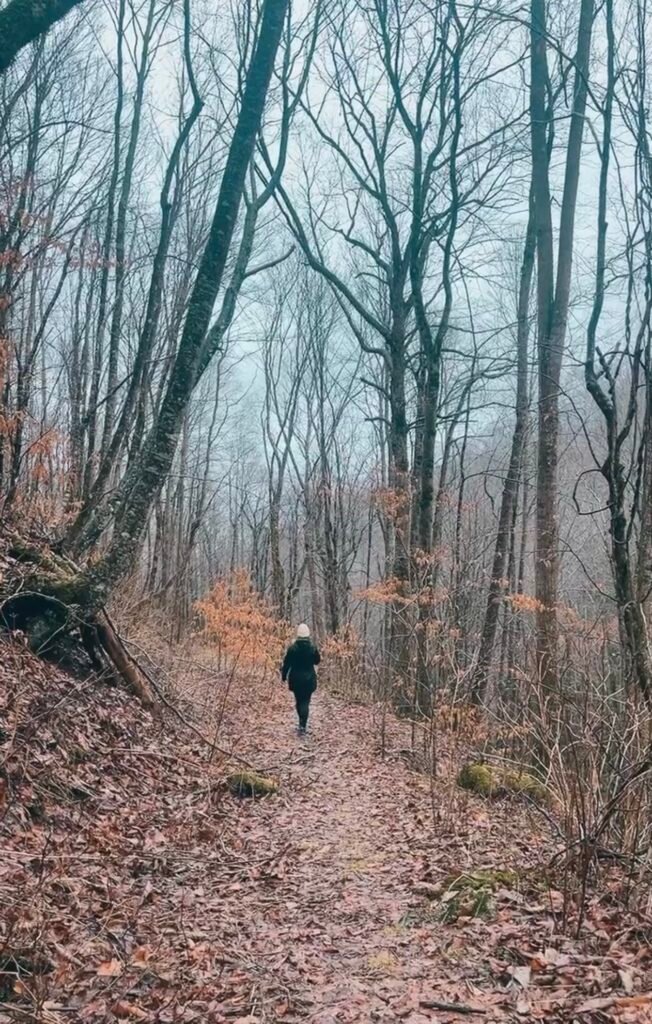
5. Attend Cultural Festivals
Another great example of slow travel is to plan your trips around local cultural festivals and events of the destination you want to visit.
Local festivals can give you a unique and authentic glimpse into the traditions , music, and festivities of a destination.
Interacting with locals in this vibrant and joyous atmosphere is an incredible way to experience the culture of many beautiful places around the world.
6. Travel During Off-Peak Seasons
This is something that I’m intentionally aware of when planning our travels, especially when visiting National Parks or popular destinations.
Not only does traveling on shoulder seasons allow for fewer crowds, but it’s also the best way to enjoy your trip without stress.
When you travel during off-peak season , you have the opportunity to see the charm and characteristics of a destination.
Visiting a place that is not overrun by tourists can result in a rewarding and authentic experience.
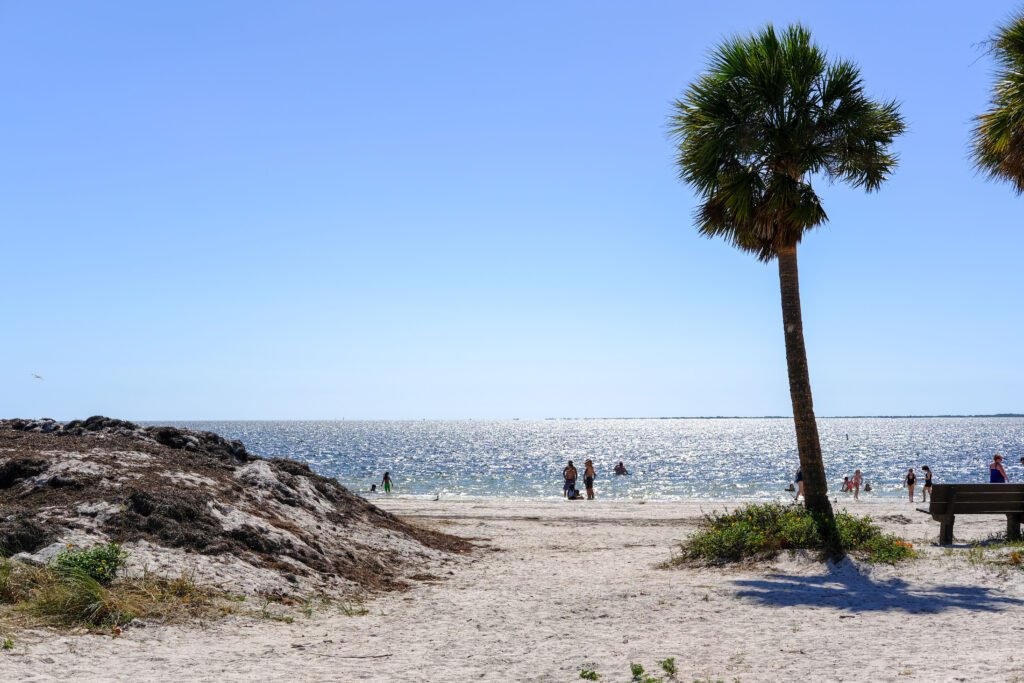
7. Go on a Spiritual Journey or Pilgrimage
As I mentioned before, Camino de Santiago came to my mind when writing this article as it’s one great example of slow traveling.
As a traveler, this type of journey through cities offers an incomparable reflective experience for your soul both mentally and physically.
Other journeys such as thru-hiking the Appalachian Trail or the Pacific Crest Trail, can be incredible adventures of a lifetime .
The landscapes, traditions, and fellow travelers and thru-hikers along the way will take part in a life-changing experience that’s a true example of what meaningful travel is.
8. Backpacking Adventures
Backpacking trips (backcountry) are a popular way of travel for outdoor enthusiasts that encourage a minimalist and immersive travel experience in the great outdoors.
The great thing about backpacking is that by planning accordingly, you can consider a more flexible itinerary to allow space for exploring and taking pictures of lesser-known hidden spots along the way.
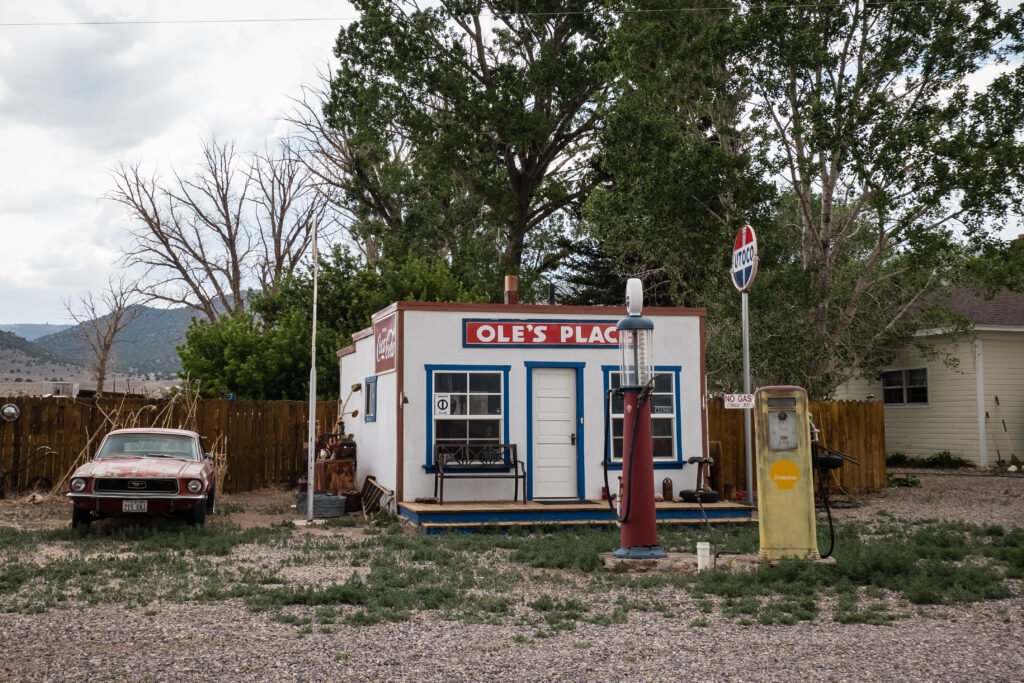
9. Explore a Location by Train
Train travel has gained quite a popularity in the last few years and I’m here for it.
Not only does traveling by train provide breathtaking scenic views but it also provides an opportunity to glimpse at unique landscapes that you may not be able to see by foot or car.
The leisurely pace and opportunity to hop on and off at different stops is an amazing way to experience places to visit that are not commonly on a typical tourist’s radar.
1 0. Culinary Experience
Nowadays, more and more travelers are in for the culinary experiences of their destination and are not afraid to try something new.
I was reading up on this recent study from booking.com and it reveals that a whopping 81% of travelers are interested in indigenous cuisine.

And I get that! It’s no secret that food is one of the best ways to indulge in the culture of a different place. And of course, we’re not ones to complain!
I’ve also found this to be one of the reasons why slow tourism encourages you to learn about the culture of a destination by exploring its local culinary scene .
Visiting local markets, indulging in street food, and dining at authentic local eateries can enhance your travel experience in each destination.
11. Take a Walking Tour
When you think about slow travel, walking tours are like the gold standard. They embody the idea of leisurely adventure that captures the essence of a destination.
By going on a walking tour when traveling, you can check out landmarks, explore the streets, and absorb the atmosphere.
It’s also a great way of diving into a place’s history since you get to listen to intriguing stories and tidbits that are mostly known by the locals.
12. Cultural Monuments and Historic Sites
As slow travelers, you take an interest in visiting historic sites to learn the history and significance behind a destination’s iconic landmarks.
Exploring historic sites and ancient architecture gives you a better understanding of the aspects of the cultural heritage of the destination you’re visiting.
It also grounds you in many ways, like recognizing that you are a part of something greater and that the world’s history is somehow connected with our own.
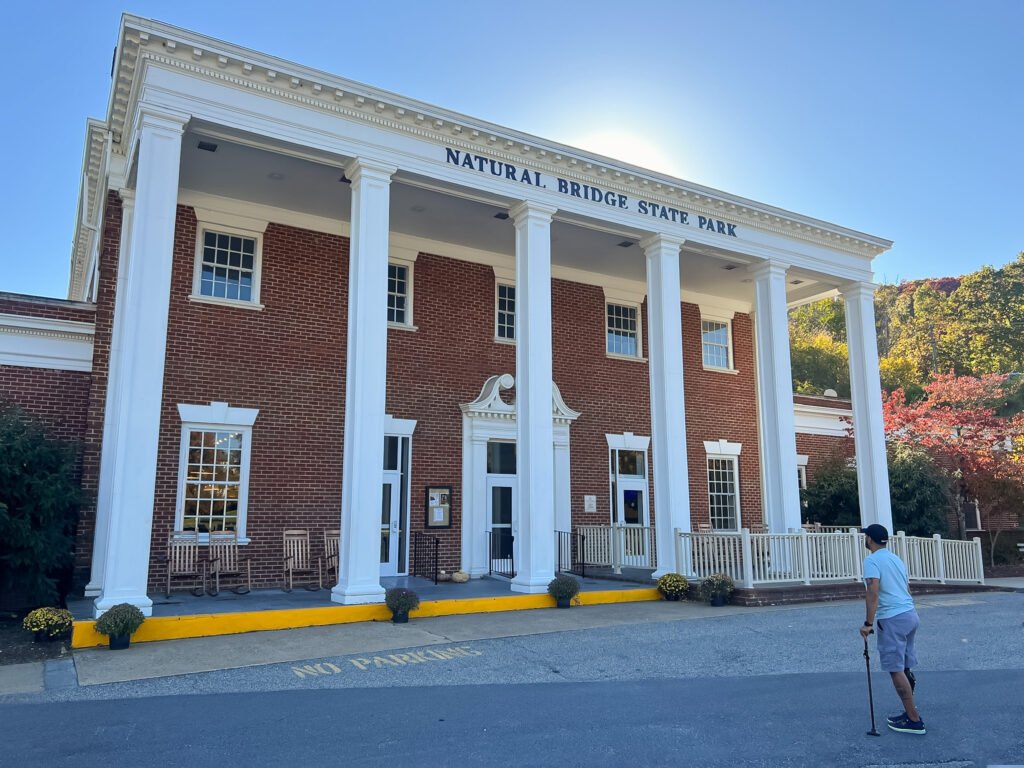
13. Visit a Local Winery
A wine-tasting experience or a wine tour at a local winery can provide an amazing sensory experience , even for non-drinkers like myself.
Traveling to wine country or visiting wineries is also a great way to create deeper connections with the people you are traveling with.
Furthermore, wine regions are typically situated in places with great scenery and breathtaking landscapes that allow you to naturally unwind and enjoy the experience.
14. Chase Waterfalls
Waterfalls are the epitome of off-the-beaten-path locations that can add up to more rewarding experiences .
The beautiful landscapes, navigating through the trails, tracing the sound of the falling water , and feeling the mist on my face are some of my favorite things about exploring waterfalls.
In many ways, chasing waterfalls kind of becomes like a metaphor for slow travel— it’s about the adventure of getting there , and not just snapping a pic and moving on.
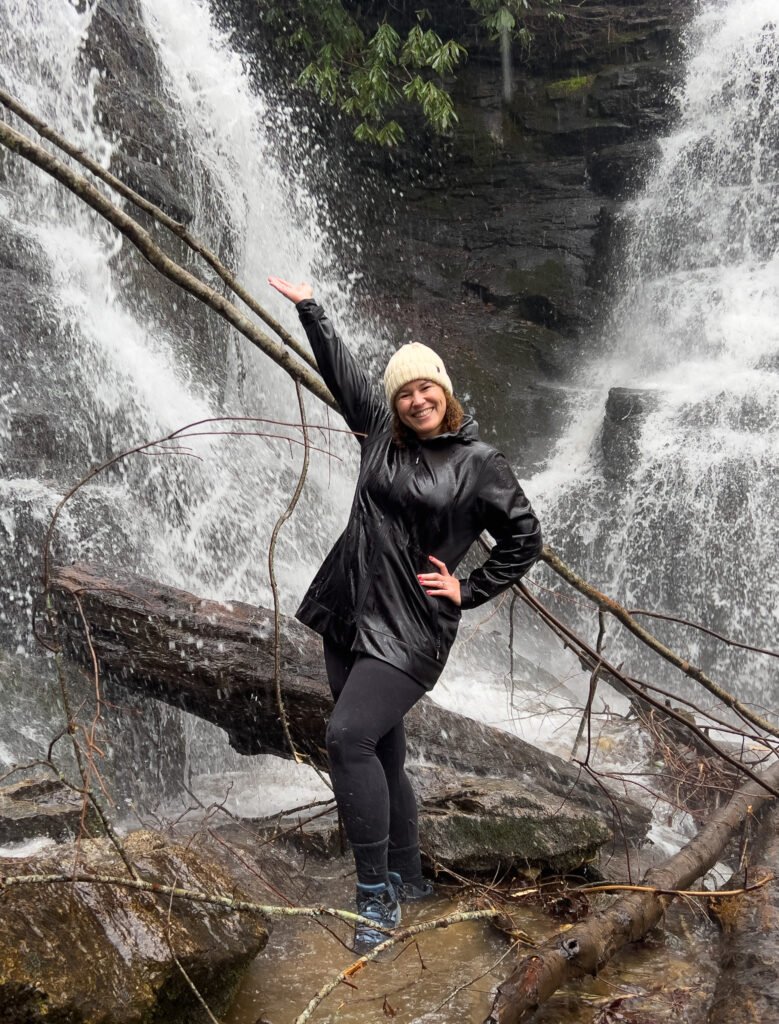
Each waterfall becomes a destination in itself and a mindful travel experience where you can deeply connect with nature and be present in the moment.
Whether it’s hiking to remote falls or discovering cascades, chasing waterfalls provides an awe-inspiring adventure that uplifts your senses.
Final Thoughts on Embracing a Slow Travel Experience
As you might already figured out, slow travel is the complete opposite of the typical travel frenzy we are seeing these days.
I’ve realized that the generation we’re living in travels for others instead of for themselves.
It’s sad to know how many people choose their travel destinations solely based on the potential boost it can bring to their social media following and engagement.
People have forgotten how to live in the moment and how to make memories.
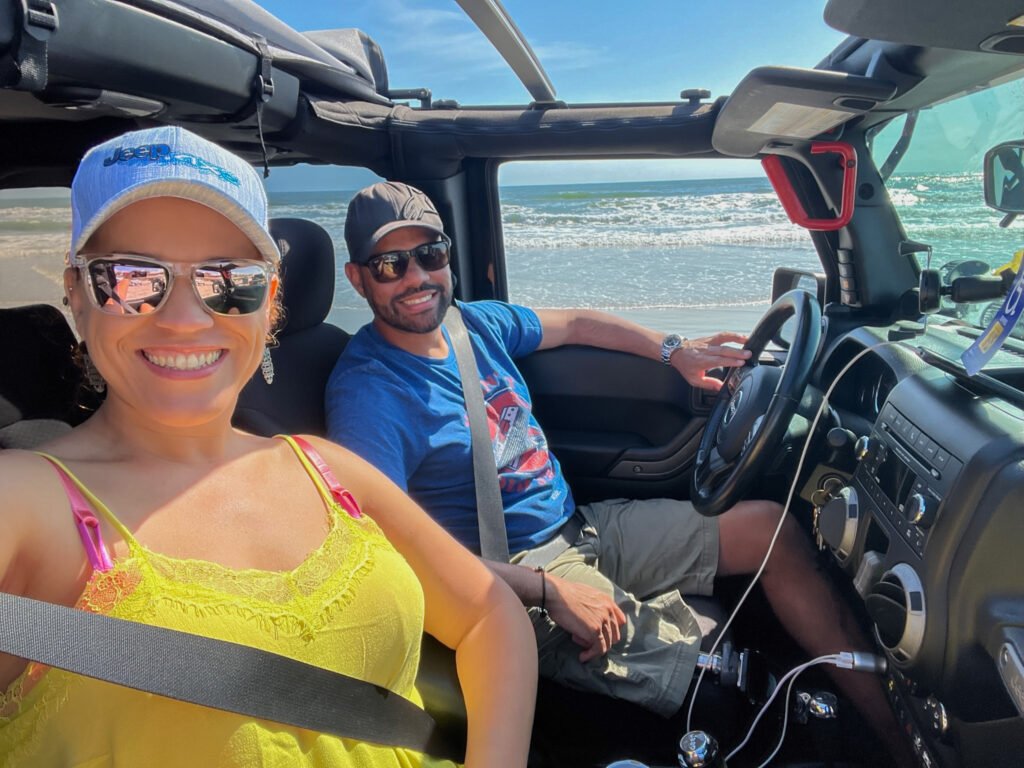
They are mistakenly taking for granted the many incredible discoveries and experiences that life can offer.
Hence my affinity for slower travel—because it’s about taking it easy, embracing the journey, and living the heck out of the adventure!
So next time you’re planning a trip; whether it be a road trip, visiting a quaint town, or venturing out into an off-the-beaten-path destination, remember that by traveling slowly you can HIT PAUSE and truly enjoy and LIVE the experience.
Save it for later!

About the Author

Yanitza Ninett
Yanitza is an avid adventurer with 15+ years of hiking experience and outdoor travel. As a PADI-certified scuba diver, she's also passionate about ocean conservation. When she's not exploring the great outdoors, Yanitza obsesses over The Vampire Diaries and dreams of traveling to Mallorca, Spain.
- Yanitza Ninett https://nextstopadventures.com/author/nextstop Ultimate Guide to Chasing Waterfalls and Hiking at Tallulah Gorge in Georgia
- Yanitza Ninett https://nextstopadventures.com/author/nextstop 11 Things to Do in Helen, the Beautiful Bavarian Town in Georgia
- Yanitza Ninett https://nextstopadventures.com/author/nextstop 10 Tips to Maximize Your Adventure Travel Budget and Save Big
- Yanitza Ninett https://nextstopadventures.com/author/nextstop 10 Amazing Things to Do For an Epic Weekend in St Augustine
Leave a Comment Cancel reply
- Work + Money
- Relationships
- Slow Living
What Does Slow Travel Mean? (And How To Do It)

The first time I traveled on my own, I was 19 and studying abroad in the Netherlands. Every weekend was a mad dash to see a different city in 48 hours, and to experience as much of each city as possible — no museum, cathedral, park, or touristy attraction left unturned. 😵💫
“That breakneck speed, while a great tool to check destinations off a list, was no way to truly experience a destination.”
Spring break was the maddest dash of all, encompassing four cities in nine days and about half as much sleep as I should’ve gotten. Barcelona to Rome to Florence to Venice, then back in time for an 8 a.m. class on Monday.
I was beyond lucky to have had that experience, learning how to travel on my own, how to figure out a new city’s public transportation, and how to manage my time and budget. But that rapid pace began to set the tone for future trips I’d plan. A week in France? Make it two nights in every city. Three days to travel the whole of Ireland? No problem.
That breakneck speed, while a great tool to check destinations off a list, was no way to truly experience a destination . During the weekdays while abroad in the Netherlands, I absorbed characteristics of the culture: The 10 a.m. coffee break everyone seemed to take, the food folks would eat for lunch, the way no one drew their shades at night. But the quick trips were something different. Sure, I checked Prague off my list — but I couldn’t even tell you how to say “thank you” in Czech, which sort of makes you question what the purpose of travel is in the first place.
“‘Slow travel’ presents an alternative to the see-every-country ethos.”
“Slow travel” presents an alternative to the see-every-country ethos. It tells us to accept that we won’t experience the entire world in one lifetime, and presents more sustainable travel options.
What is slow travel?
Like slow living , slow travel comes from the mother of all “slow” movements: Italian political activist Carlo Petrini’s International Slow Food movement, founded in 1989.
“At its core, I think slow travel is about intentionality and connection,” says Gi Shieh , a slow travel content creator. “It’s about spending more time at a destination to immerse yourself fully in the beauty and uniqueness of the land and its people.”
“Simply put, traveling slowly means staying for longer in one place.”
Simply put, traveling slowly means staying for longer in one place. Say you have nine days to travel — instead of hopping to three different cities or countries, consider spending all nine days at one destination, really getting to know the area.
Slow travel might also look like choosing destinations more off the beaten path, avoiding over-toured spots. According to CNN, some of 2023’s worst destinations for overtourism included Amsterdam, Phuket, and Venice, but some less traveled, alternative destinations might include the Netherlands’ Utrecht, Thailand’s Chiang Mai, or Italy’s Tuscan countryside.
Take the opportunity to connect with local people at your destinations. Stay in smaller bed-and-breakfasts, dine in small, locally owned restaurants, and chat with shop owners.
“In general, move around less — and when you move, move slower.”
And when choosing transportation methods, you’ll want to think about the most sustainable options. When possible, replace planes with trains; or car rides with bikes and walks. In general, move around less — and when you move, move slower. It might take a few more hours to get from point A to point B, and that’s kind of the well, point. You’ll understand the landscape of a country from your train window, or the way the wind smells while you’re riding a bike.
“Slow travel also means taking the time to note all the little details that make a place beautiful,” says Shieh, who also runs a blog on slow travel and sustainable fashion. “Like, how the Mediterranean sun hits the laundry drying on a balcony in the south of Italy or the specific cadence of honks of Vietnamese motorbikes during rush hour in Hanoi.”
What are the benefits of slow travel?
Besides lowering the carbon footprint of your trip, traveling slowly gives you a more mindful connection to the place you’re visiting. You likely won’t remember the time spent waiting in line to enter a popular sightseeing destination, but you will hang onto the conversation with a friendly local or the way you felt after a long, leisurely lunch.
“Traveling slowly gives you a more mindful connection to the place you’re visiting.”
Less time spent on planes or tour buses zipping around to new spots means more time (and money) to spend at restaurants that cook with local ingredients or wandering a town and picking up a handmade trinket that catches your eye. And when you choose less heavily toured destinations, it takes pressure off of over-toured spots with thinly stretched resources, like Hawaii or Bali.
Tips on traveling more slowly
1. plan to take some extra time..
“Unfortunately, in today’s society, it’s hard to step away for an extended period of time,” says Shieh, noting that travel itself is a luxury. “It’s important to acknowledge that slow travel is a huge privilege,” she says. “I feel so lucky to be able to experience the world at a slower, more intentional pace, and not everybody has the opportunity to do so!”
“If you only have a short travel window of a few days, use it to explore destinations closer to home that don’t require a flight.”
Not everyone has two weeks or more to spend leisurely roaming a foreign country, but that doesn’t mean you can’t still travel more slowly. Plan trips many months in advance and for as long as you feel comfortable — maybe a six-day trip becomes a nine-day one that you spend in just one place. And if you only have a short travel window of a few days, use it to explore destinations closer to home that don’t require a flight.
And while traveling, “don’t overpack your itinerary,” says Lauren Fremont, executive director of the Winegrowers of Dry Creek Valley , a small wine region known for slow travel and sustainable practices. “Leave room for unexpected delights and meaningful connections. That’s where the magic happens.”
2. Do your research.
“Think about going beyond the pictures you’ll take for social media.” – Matilda Reuter Engle, proprietor of Middleburg Hospitality
With a little extra time and planning, slow travel becomes a lot more feasible. Do your research on destinations, rather than just heading out where you’ve seen others go. Think about what you want to learn and experience during a trip, says Matilda Reuter Engle, proprietor of Middleburg Hospitality , which is focused on preserving historical traditions via hospitality in Virginia Piedmont. “Think about going beyond the pictures you’ll take for social media,” she says. “Identify the lifestyles, history, and ancestral traditions that ignite your curiosity.”
If you’ve planned for a bit more time, consider stacking destinations relatively close to each other to make your travel more sustainable. For example, instead of spending a week in a European country this year and a week in a different European country next year, try doing the entire two-week trip in one go.
3. Stay at B&Bs or small hotels.
Once you have your destination, look for small business accommodations. Bed-and-breakfasts are fantastic — usually independently run, they pretty much hand you the opportunity to engage with the owners and the local community.
Choose small hotels over larger ones, especially all-inclusives that tend to use resources like food and water inefficiently. Of course, there are exceptions to this rule — some hotels have fantastic sustainability practices, but finding those involves, again, lots of time and research.
“If you go the Airbnb route, consider renting a room in house rather than an entire place to yourself.”
If you go the Airbnb route, consider renting a room in house rather than an entire place to yourself. Your host should have a wealth of information about exploring the area like a local, and staying with residents helps minimize your impact on the area’s housing stock.
4. Find ways to connect with the culture.
Along with accommodations that prioritize sustainability, Fremont looks for “experiences that showcase the region’s unique history, food, and traditions,” she says. “It’s about seeking authenticity and supporting businesses that share our ethos.”
“Maybe you join a fishing crew for the day and get to eat your catch, or your do a cheese tasting at the farm where it’s made.”
Read up on tours and activities that immerse you in the local culture — maybe you join a fishing crew for the day and get to eat your catch, or you do a cheese tasting right at the farm where it’s made, or you take a cycling tour from town to town.
“Go with the intention of honoring diverse ways of life, and stepping away from the fast-paced, technological world so many of us reside in on a daily basis,” says Engle. And if language is a barrier, Shieh offers that Facebook events and expat forums can be particularly helpful.
5. Ease yourself into it.
“Try not to put too much pressure on yourself to change your travel habits right off the bat,” says Shieh. If your travel history has looked anything like mine, that pedal-to-the-metal mindset won’t change overnight.
“If your travel history has looked anything like mine, that pedal-to-the-metal mindset won’t change overnight.”
Maybe you start by bringing more intentionality into your domestic trips. If you’re traveling for a wedding, consider spending the week before or after exploring the area. Perhaps next year you spend a week somewhere you would’ve typically spent a few days, or you replace one or two flights with train rides. And then take it from there.
“We have an entire lifetime to travel.” – Gi Shieh, a slow travel content creator
“We often feel this pressure to see it all while we’re young,” says Shieh, “but actually we have an entire lifetime to travel.” Something that helped me feel better about doing and seeing less while traveling? No matter how fast you travel, you’ll never see, let alone experience, the entire world.
“By spacing your travels out over the course of a few years or even a few decades, it removes some of the pressure and allows you to fully settle into the experience that is happening right now,” says Shieh.
Make peace with not seeing the whole green earth, and it will allow you to make deeper connections in the places you do. 😌
Natalie Gale is a Boston-based freelance journalist. When she’s not writing about art, food, or sustainability, you can find her biking to the farmers’ market, baking, sewing, or planning her next Halloween costume. Say hi on Instagram !
RELATED READING

How ChatGPT Can Bring Ease To Your Daily Mental Load
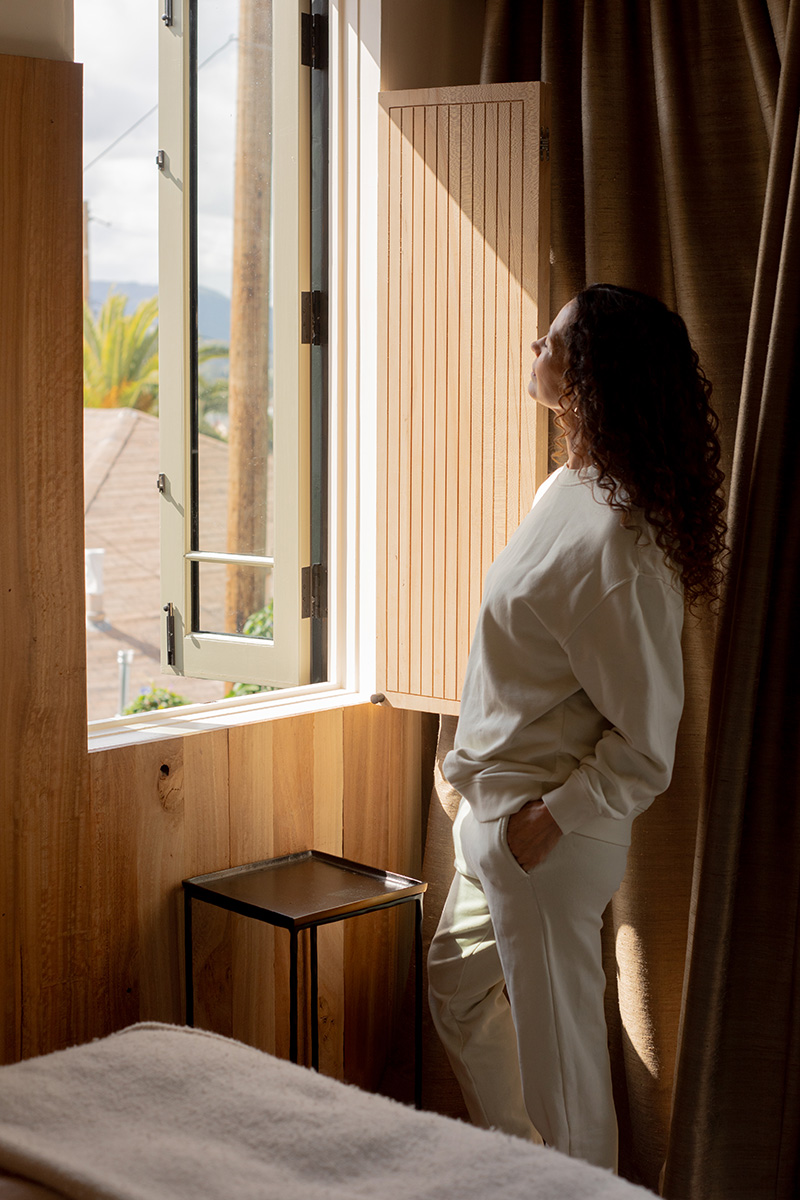
Are Naps Actually Beneficial?
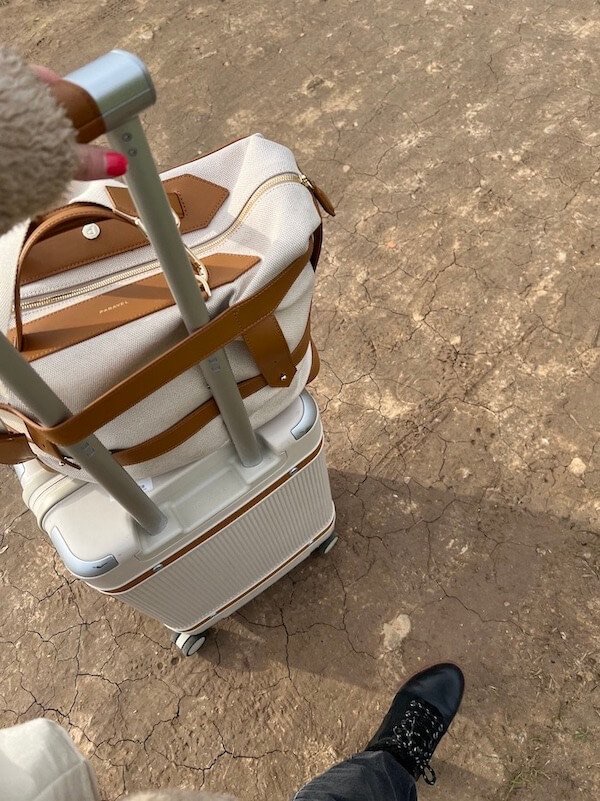
9 Sustainable Luggage Brands To Travel The World (2024)
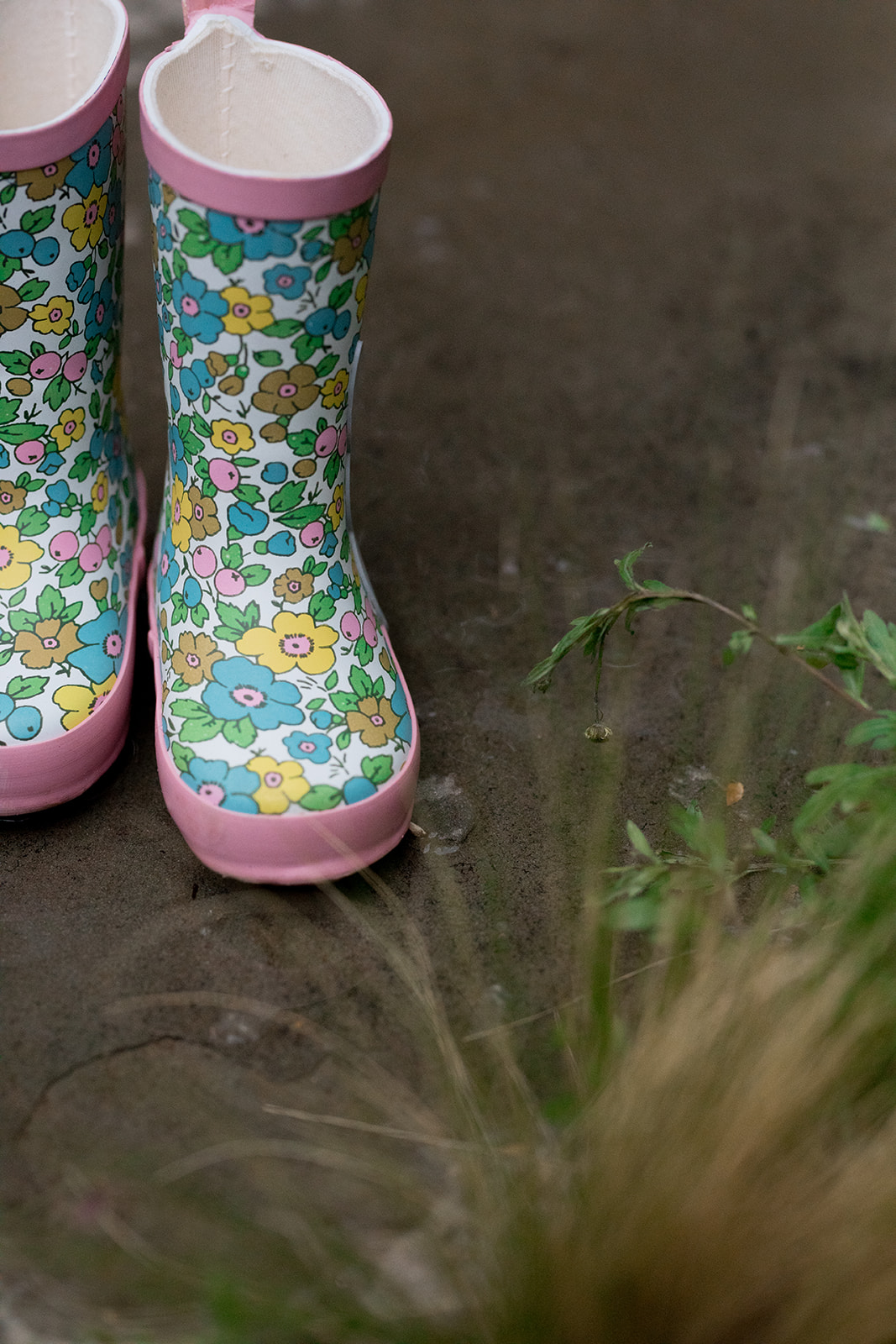
Why I'm Gardening With My Kids (Even Though I'm Not Great At It)
The Ultimate Guide to Slow Travel

Art & Culture
Sightseeing
Food & Drinks

Kelsie Colclough | Live the World
July 4, 2022
Slow travel to discover true wanderlust.
Slow travel is becoming more and more popular. We think it’s the future of travel. Our Ultimate Guide to Slow Travel is all about embracing this immersive travel trend. We’re not here to judge other ways of travelling. Heck, more people travelling is a good thing any way you can! But, if you’re curious about how to slow travel then our guide is just what you need.
Find the best activities for you on our map!
Trust us - travelling slowly is exactly what you need to do to fall in love with your next travel destination. We’re not about judging how people travel, only to show you that there’s another option! We’ve put together our Ultimate Guide to cut down all those myths about slow travel, tell you why we love it so much, and tell you how to slow travel to get you started!
Say bon voyage to the tourist crowds and join us on an in-depth journey. Keep reading to have all your questions answered, plus the best slow travel destinations recommendations and sustainable travel tips! Our ultimate guide is everything you need to begin your journey down the slow travel rabbit hole…
The slow travel basics

These are the questions we get all the time about slow travel; What is slow travel and how do I do it? The meaning of the word “slow travel” can seem obvious once you first see it, but we’re here to share all the info you need to really dig in and get your journey started.
What is slow travel?
Slow travel is a way of travelling that gets to the heart of why we love the journey. Go at your own pace to discover authentic experiences as you get off the beaten track and discover local gems. The slow traveler explores their dream destinations at their own pace, avoids the traps of mass tourism, and enjoys a rich travel experience. Keep reading to get all the info you need on the art of slow travel!
Where did slow travel come from?
Slow travel is a branch of the slow movement. You’ve probably seen the slow fashion movement that pushes against mass production of clothes in fast fashion. Maybe our foodie friends know slow food restaurants, which focus on local and seasonal dishes for authentic experiences rather than mass produced meals. Slow travel originates from the “slow food movement”, which got its start in Italy as a protest against McDonald’s.
Some define slow travel as public transport or taking months to explore one place. None of those definitions are exactly wrong, but they miss out on what makes slow travel so great. Whether you’re enjoying a 2 day city break or taking a road trip across Europe, any trip can become a slow travel trip as long as you stick to the intention and our top tips.
Who goes slow traveling?
You might have gone on a slow travel-like trip without even realising. Backpacking, camping, and hyper focused city trips all fall under the beautiful umbrella of slow travel. The slow travel movement is an accessible movement for all from students on a budget, luxury travellers, and retirees. No two slow travellers look alike! Slow travel has nothing to do with age or your income. It’s all about what experience you want out of traveling.
Since you can really customise a slow travel trip and delve in deep to a local culture, we find that slow travel is the best option for many solo travellers and those interested in getting a full and authentic experience of their destination.
Are slow travel and sustainable travel the same thing?
Eco conscious travel or sustainable travel does have some overlap with slow travel. But they’re not exactly the same thing. By moving away from mass tourism and into more sustainable practices, slow travel is by its nature more eco-friendly than other trips. Unlike the usual sustainable travel tips though, slow travel has its own mentality.
While sustainable travel focuses on the effect that trips have on the environment, slow travel looks more inward. All those busy trips, crowded places, and wanderlust social media posts can have a negative effect on our mental health. In slowing the pace and taking things one step at a time, slow travel is (in our opinion!) a better experience for all involved - you and the planet!
Can slow travel be luxurious?
You can absolutely make slow travel trips on a higher budget. We know there’s this myth that slow travel is all about backpacking and while that type of thing does fall under slow travel, that’s not all it's about. Taste local expensive food, stay at luxury Airbnbs, and discover the best of the local culture on a luxury budget that’s right for you.
Our top 5 reasons to travel slowly!
Now you know what slow travel is all about. But have we convinced you to plan your next trip in the slow travel way? We’ve got all the reasons why you should hop onto the slow travel movement right here to get you thinking.
You support the local economy
Hey, big spenders! There’s just something nice about going to your local market and actually meeting the sellers. Slow is that, but on an even bigger scale. Major travel companies do have a habit of pushing you to major tourist spots and always giving you popular itineraries. We’re not saying that’s a bad option if that’s what you want from your travels, but slow travel gives you a local and authentic option.
By travelling slowly, you’ll probably be spending more time in one place. Dive in deep to the local scene to discover hidden gems, restaurants, and local events. You’ll be giving your hard-earned cash to smaller businesses and local artisans who need the money a fair bit more than your average top 100 travel company.
Slow travel can keep your budget low
We all want to travel more often! Slow travel helps to keep your travel costs down by focusing on one place and its surrounding area. You don't need a bunch of flights or train tickets to get the most out of your journey. Of course, if you’ve got a higher budget there’s plenty of slow travel destinations, hotels, and things to do for you as well!
Many digital nomads (those who work remotely while travelling) are often slow travellers. Taking a slower pace by spending more time in one area before moving onto your next destination keeps your transport costs much lower. And, of course, you get all the benefits of seeing the most of your next travel destination.
Slow travel can help the environment
Slow travel trips can involve public transport or some other sustainable way of travelling. Public releases way less emissions than the average plane! Slow travel can be done via the plane too, so long as you take your time at the destination, search for hidden gems, and keep your focus on the local culture.
You meet new people
Yes, you will meet new people however you travel! But we’ve found the slow travel community to be super welcoming. As you join in on sustainable travel groups and hunt down the best local things to in your area, you’ll find yourself surrounded by people who share the same mindset. You’re not just one in a crowd of tourists - you become an explorer ready to find the next gem.
Of course, if you’re hunting down authentic experiences there’s nothing better than getting tips from locals. Mass tourism might bring in the money, but it can have backlash. But you’re actually here for an authentic trip, in our experience, locals are way more friendly once you express that especially in places where tourism has had some downsides.
Remember why you love to travel
Have you ever been stuck in the airport wishing you were back in bed? Have you ever arrived at a destination you thought was beautiful on social media, but you arrive and there’s just a queue of people taking photos?
Slow travel gets to the core of why we fell in love with travelling in the first place.
Not to sound like a boomer, but when you travel just for travel's sake then it loses a lot of its magic. The local food that just melts in your mouth. Discovering the amazing places and hidden gems no one tells you about. Relax in the forest, up a mountain, or even in the Roman ruins inside a city park! Slow travel is about having a truly immersive travel experience. Escape your normal life and totally immerse yourself in the sights, sounds and smells of a new place, of a new culture.
Whatever you love about travelling, slow travel will dial it up to 11 . So what are the types of slow travel journeys and where should you go? Here are our top recommendations!
The types of slow travel journeys

Slow travel is more of a mindset than a pigeon hole category, but there are some holiday types that fall naturally into this type of travel. Road trips, backpacking, cycling journeys, and camping, can all be types of slow travel trips.
So long as you’re seeking out authentic experiences and taking your time, you can make any journey into a slow travel one. But here are some of our favourite easy slow travel trip types to give you some ideas.
Hop in your car and drive wherever you want! Road trips are an easy way of getting the group together and getting around to your dream destinations. Take a road trip across Europe, America, and more. Driving might not seem sustainable at first glance, but it’s better than taking the plane to each stop! Make sure to stop along the way at the best local places! Along the road, you’re sure to find a hidden gem or two.
Backpacking
Nothing is slower and more beautiful than getting around on foot. Take your time climbing to the mountain top and enjoy the view! Is there anything more authentic than Mother Nature? Feel the rocky cliffs and rivers beneath your feet on a slow travel backpacking trip. You can go backpacking almost anywhere. Some countries, like Thailand and Sri Lanka, have seen a major increase in the number of backpackers paying them a visit. We actually recommend visiting a less popular country for backpacking to avoid crowds and have the least touristy experience possible.
A solid choice for any traveller! Pitch up a tent and sleep under the stars surrounded by nature. Camping is a great choice as sites tend to be not far off great slow travel attractions. It’s good to take it slow sometimes and just enjoy your time with family and friends! Use your tent as a starting point on your adventure as you make your way to the national parks or nearby cities. We actually think camping is an underrated option, especially when there’s more options than you’d expect in the camping world.
Campsites are one of the most sustainable places to stay on your holiday, but to really max out those slow travel points we’ve found Pitchup to be super handy to find campsites in Europe that use renewable energy .
Get on your bike and get peddling! Why wait for your flight or get stuck in the crowd, when you can peddle past them all? Explore your next destination on wheels. You’ll cycle through national parks, to castles, ruins, and make your way through the cities. Some countries are a lot better for cycling trips than others, so keep reading to find the best slow travel destinations!
Train Trips
Follow the tracks across the country, across continents even! On the train, you can travel affordably and sustainably across country borders. You’ll be literally travelling more slowly and taking more time to enjoy the journey as well as the destination. Europe is a super popular destination for train journeys. Check out our slow travel destinations below to get some ideas going…
Our top slow travel destinations

You can slow travel anywhere in the world. But at Live the World we absolutely love Europe for slow travel beginners. Here are our top slow travel destinations in Europe, plus the best things to do for each country. Take your pick!
Netherlands
Known for its windmills and tulips, the Netherlands is one of the most beautiful countries in Europe. SUP your way across the canals of Amsterdam, hike the beaches of the less travelled but unique Frisian Islands, or even pick out plastic as you sail across the rivers. The Netherlands is the perfect destination for a cycling trip, a city day trip, and more.
Amsterdam is the major tourist attraction, but other cities have great activities to offer too. Check out our map to find the best slow travel places to go!
The heart of Europe! Belgium is an underrated destination full of hidden gems and gorgeous city trips. Belgium has some of the prettiest castles and nature reserves you’d never know if you didn’t see it for yourself. A perfect pick for a road trip through Europe and city breaks, Belgium is one of our top slow travel destinations.
Follow our 2 day itinerary in Brussels for a slow travel experience in Belgium’s capital!
Czech Republic
Backpack in the Czech Republic to enjoy a central European location with gorgeous mountains on its border like Sněžka. Take a city break in Prague to uncover hidden gems in its castle, local markets, and so much more. Prague is the #1 stop in the Czech Republic, but there’s great places across the country too like the beautiful city of Czechy Krumlov.
Our top tips on how to travel slowly

After racking our brains and hunting down the top experts in the eco-travel field, we’ve got all the best slow travel tips just for you. From ditching the packed itineraries to bamboo cutlery, these are the top tips from experts. Read even more tips on how to travel sustainably here.
1 . Buy local
This top tip came up no matter who we asked! So often, tourists will stroll by all the local and independent shops and gather at only the major centres. Of course, you’re helping out the locals this way. But you’re also keeping your carbon footprint low, by reducing all the miles goods have to travel when you shop locally. We’ve found some surprises at farmers markets, from gorgeous flowers in Prague to handmade wooden clogs in the Netherlands. Check out our map to find local trading posts!
2 . Do what you can, when you can
When you’re trying to do right by the environment and yourself, it’s easy to get a bit depressed about climate change. We spoke to Coren Munday, founder of bamboo cutlery company SeaForYourselfco , to get her perspective on slow travel. Coren, like so many of us travellers, was shocked by all the plastic she saw on the beach. When you’re in that situation, what can you do about it?
Coren let us know that, in the true spirit of slow travel, it’s best to focus on the here and now. Do what you can! Whether that’s picking up some plastic bottles as you backpack, swapping to bamboo cutlery, or simply taking a bag with you when you travel so you don’t leave your rubbish behind. Every little bit helps!
3 . Electric Detox
OK, hear us out. We know how handy our gadgets can be when you’re in a whole new world. Our friends at IndieCampers let us know how important taking some time off can be, though. Take a break from your phone and social media! I actually tried this out on a recent trip to Nottingham. It was weird going without my laptop and phone most of the time, and sometimes I did have to use my phone just to get directions. If, like me, you’re not quite ready to go cold turkey then just turn off your notifications and enjoy a stress-free day without refreshing your email inbox!
4 . Give back
The mindset of slow travel doesn’t start and end with just one person. You can spread the mindset of slow travel by giving back as you go. We don’t just mean money, though supporting local artists and events does go a long way. We mean supporting the local culture and community. Whether that’s chatting to the locals in their language when you can, supporting local businesses, or volunteering on projects around the world, you can travel in a way that isn’t all take. Sometimes we need to give back too!
5 . Take it slow - literally
We’ve said it before and we’ll say it again. Slow travel doesn’t just mean sticking to the train. But! We’d be lying if we didn’t include this top tip. After all, public transport is one of the best ways to get around depending on where you go.
The main thing is not to rush about from place to place. If you’re in a rush, then you’re not enjoying the journey. You could be in the most beautiful place in the world, but if you’ve been jostled about by the tourist crowd, honked at in traffic, and need to go to the next activity in an hour, then it doesn’t seem that pretty. It’s important to take things at your own pace, so you can really enjoy your experiences.
Everything you need to pack for a slow travel journey
Alright, you’ve picked your destination and you basically now have a degree in slow travel. You’re ready to go. But what are the essentials to pack for a slow travel trip? Of course, having an umbrella, jacket, and spare bag for waste, are always needed. We’ve put together a list of the best things to bring!
While you’re out exploring, you’re sure to find beautiful places and hidden gems. Get your phone camera or DSLR ready for your best shot. Slow travel is all about taking your time and enjoying the moment. What’s more slow travel than capturing the moment forever on film? The big thing to remember is the intention. If you get caught up just taking photos to show people later, then you’re not enjoying the trip anymore. Use your camera to help you remember what you love later - don’t make the camera the star of the trip.
2 . Portable phone charger
Sometimes you’ll be out hiking and your phone will run out of battery and, next thing you know, you’re following a random sign to the nearest village in the hopes of getting directions. Don’t be like me. Learn from all the mistakes of trekkers before you and bring along a portable phone charger to save yourself the stress. Perfect too for group campaign trips and city day trips. You’ll never regret bringing one of these guys along.
3 . Cross body bag
Nearly every traveller under the sun has one of these for a reason. Keep an eye on your most important belongings without lugging around a massive bag as you go. Crossbody bags are a great pick for day trips in the city and hikes too (easy access to snacks!). You can get ‘em second hand, but sometimes you just want to splash out and get something nice. For a more luxury budget with a slow fashion heart, check out STOW .
4 . A notepad
Here’s a tip from me. When you’re in the pub, you’re not going to remember all the recommendations locals give you. And they give you plenty. Use the note app on your phone or go back to basics with pen and paper, to keep track of the ever growing list of things to do in the local area. You can also double up your notepad as a travelling journal. Look back on those memories years from now!
5 . A map or guide
Having an actual map or guide is handy if you have poor connection. But we don’t just mean that. Use our map and guide to find things to do near you that are recommended by locals. Dive in deep on your slow travel trip and find activities to fit your interests, not just the “top ten essentials to do” that you’ll find on every blog list. Keep reading to find our top things to do wherever you go for the best slow travel trip ever!
The best things to do on a slow travel trip

So, you banished your former ideas about travel and you’ve got our travel guide at the ready. But what do slow travelers do on their trips? We’re finishing up our ultimate guide to slow travel with some ideas to get your trip planning started.
1 . Take a hike
Hiking is booming and for good reason! Slow things down by travelling on foot. You never know what you’ll find. We’ve seen hikes marked by artsy sculptures, a walking trail through a witchy village, or go for a classic woodland trail. Whatever flavour of hike you pick, you’ll be enjoying the local nature and taking a breath of fresh air.
You can always find a good hike at the nearest national park, but we recommend using our map to find the best hikes and tips to make your trek the best one yet. You can find some good walks not too far from the city too!
2 . Explore the markets
We will keep on banging this drum. There’s no point going to a city just to explore the major shops. Sure, you’ll find some goodies there but you’re not really picking up the local vibe. Head on down to the local market to meet the artisans, the farmers, and so much more. Blend in with the local crowd!
3 . Find hidden gems
A slow travel trip is best when it includes a hidden place or two. Keep your eyes peeled for those places by asking the locals and checking out hidden gems on our map in Belgium, the Czech Republic, the Netherlands, and more to come soon! What we love about hidden gems is that they can be anything from a 19th century castle in the Netherlands to an alleyway covered in amazing street art.
4 . Taste it!
Don’t forget to taste the local food and try out the beer and wine. Take a brewery tour, book a wine tasting, and discover local spots on our map! We’ve found amazing local food trucks, rooftop bars, and even little wineries across our favourite destinations.
While you’ll always find plenty of cafes and restaurants in the city centre, they’re usually not the most authentic. Sometimes they’re good, sometimes they’re tourist traps! Wander out a little further to find the best options in the city.
5 . Go sailing!
OK, this one depends where you are but if you’re near a lake or river then you can’t go wrong by renting a boat. Sail out onto the waters and feel that sea - or river! - breeze. Want to be even more active? You can always go canoeing or grab a SUP board. SUP is basically stand-up paddle boarding! We’ve even found SUP rentals in the canals of the Netherlands.
6 . Bring your bike
Join the locals on the wheels. Slow down your travels by taking yourself from place to place. Sustainable, convenient, and a great thing to do, biking is one activity you have to add to your slow travel checklist. Cycle your way across nature reserves, past the cities, or even follow along a local ice skating route.
Our slow travel book recs
Need further reading? Want some more inspiration? We’re not here to give you homework, but you don’t have to take our word for it on how great slow travel is. Delve in deeper into the slow travel movement and community alongside these writers, backpackers, trekkers, and more. Discover new destinations and tips in their pages, then go out and explore for yourself!
The Art of Slow Travel by Bhavana Gesota
Read the true story and personal experiences of passionate slow traveller Bhavana Gesota. When I was reading this book, I was amazed by how deeply Gesota experienced each place she visited. But this book doesn’t just focus on the places. The Art of Slow Travel is one of the best travel books you can read as it actually goes into the internal journey we go on when we travel.
Slow Travel: A Movement by Penny Watson
This is your basic introduction to slow travel. Best for inspiration rather than a how-to guide, this book might not have all the answers you need to understand slow travel but it will pull you in and leave you wanting more. Discover beautiful places, tips, and tour company recommendations. We recommend Watson’s books for beginners to slow travel! Thanks to its fairly recent publication in 2019 and iconic photos, this book always ranks highly and our booklist would not be complete without it.
The Idle Traveller: The Art of Slow Travel by Dan Kieran
This book is essentially a longish essay on why you should slow travel. Reflect on why we should travel and if we have lost that purpose… Keiran’s book is best for those interested in the mindset of slow travel and the philosophy behind it. Some of the best parts of the book are Keiran’s adventures and anecdotes from his travels across the UK and Europe. More limited in location than The Art of Slow Travel by Bhavana Gesota, but still an interesting read.
Fancy embracing the slow travel way on your next trip? Check out our map for 100s of local, authentic activities that’ll perfectly fit a slower style. Find the best activities for you on our map! Psst! Try selecting Green Horizons and Local Trading Posts for some of our slow travel faves…
If your chosen slow travel destination isn’t there yet, don’t worry, we’re working on it! Follow our socials to be the first to know when we launch a new destination. In the meantime, happy (slow) travelling!

Let our AI assistant help plan your trip
Create a personalized plan and share it with your friends
Never run out of things to do! Sign up to our newsletter today, what are you waiting for?
What Does the Phrase “Slow Travel” Actually Mean?
By Sebastian Modak

This is part of a collection of stories on slow travel—read more here.
For about a decade, Paul Salopek, a Pulitzer-winning journalist, has been walking. By that, I don’t mean he’s consistently hit his 10,000 steps on daily constitutionals. In 2013, Salopek set out on the Out of Eden Walk , a project to follow the 80,000-year-old footsteps of our forebears, following the 24,000-mile route of human migration from Ethiopia to the southern tip of South America —all on foot just as they had done. Salopek’s still-unfolding, extraordinary journey might be considered the ultimate experiment in so-called “slow travel,” a term that is being used more and more frequently to describe everything from backcountry bikepacking expeditions to mega-ship cruises. But when I reach Salopek on Zoom to ask him about it, he is in the Chinese province of Shaanxi and is audibly confused about what the term even means. “There’s been no other way but ‘slow travel’ for 99 percent of our history,” he says. “I guess in today’s world to premise anything on going slowly is revolutionary.”
It’s hard to pinpoint its exact beginnings but the slow travel revolution—an intentional move towards more mindful, more environmentally responsible, less purely convenient modes of getting around—organically emerged from another revolution. In 1986, a journalist named Carlo Petrini, in the most Italian protest ever conducted, handed out bowls of penne pasta to passersby and demonstrators who yelled, “We don’t want fast food. We want slow food!” The target? A McDonald’s, the first in Italy , set to open at the foot of the Spanish Steps in Rome. The McDonald’s did indeed open, and is still there, but by actively resisting the very concept of fast food, Petrini started what became known as the slow food movement, a culinary practice that emphasizes natural ingredients, traditional cooking methods, and long, languorous meals where food is relished rather than treated as fuel.
If slow food is defined, at least partially, by what it’s not, then the same can be said for slow travel. Slow travel can be best understood as a collective reaction to our post-industrial obsession with convenience, where time, and using as little of it as possible, is the biggest priority in getting from point A to point B. Some have tried to give slow travel a more concrete definition. In 2010, for example, a decade before the coronavirus pandemic saw skyrocketing interest in trekking, cycling, and domestic trips, two tourism researchers out of the UK, Janet Dickinson and Les Lumsdown, wrote that slow travel was “an emerging conceptual framework which offers an alternative to air and car travel, where people travel to destinations more slowly overland, stay longer and travel less.” Seems simple enough. Take a train, a bike, kayak, or your own two feet instead of a plane and car and just like that, you’ve taken your vow of mindfulness; welcome to the church of slow travel?
Of course, like any trend that starts with a kind of radical thoughtfulness, the definition of slow travel gets slippery with the more questions you ask. What if, on that train ride, you do nothing but scroll on TikTok? What if the place and the people you really want to get to know and learn from are just too difficult to reach without getting on a plane, because of other obligations, money, or a disability? Does that disqualify you? Run a Google search of slow travel and you won’t need to scroll long before you’re accosted with shiny images of beautiful people on pristine beaches and “must-have” checklists for worthwhile “slow travel” experiences. What if you can’t afford the five-digit price tags associated with the two-week yacht trips, luxury train rides, and wilderness resorts that market themselves as the ultimate in slow travel indulgences?
What emerges then is a far more complex definition of what it means to travel slowly. Traveling slowly can mean exploring your own backyard, avoiding environmentally damaging transportation when possible, spending a lot of time in one place instead of a little time in many—but it also is an internal process. It means tamping down our own built-in, conditioned obsessions with time and allowing the world to move just a little slower so that we can actually notice it. Slow travel is a mindset: you don’t need three weeks of vacation to slow down. A day spent strolling through an unfamiliar neighborhood without a crammed to-do list or exploring a state park with nothing but a route map and a bag of snacks could fall under the umbrella of slow travel. It comes down to how you engage with the world as you move through it.
“It’s about taking the time to make a connection—to the land and each other,” says Chyanne Trenholm
“If slow travel is about stopping and taking the time to properly connect with a place and its people, then yes, it’s something I’m all for,” says Chyanne Trenholm, a member of the Homalco First Nation, and the assistant general manager of Vancouver Island-based Homalco Wildlife and Cultural Tours . The Indigenous-owned company organizes visits to local communities, and Bute Inlet wildlife excursions. Trenholm says the idea of taking it slow and being present has been ingrained in her culture as a steward of the land. “Slow tourism is not the term we’ve used much, because it’s not just how we think of our brand—it’s who we are,” she says. She feels a certain sense of responsibility in instilling that kind of thinking in visitors who might arrive looking to get that one shot of a grizzly bear with a fish in its mouth and then leave. “It’s about taking the time to make a connection—to the land and each other,” she says. “I think humans in general can learn a lot from the act of making those connections.”
Monisha Rajesh , the author of three books on long-distance train travel, thinks that moving slower gives our brains the time it needs to process our experiences. “On a plane, you lift out of one place and drop into the next without any awareness of the in-betweenness,” she says. “On a train, the journey starts the second you get on board. I don’t know who is going to enter my story and the surroundings are part of the adventure.” Instead of the time it takes to get from origin to destination being a kind of blank nothingness—a necessary, if somewhat annoying, component of travel—suddenly, it teems with possibility.
When people hear about long, slow journeys—a cross-country bike trip , a paddle down the Mississippi, a 10-year-and-counting walk in the footsteps of early Homo sapiens—the reaction is usually a mix of “you-did- what?” shock and “I-could-never” envy. It’s a strange reaction considering our history as a species. Salopek tells me that he’s noticed something almost primeval about entering a community that is not your own by foot. “They see you coming from a distance. By the time you walk up to them and say hello there’s this ritual of greeting that you’re both prepared for,” he says. “We’ve been walking into each other’s viewsheds for 300,000 years and that’s why it feels so good.”

By signing up you agree to our User Agreement (including the class action waiver and arbitration provisions ), our Privacy Policy & Cookie Statement and to receive marketing and account-related emails from Traveller. You can unsubscribe at any time. This site is protected by reCAPTCHA and the Google Privacy Policy and Terms of Service apply.

ABOUT ADVERTISE PRIVACY POLICY

The Ultimate Guide to Slow Travel so You Can Stop and Smell the Roses
An uncommon guide to slow travel including the life-changing benefits, tips on how to slow down, and helpful resources to guide you on your slow travel journey.
In our fast-paced world, it’s easy to get caught up in the rat race and forget what’s important. That’s why more and more people are joining the slow travel movement as a way to unplug from the hustle and bustle and connect with the world around them. But what exactly is slow travel and what are its benefits?
Keep reading to find out everything you need to know about the slow travel movement and how you can better immerse yourself in your next travel destination.
Slow Travel Guide
( Quick Links )
What is Slow Travel?
Benefits of slow travel.
Slow Travel Tips and Tricks
Slow Travel Resources
Best slow travel books, best slow travel blogs, best slow travel magazines, best slow travel podcasts.
Slow travel is a philosophy of traveling that emphasizes taking the time to connect with local people, cultures, food, and music. It’s about immersing oneself in a destination, savoring your surroundings, and taking the time to really experience a place rather than rushing through it.
Slow tourism simply means finding the right travel pace for you and taking time to experience a place for longer periods of time whether it’s two weeks in a destination or two months. Applying the slow-movement philosophy to travel is gaining popularity as people seek more meaningful and sustainable ways to explore the world.
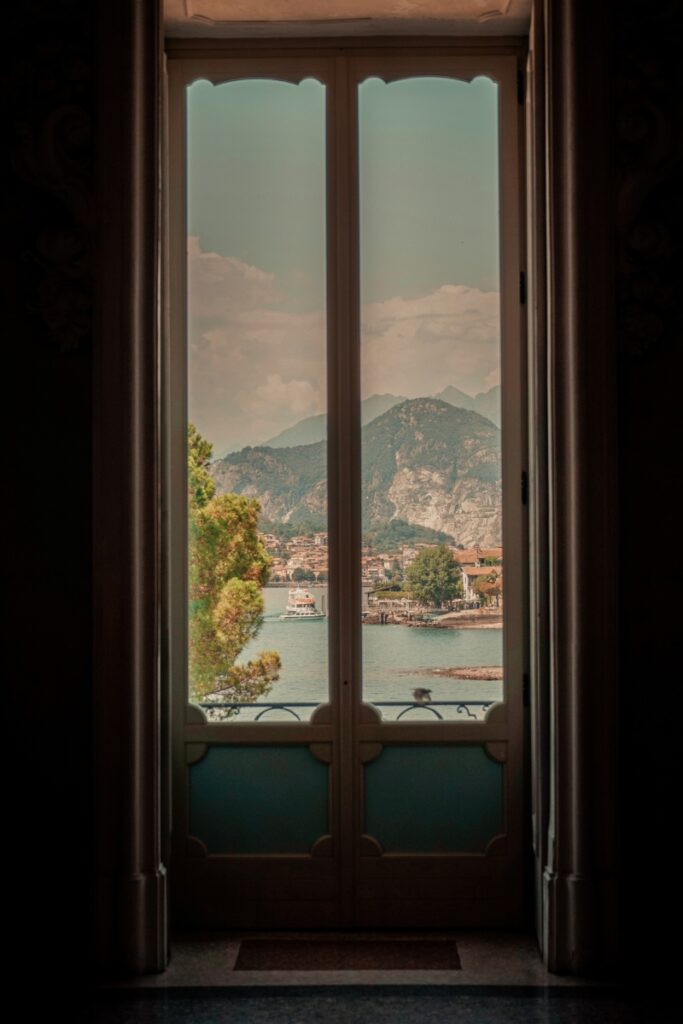
There are many benefits of slow travel, both for individuals and for society as a whole. When you take the time to slow down, enjoy the journey, and take the time to get to know the local community, you’re more likely to reap long-term benefits from your travel experience. Here are some of the benefits of slow travel and how you can become an expert slow traveler for your next vacation:
Improved mental and physical health : Slow travel allows you to schedule downtime into your itinerary, which can help reduce stress and prevent burnout.
Stronger connection to the destination : By traveling more slowly, you can form a deeper connection to the place you’re visiting and feel less rushed.
More opportunities for learning : Slow travel gives you more time to learn about the culture, language, and history of a destination.
Discover hidden gems : When you take your time exploring a destination, you’re more likely to stumble upon hidden gems that most tourists miss.
A cheaper form of travel : Slow travel can be a more affordable way to see the world because it allows you to stay in one place longer and avoid expensive transportation costs.
Promotes mindfulness and creativity : Slow travel has all of the benefits of slow living with a new destination to explore. Not only does this help promote mindfulness in your everyday life, but the new discoveries in a new destination can spark creativity in your work.
So if you’re looking for a more meaningful way to travel, consider becoming a slow traveler taking your time to truly experience all that your destination has to offer.
Tips & Tricks for Slow Traveling
1. plan to not plan..
Embrace spontaneity and allow yourself to be open to unexpected experiences. It is not about checking off a daily to-do list.
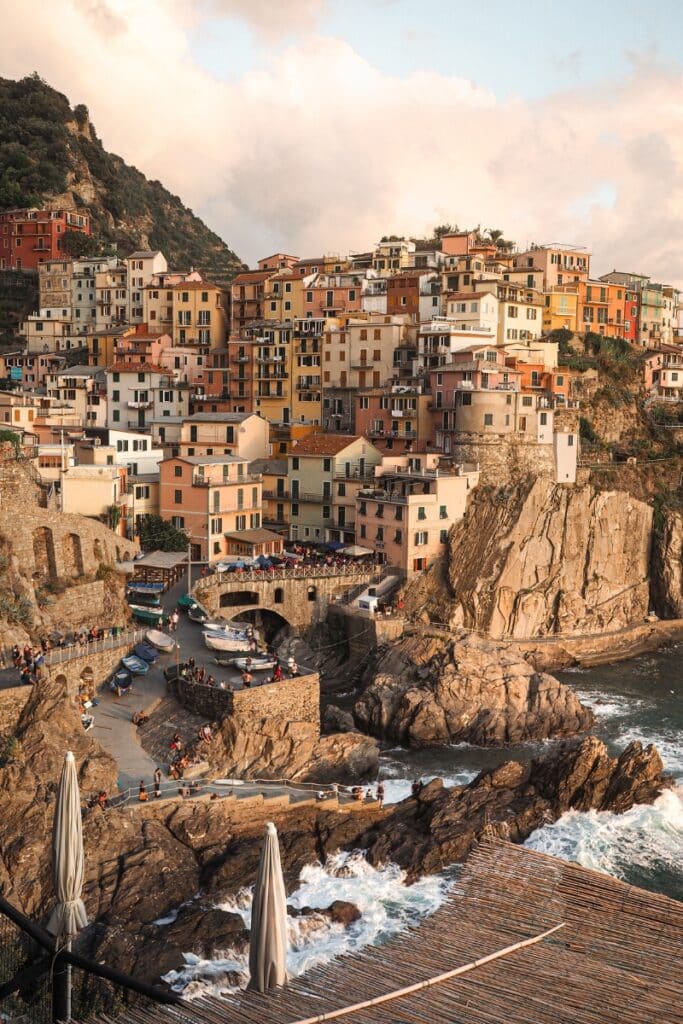
2. Liv e like a local.
Rent an apartment or stay in a homestay to fully experience the culture and give yourself more opportunities to mingle with local people and immerse yourself in local life.
3. Do your research.
Do your research ahead of time, but don’t over-plan your itinerary so you can truly embrace slow living. Ditching the box-ticking mentality of vacation planning will allow you to indulge in the slow movement and explore the local community at your own pace.
4. P lan for the off-season.
Travel during the off-season or shoulder season to avoid crowds and high prices.
5. Walk and wander.
Enjoy any relevant walking tours when you first arrive and wander on foot as much as you can to get a better sense of the destination and determine areas you wish to explore more.
6. Avoid Flights when possible.
If possible, choose public transport or driving over air travel to reduce your carbon footprint and see more of the scenery. When mapping out your next trip, be sure to include a few places that are within driving distance. Road trips are the best way to get a deeper understanding of the local landscape.
7. Join local communities.
Connect with locals by joining local communities and events or taking cooking classes or art classes. Taking a cooking class is also a great way for you to learn more about authentic local cuisine and immerse yourself in the slow food movement.
8. Cook authentic local cuisine.
Even if you don’t take a cooking class, shop at the local market for goods from local producers and try your hand at authentic recipes to bring the slow food experience into your travels.
9. Reserve days for doing nothing.
To truly practice the art of slow living during your travels, allow yourself days without anything planned on your next trip and let the day unfold naturally.
10. Seek hidden gems.
Avoid tourist traps and instead, seek out hidden gems recommended by locals. Local residents will not only know the best things to do but they can make personal recommendations to ensure you get a more authentic experience.
11. Pack light.
Pack light and bring only what you need to avoid feeling weighed down by your belongings. Becoming a slow traveler means embracing less is more.
12. Bring your daily routine with you.
Bring a sense of your normal life and routine into your experience. This means ditching the checklist mentality of rushing to see it all that many travelers embrace on vacation.
13. Reflect on your experiences.
Most importantly, take time to reflect on your experiences and appreciate the present moment. Slow traveling is not just about traveling slowly, but being more mindful in your daily routine.
If you’re ready to slow down and travel in a more balanced way, there are plenty of resources available to help you get started. Read on for the best slow travel books, blogs, magazines, podcasts, and tour companies so you can bring these slow travel principles into your trip and live more mindfully while you travel.
Reading books about slow travel can provide numerous benefits for those who love to explore new places. These books can inspire readers to take a more leisurely approach to their travels, allowing them to fully immerse themselves in the culture and customs of the places they visit.
If you’re looking for some inspiration for your next slow travel adventure, consider picking up one of these top 5 books on slow traveling that are highly rated by slow travelers in the community.
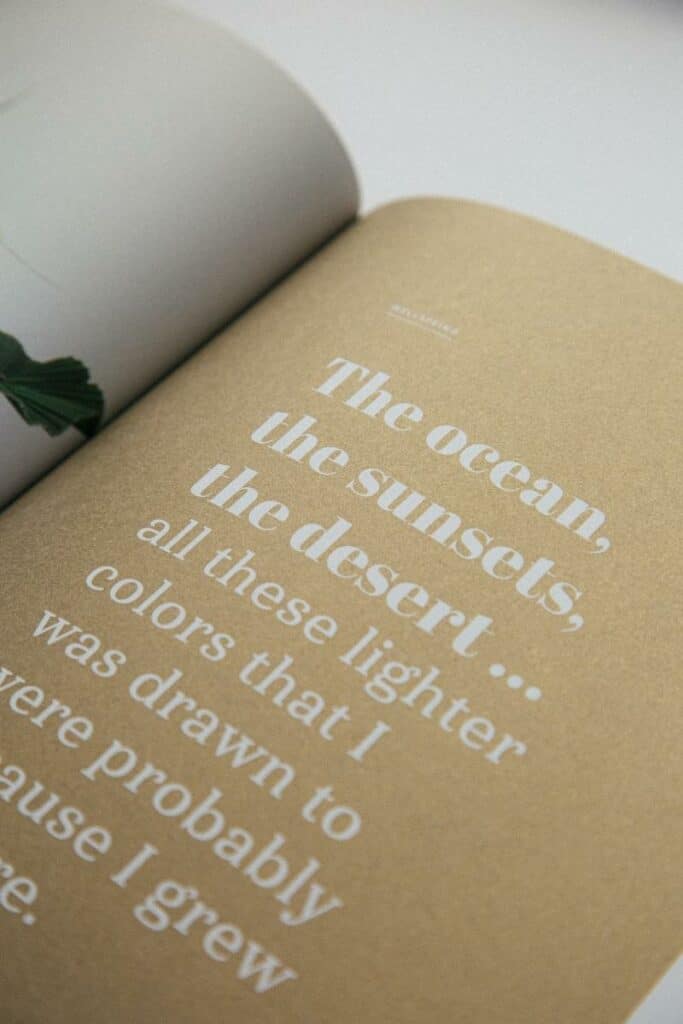
Slow Travel: A Movement
By Penny Watson
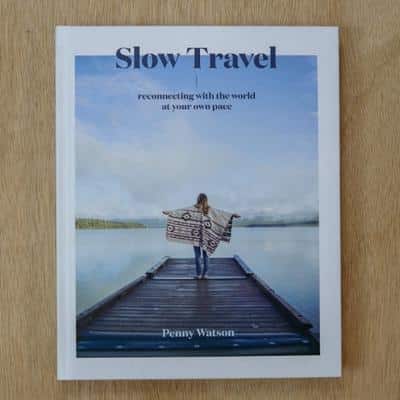
This book explores slow travel as a physical or philosophical endeavor, taking readers off the beaten track and through nature, and unveils meaningful and transformative journeys that will help you embrace the true beauty of slow traveling.
The book includes practical advice on places, activities, tours and experiences that will help readers get on the road and explore in a meaningful way. Whether you are looking for an immersive experience or just want to slow down and appreciate your surroundings, this book is sure to provide plenty of inspiration.
Unforgettable Journeys: Slow Down and See the World
By Joseph Reaney
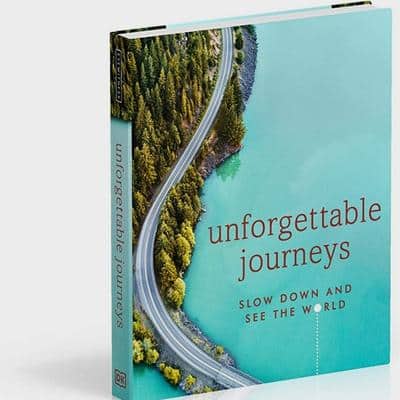
Ever dreamed of walking the Camino de Santiago, driving Route 66, or taking a luxury train through Europe ? Sometimes it really is all about the journey, rather than the destination.
This book provides over 200 journeys illustrated with inspiring photography and maps including practical information such as journey duration, difficulty, start and end point, and if there are options to take an organized tour. Whether you’re looking for an exotic getaway or an off-the-beaten-path experience, this book will inspire your next slow travel vacation.
The Idle Traveller: The Art Of Slow Travel
By Dean Kieran
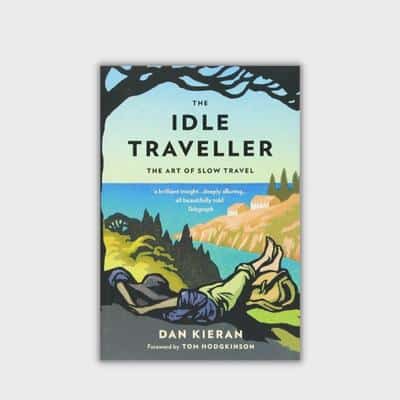
This book is all about embracing the joy of slow travel, encouraging readers to take their time and savor every moment of their journey. It advocates for taking night trains, buses, or other forms of transportation that allow for a slower pace of travel.
It also encourages staycation holidaying and re-assessing why we travel and what travel has become. This book has a little bit of everything from zen-like teachings to reviews from readers who have experienced the art of slow travel firsthand.
The Rings of Saturn
By W.G. Sebald

This classic travelogue takes readers on a meandering journey through East Anglia in England, exploring history, culture, and personal reflection along the way. Ostensibly a record of a journey on foot through coastal East Anglia, the book is also an allusive study of England’s history and its relationship to the natural world.
Through his observations and reflections, Sebald reveals how the past has shaped the present and how our actions today will shape our future. The novel is filled with evocative imagery and thought-provoking insights into human nature, making it an engaging read for anyone interested in history or literature.
A Year in Provence
By Peter Mayle
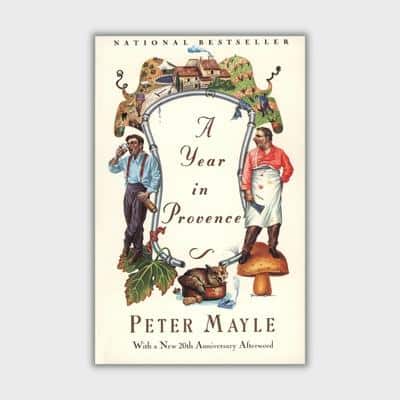
While not strictly about slow travel, this charming memoir chronicles Mayle’s experiences living in rural France for a year, immersing himself in the culture and taking things at a leisurely pace. In this witty and warm-hearted account, Mayle tells what it is like to realize a long-cherished dream and actually move into a 200-year-old stone farmhouse in the remote country of the Lubéron.
One of the best ways to learn more about slow tourism is to stay up to date with slow travel blogs. For more inspiration to travel at a slower pace, check out these top 5 slow travel blogs.
Slow Travel Blog

This website offers tips and destination recommendations for those looking to travel at a more leisurely pace. From cultural experiences to outdoor adventures, you’ll find plenty of ideas here.
Travelinmad

This travel blog offers insights into the benefits of traveling slowly and how to do it effectively. You’ll find tips, ideas, and inspiration for your next trip. Travlinmad shares local food, culture, and traditional recipes from around the world. With a focus on slow travel, Travlinmad provides tips for exploring each destination in depth and discovering hidden gems that are often overlooked.
What If We Walked?

This unique blog focuses on hiking trails, city strolls, and other slow travel experiences. Founded by Luke & Nell, a couple slowly exploring the world on foot, What if we walked? offers readers the opportunity to join them on their journey through photos and blog posts. Whether you are looking for tips for your next visit or want to explore the most beautiful waterfalls in England, What if we walked? has something for everyone.
With its focus on the physical and mental health benefits of walking, What if we walked? is the perfect place to find inspiration for your next outdoor adventure. Follow along with the authors’ adventures and get inspired for your own journey.
The Broke Backpacker

The Broke Backpacker’s guide to slow travel offers practical advice on how to hack your travels to make them more meaningful and enjoyable. Learn how to ditch the tourist traps and embrace a slower, more authentic way of exploring the world.
The Broke Backpacker is the ultimate resource for budget travelers, offering tips and tricks for discovering the world on the cheap. From epic backpacking guides to in-depth gear reviews and hidden gems, The Broke Backpacker team is always on assignment to provide readers with valuable insights into budget travel.
Slow travel magazines offer a unique perspective on travel that encourages readers to take their time and immerse themselves in the local culture. These magazines provide a wealth of information about off-the-beaten-path destinations, sustainable travel practices, and ways to connect with locals. By reading slow travel magazines, travelers can gain deeper insight into the places they visit and make more meaningful connections with the people they meet along the way. Additionally, slow travel magazines often feature stunning photography and engaging stories that inspire readers to explore new destinations and embrace a slower pace of life.
To learn more about slow traveling, here are five magazines that can inspire and guide you on your journey:
Kinfolk Travel
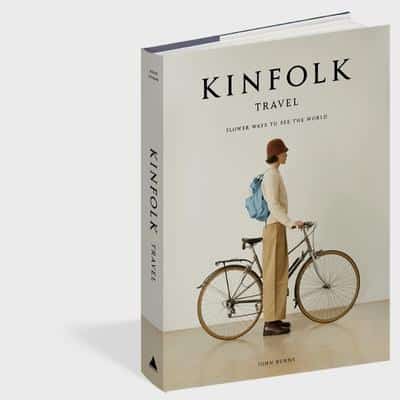
This hardcover book from Kinfolk magazine is dedicated to promoting sustainable and responsible tourism. It features articles on slow food, eco-friendly accommodations, cultural experiences, and off-the-beaten-path destinations.
The magazine also explores places, foods, customs, people, and events with intriguing or unusual stories to tell. With its focus on sustainable and meaningful travel experiences, Kinfolk Travel is a must-read for anyone looking to connect with the world in a more profound way.
Wanderlust Magazine
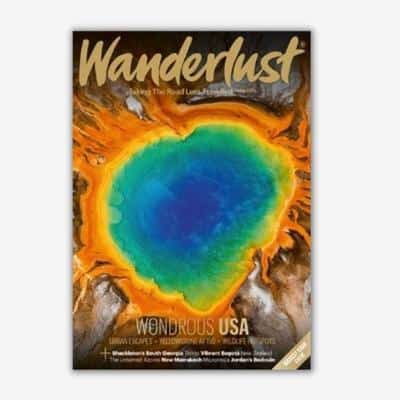
While not exclusively focused on slow travel, Wanderlust Magazine encourages readers to take a more mindful approach to travel. It covers a wide range of topics, from adventure travel to cultural immersion.
This UK-based travel magazine offers a wealth of information on destinations, travel advice, and cultural experiences. With its stunning photography and engaging articles, this magazine will transport you to some of the most beautiful and fascinating places in the world.
Mindful Travel Magazine
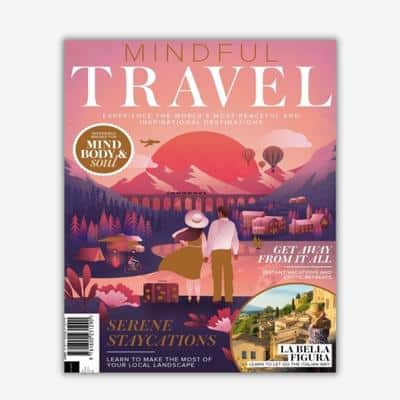
As its name suggests, this magazine promotes mindful and intentional travel. It features stories on sustainable tourism practices, wellness retreats, and eco-friendly accommodations.
Mindful Travel Magazine also covers the latest trends in meditation and wellness practices from around the world. Whether you’re looking for ways to connect with nature or learn about different cultures, Mindful Travel Magazine has something for everyone.
British Travel Journal Magazine
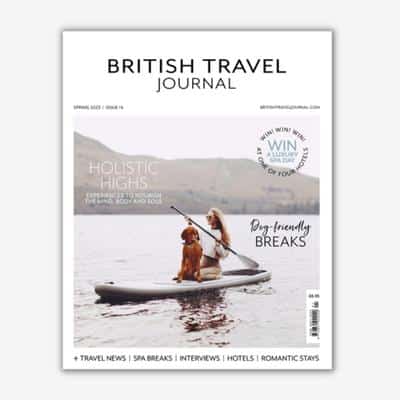
This magazine showcases the best of British travel destinations and experiences. While it doesn’t explicitly focus on slow travel, many of its articles highlight the beauty of taking your time to explore a destination.
It offers readers an array of inspirational destinations and travel ideas, making it the perfect companion for planning your next holiday in the UK. With three issues per year, British Travel Journal Magazine provides readers with a wealth of information on everything from hidden gems to must-see landmarks, all delivered in a visually stunning format.
Ultimate Travel Bucket List Magazine
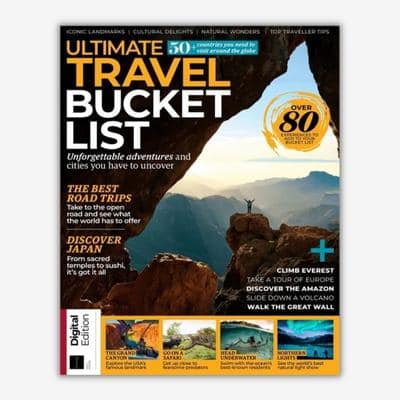
This magazine is all about inspiring readers to dream big when it comes to travel. While it may seem counterintuitive for a bucket list publication to promote slow travel, many of its featured destinations lend themselves well to a more leisurely pace. The magazine offers inspiration and practical advice to help turn your travel dreams into reality. From wine tasting in France to exploring ancient ruins in Greece, Ultimate Travel Bucket List Magazine is your go-to source for all things travel-related.
Slow travel podcasts offer a wealth of benefits to listeners who are interested in exploring the world at a more leisurely pace. These podcasts provide insights into the benefits of slow travel, including the opportunity to connect with local cultures and communities, reduce one’s environmental impact, and foster a deeper sense of mindfulness and relaxation while on the road.
By listening to slow travel podcasts, travelers can gain valuable tips and advice on how to plan their trips in a way that aligns with these values, as well as learn about new destinations and experiences that they may not have considered before. Overall, slow travel podcasts are an excellent resource for anyone who wants to explore the world in a more meaningful and sustainable way.
The Zero to Travel Podcast
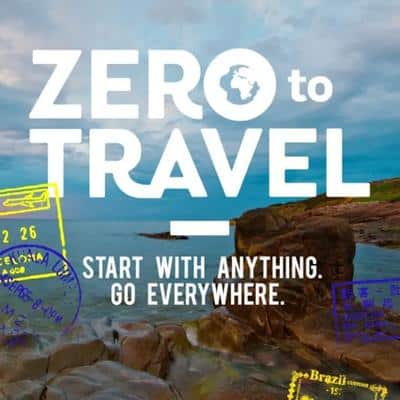
With over 10 million downloads and 600+ five-star reviews, this podcast is a must-listen for anyone interested in slow travel. Host Jason Moore shares tips and stories from his own travels, as well as interviews with other travelers who have embraced the slow travel lifestyle.
The Thoughtful Travel Podcast
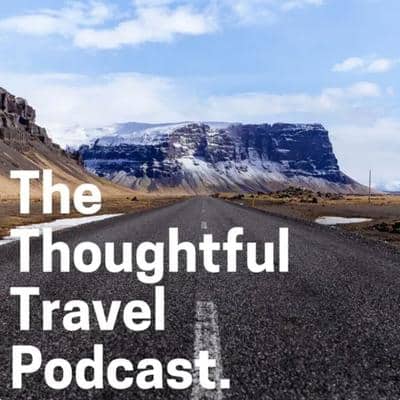
Hosted by Amanda Kendle, this podcast explores the deeper meanings behind our travels. From connecting with locals to confronting cultural differences, each episode offers insights into how travel can change us for the better. And of course, there are plenty of tips for slowing down and savoring each moment along the way.
Women Who Travel Podcast
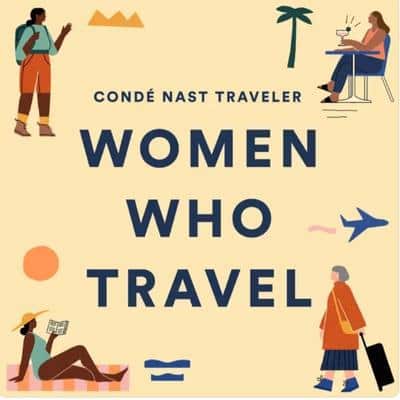
In this podcast from Conde Nast Traveler, hosts Meredith Carey and Lale Arikoglu explore all aspects of travel through a feminist lens. While not exclusively focused on slow travel, many episodes touch on the benefits of taking your time and immersing yourself in local cultures.
Armchair Explorer Podcast
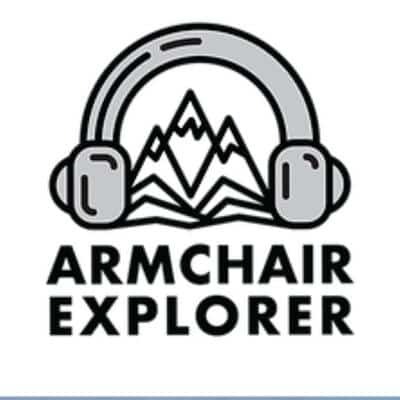
If you can’t hit the road right now but still want to indulge your wanderlust, check out this podcast from National Geographic. Each episode takes listeners on a virtual journey to a different corner of the world, with immersive soundscapes and expert commentary that will transport you to another place and time.
Best Slow Travel Tour Companies
If you’re looking for a more relaxed and immersive slow travel experience, but don’t know where to start, here are some of the best slow travel companies to consider.
Black Tomato

Offering slow travel vacations in top destinations, Black Tomato is a luxury travel company that’s great for those looking for unique and personalized experiences. Black Tomato plans slow travel vacations for individuals, couples, families, and groups.
With a focus on exceptional customer service and creating unique travel experiences, Black Tomato is a top choice for those seeking an extraordinary vacation.
Butterfield and Robinson

With the slogan “Slow Down to See the World,” Butterfield and Robinson is a luxury travel company that offers bespoke slow travel experiences all over the world. The company’s mission is to travel with integrity, have a positive impact, and gain a deep understanding of each and every destination.
With over 50 years of global trip planning expertise, Butterfield and Robinson designs, plans, and guides trips of a lifetime by bike, foot, or water. The company’s extended journeys offer multi-country itineraries that allow travelers to explore multiple destinations at their own pace.
Slow Tours Europe

Slow Tours Europe offers a huge range of tours in Europe for unique experiences that are both active and relaxing. Slow Travel Tours is another option for those looking for small group tours with a focus on cultural immersion, cooking and wine, photography, and more.
Slow travel is not just about the destination but also about exploring communities along the way, taking time to pause and appreciate the journey. Whether you’re a senior looking for a leisurely-paced tour or simply seeking a more mindful way to travel, Slow Tours Europe has something for everyone.
Remote Year

Remote Year is a great option for digital nomads looking to slow down their travels while still being able to work remotely. Remote Year offers the right balance of work and play so your next adventure never sacrifices your next career opportunity.
With options for 1-month, 4-months, or even a year-long programs, Remote Year provides housing, professional coworking spaces, and support for its participants. The program curates communities of interesting professionals, entrepreneurs, and freelancers from across the globe to travel together on retreats and trips. With over 80 destinations and 4,000+ members, Remote Year has become a favorite remote working community for many.
Surf Yoga Beer

Surf Yoga Beer is a group adventure travel company that creates fitness adventures worldwide, connecting people from all over the world through a mutual love for surf, yoga, and (you guessed it) beer.
This unique company offers an experience combining physical activity with socializing and relaxation. Whether you’re a beginner or an experienced surfer or yogi, Surf Yoga Beer has something for everyone. With its focus on community and wellness, this company provides a fun and exciting way to explore new destinations while also improving your health and well-being.

Byway Travel

Byway Travel is a unique travel company that offers sustainable and flight-free holidays. They believe in slow travel, taking the scenic route to local stays and off-the-beaten-path experiences. Byway Travel provides personalized trips by train, boat, and bus in the UK and Europe. As a certified B Corp, they are committed to sustainability and reducing their impact on the environment.
The adventures are designed for those who want to explore the world without relying on flights, making it an excellent option for eco-conscious travelers looking for an alternative way to see the world.
Slow Travel Frequently Asked Questions
The slow travel movement is a philosophy of traveling that emphasizes connection to local people, cultures, food, and music. It’s about taking the time to immerse oneself in a place and truly experience it, rather than rushing through a checklist of tourist attractions. An example of slow travel could be spending a month living in a small village in Italy, getting to know the locals, learning the language, and exploring the surrounding countryside at a leisurely pace.
If you’re looking to slow down and fully immerse yourself in a destination, slow travel may be the perfect fit for you. Here are some practical tips on how to start your slow travel journey: 1. Do your research: Before you go, do some research on your destination. Look for local events, markets, and festivals that are happening during your stay. 2. Get inspired: Read books or watch movies set in your destination to get inspired and learn more about the culture. 3. Know thyself: Slow travel is all about taking it easy and enjoying the journey. Be honest with yourself about what kind of traveler you are and what kind of experience you want. 4. Pick an accommodation with character: Instead of staying in a chain hotel, opt for a unique accommodation option like a local bed and breakfast or an Airbnb. 5. Travel like a local: Take public transportation or walk instead of renting a car to fully immerse yourself in the local culture. 6. Give up some “purpose”: Leave gaps in your itinerary so that you can explore at your own pace and discover hidden gems along the way. 7. Eat local: Try new foods and dine at local restaurants to fully experience the flavors of your destination. 8. Spend more time in fewer places: Instead of trying to see everything, focus on one or two destinations and spend more time there to really get to know the area. 9. Challenge your boundaries: Step out of your comfort zone and try new things like hiking, kayaking, or taking a cooking class. 10. Embrace spontaneity: Allow yourself to have days without anything planned and ask locals for their recommendations or their favorite things to do and see in the area. Slow travel is all about taking it easy, embracing spontaneity, and fully immersing yourself in a destination. By following these tips, you’ll be well on your way to starting your own slow travel journey
If you’re tired of rushing from one tourist attraction to another and want to truly immerse yourself in a new culture, slow travel might be just what you need. Slow travel is all about taking your time, connecting with locals, and fully experiencing a destination. Here’s how you can embrace slow travel: 1. Stay in one place for longer: Instead of hopping from city to city, choose one destination and stay there for at least a week or two. This will give you the chance to really get to know the area and its people. 2. Travel by land: Slow travel often involves traveling by train, bus or car instead of flying. This not only reduces your carbon footprint but also allows you to see more of the countryside and smaller towns. 3. Immerse yourself in local culture: Take part in local activities such as cooking classes or language lessons. Attend festivals and events that are important to the community. 4. Eat locally sourced food: Slow travel is closely linked to the slow food movement, so make sure you try regional dishes made with fresh, locally sourced ingredients. 5. Disconnect from technology: Slow travel is all about being present in the moment, so put away your phone and take in your surroundings without distractions. By embracing slow travel, you’ll not only have a more authentic experience but also reduce your impact on the environment and support local communities.
Traditional tourism often involves rushing from one attraction to another without taking the time to truly experience a place. Slow travel inspires travelers to take their time, stay in one place for longer periods of time, and really get to know a destination. Slow travel allows travelers to experience life in a new place by engaging with locals, trying local cuisine, and exploring the natural environment. It also encourages travelers to be mindful of their impact on the environment and local communities.
Not necessarily. Slow travel can actually be more affordable because it often involves staying in one place for longer periods of time, which can be less expensive than constantly moving around.
Yes. Slow travel doesn’t mean skipping out on popular attractions altogether – it just means taking your time and really savoring each experience. When traveling slowly, you can still visit all the major attractions, but also have the opportunity to discover hidden gems. You can interact with locals and learn about their culture and customs in a way that would be impossible if you were rushing through your trip. Slow travel gives you the chance to really get to know a place and its people on a deeper level.
Choose a destination that interests you and has plenty of opportunities for cultural immersion and connection with locals. Slow travel is all about taking your time to explore a destination. With so many amazing places to choose from, it can be difficult to decide where to go. Here are some tips for finding the perfect slow travel destination: 1. Consider your budget Slow travel doesn’t have to break the bank. Look for destinations that offer affordable accommodation and activities, such as camping or hostels. 2. Think about what you want to experience Are you looking for a cultural experience? Or perhaps you’re more interested in outdoor activities? Consider what type of experiences you’re looking for when choosing a destination. 3. Research different destinations Read up on different destinations and find out what they have to offer in terms of attractions, activities, and culture. Make sure the destination you choose has enough activities and attractions to keep you occupied during your stay. 4. Ask around Talk to friends who have traveled before and get their advice on which destinations they would recommend for slow travel. They may even be able to provide helpful tips and tricks. 5. Don’t forget about safety Safety should always be a top priority when traveling, especially if you’re going solo or with a small group of people. Research the safety protocols of each destination before booking your trip and make sure that it’s suitable for your needs. No matter where you decide to go, slow travel is an amazing way to immerse yourself in a new culture and take your time exploring all that it has to offer.
Some tips include staying in one place for longer periods of time, using public transportation instead of renting a car, and seeking out local experiences like cooking classes or guided tours.
Yes. Slow travel is often considered a form of sustainable tourism because it encourages travelers to take their time and reduce their carbon footprint by using public transportation instead of driving or flying.
Absolutely. In fact, slow travel can be especially rewarding for families because it allows them to spend quality time together while experiencing new cultures and destinations. Slow travel is a great way for families with children to explore the world. It allows them to take their time and build a deeper connection with the places they visit, while avoiding the stress of tight schedules and set plans. With slow travel, families can take the scenic route, get off the beaten track, explore their own backyard, and enjoy meaningful overseas experiences. There are also many benefits for children, such as taking pressure off them and allowing them to be more creative in their exploration.
Some ways to connect with locals include staying in homestays or Airbnbs hosted by locals, attending cultural events or festivals, or simply striking up conversations with people you meet along the way. This allows you to get an authentic experience of the area and its people.
Slow travel is an excellent option for solo travelers looking to explore the world in a meaningful way. Slow travel encourages travelers to take their time and really get to know the places they visit, rather than just checking off a list of tourist attractions. It allows for more meaningful interactions with locals and a greater appreciation for the culture of the place you’re visiting. Solo travelers can benefit from slow travel by taking advantage of unique opportunities that may not be available when traveling with a group. For example, it’s easier to stay in one place for an extended period of time, allowing you to really get to know the area and its people. You can also take part in activities that require more flexibility or spontaneity, such as volunteering or taking unique day trips. Overall, slow travel is an ideal way for solo travelers to experience new cultures and make meaningful connections with locals while exploring the world at their own pace.
Slow travel is a growing movement that emphasizes taking your time to truly experience a destination, rather than rushing through it. Here are some reasons why slow travel might be the best way to explore the world: 1. Connection: Slow travel allows you to connect more deeply with the local people, culture, food, and music of a place. By taking your time and immersing yourself in the local community, you can connect with the destination on a deeper level. 2. Sustainability: Slow travel is often more sustainable than traditional tourism, as it involves staying in one place for longer periods of time and supporting local businesses. 3. Relaxation: Slow travel is all about taking it easy and enjoying the journey. By slowing down and savoring each moment, you can reduce stress and enjoy a more relaxing vacation. 4. Authenticity: When you rush through a destination, you often only see the tourist highlights. Slow travel allows you to discover hidden gems and experience a more authentic side of a place. So if you’re looking for a more meaningful way to explore the world, consider embracing slow travel on your next trip.
RELATED POSTS
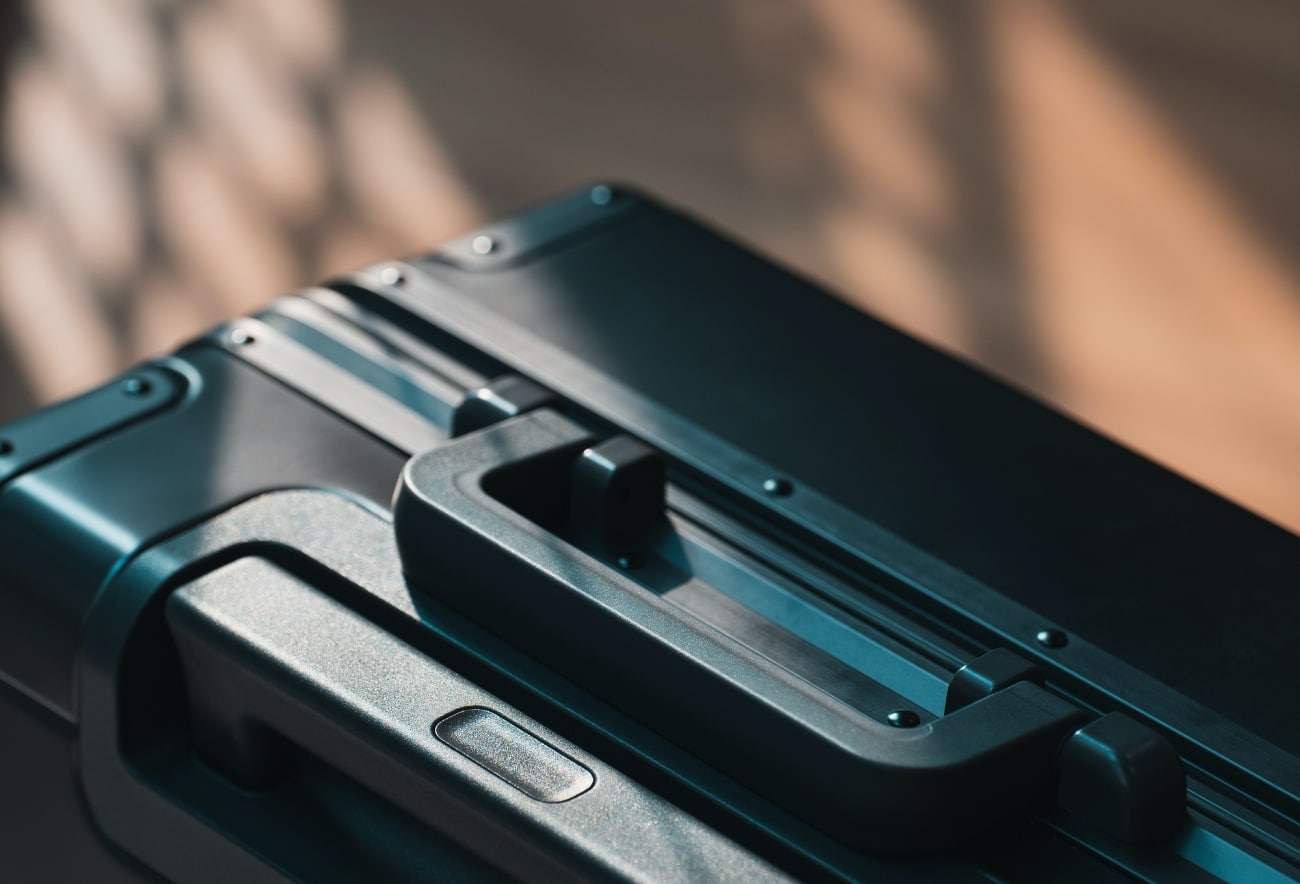
The Best Luggage Brands of 2023, Editor Approved

Wear To: Amalfi Coast Style Guide for The Perfect Amalfi Coast Outfits
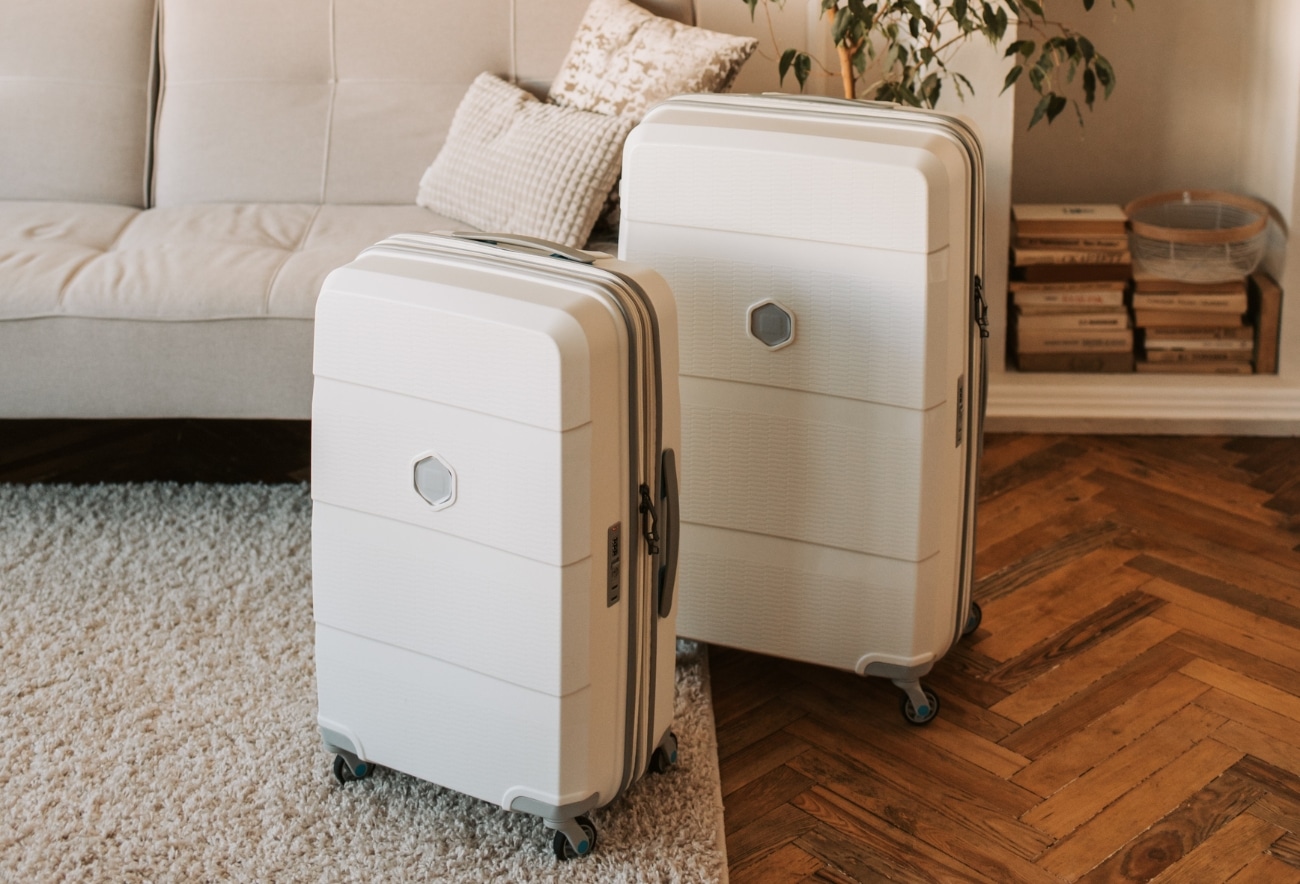
Luggage & Suitcase Buying Guide: What to Know to Make the Best Purchase
- Hospitality Industry
What is Slow Tourism? The next big hospitality trend
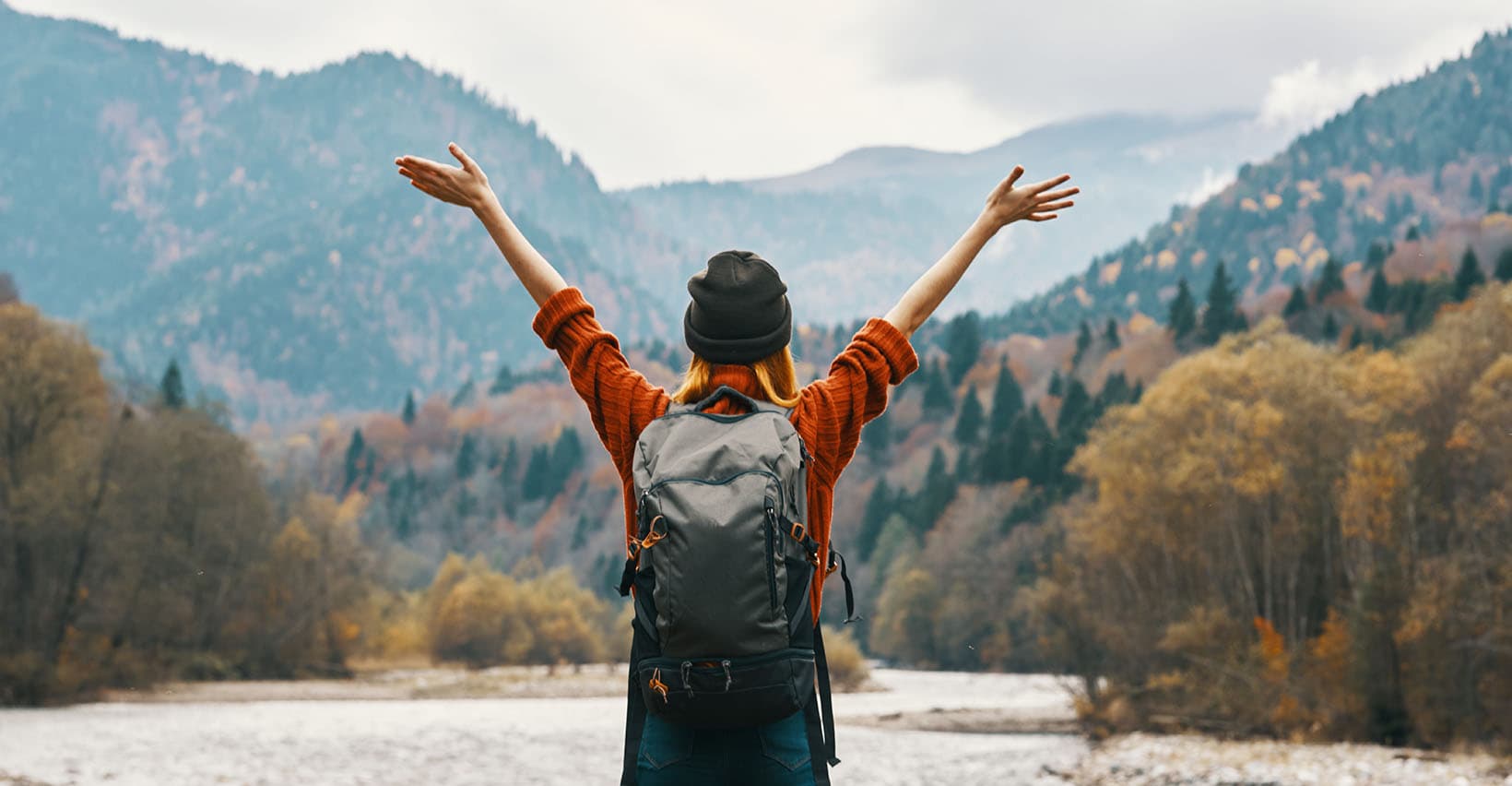
August 16, 2021 •
4 min reading
The trend of “Slow Travel” has become increasingly popular over recent years, however through COVID19 it has accelerated immensely and has almost become a new norm without people even realising. Slow tourism is forecasted to continue to grow in popularity, becoming an alternative to more traditional holidays and is estimat ed to grow at a 10% compound annual growth rate . Now what is Slow travel, where did it come from and how could hoteliers adapt?
The trend of “Slow Travel” has become increasingly popular over the past years, however through COVID19 it accelerated immensely and has almost become a new norm without people even realising. The crazed race to visit as many places as possible, which was influenced through renowned books like “1000 Places to See Before You Die” or through movies such as “The Bucket List”, is slowly becoming less popular. Slow tourism is forecasted to continue to grow in popularity, becoming an alternative to more traditional holidays with an estimated 10% compound annual growth rate.
What is Slow Travel?
The online definition describes it as an approach to travel that emphasizes connection to local people, cultures, food and music. It relies on the idea that a trip is meant to educate and have an emotional impact, while remaining sustainable for local communities and the environment.
Where did Slow Tourism come from?
This trend or better yet movement has been evolving through time and is connected to the Slow food movement. Slow Food was started by Carlo Petrini and a group of activists in the 1980s to resist the opening of a McDonald's near the Spanish Steps in Rome, with the initial aim to defend regional traditions, good food, gastronomic pleasure and a slow pace of life. The further popularity can be correlated with the growing focus on sustainability and self - care.
How can you travel “slower”?
Travelling slower involves transitioning from materialistic and consumerist luxury to wanting purposeful experiences and creating meaningful moments. People no longer want to have a schedule full of tours of classic sightseeing spots. They want to travel at their own pace while experiencing and tasting the local culture. A word used a lot when discussing Slow travel is “experience-based”. Experience-based travel can be accomplished in different ways, such as connecting with people, creating a community, experiencing local culture and making conscious decisions. These conscious decisions impact one’s own cultivation and regeneration as well as helping the environment by reducing your own global footprint.
“Slow tourism is characterized by reducing mobility and by taking time to explore local history and culture, while supporting the environment . The traveller’s main goals are relaxation, self-reflection, escape, novelty seeking, engagement and discovery.” - Journal of Travel Research
Prior to the pandemic global tourism hit record highs with 671 Million global international arrivals. Both the influence of the pandemic and these high numbers has motivated travellers to explore new destinations and lesser - known countries such as Azerbaijan, Bhutan, Georgia, Nepal and others.
How can hotels adapt to this movement?
There are simple approaches which both urban and rural hotels can adapt to enhance their guests experience through different hotel departments.
- Food & Beverage: An already commonly practiced way is through F&B outlets, where the local culture can be easily incorporated by serving regional dishes with local and seasonal produce. A significant trend that many businesses have already adapted to is “going back to the roots”. The more we learn about food, nutrition and the planet, the more it’s understood that natural is best. Taking food back to its roots pays homage to local herbs, vegetables and as well as cooking practices. Teaching these cooking practices to guests also offers a way for guests to delve deeper into the local culture.
- Wellness & Wellbeing: As everyday life continues to become more technology-driven, there is a strong desire for down-to-earth therapy and spa practices that use traditional foods, plant-based medicines, oils and ancient rituals.
- Experiences & Activities: Transformational travel inspires travellers to disconnect from their busy day to day life, this includes learning new skills which will be a motivating force for future travellers. Experiences can allow guests to engage with the local community and interact with others to expand their cultural knowledge and understanding.
- Off - Grid: Along with the movement of Slow travelling came the trend of Off - Grid travel, which is made possible by modern technologies. An example being solar power providing electricity anywhere, such as in mountain cabins, a boat or other remote locations. Both urban and rural hotels can adapt to travellers trying to get away from the hustle and bustle of their daily life, by offering digital detox experiences, which are becoming increasingly more popular.
- Transportation: With sustainability being a priority for slow travellers, hotels should offer or organise different means of transportation to their guests. Bike rentals, walking tours or excursions by train are all attractive options for today’s traveller.
To conclude, slow tourism is most likely the way our industry will cautiously but surely start to recover as soon as global travel is fully encouraged again.

Keep reading
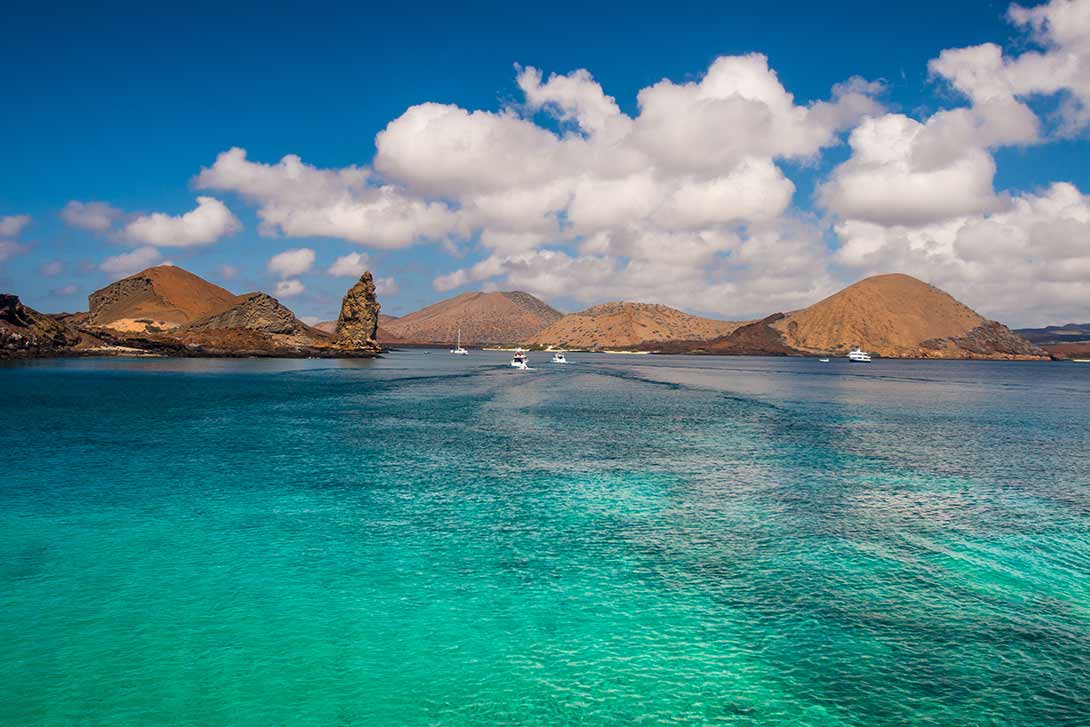
Understanding sustainability challenges in the Galapagos Islands
Jun 13, 2024

Human-centric hospitality: The key to thriving in the industry
Jun 12, 2024
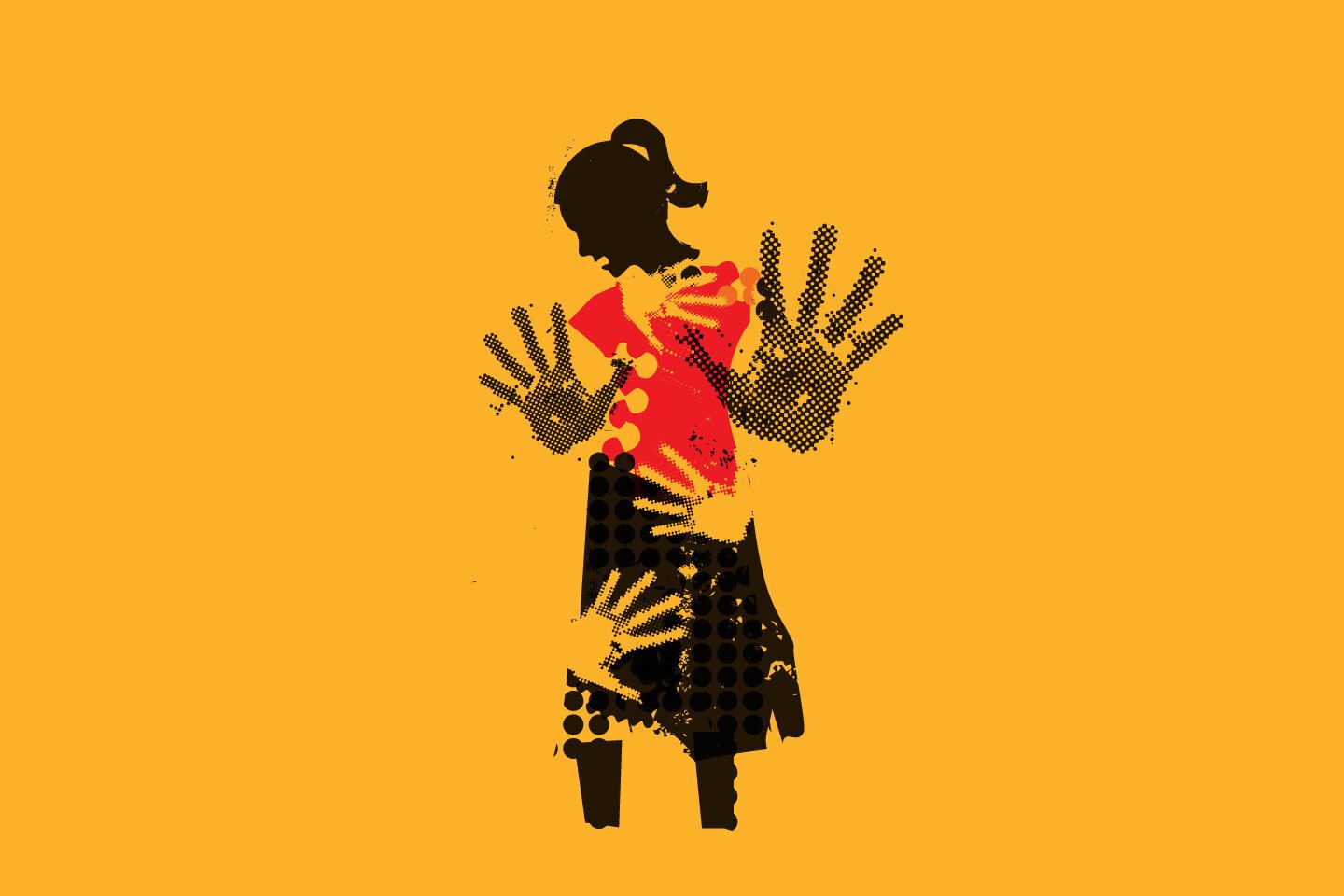
Sexual harassment prevention in hospitality: An integrative framewwork
Jun 11, 2024
This is a title
This is a text
- Bachelor Degree in Hospitality
- Pre-University Courses
- Master’s Degrees & MBA Programs
- Executive Education
- Online Courses
- Swiss Professional Diplomas
- Culinary Certificates & Courses
- Fees & Scholarships
- Bachelor in Hospitality Admissions
- EHL Campus Lausanne
- EHL Campus (Singapore)
- EHL Campus Passugg
- Host an Event at EHL
- Contact our program advisors
- Join our Open Days
- Meet EHL Representatives Worldwide
- Chat with our students
- Why Study Hospitality?
- Careers in Hospitality
- Awards & Rankings
- EHL Network of Excellence
- Career Development Resources
- EHL Hospitality Business School
- Route de Berne 301 1000 Lausanne 25 Switzerland
- Accreditations & Memberships
- Privacy Policy
- Legal Terms
© 2024 EHL Holding SA, Switzerland. All rights reserved.
- Cabins & Lodges
- Apartments & houses
- Camping and Glamping
- New South Wales
- South Australia
- Western Australia
- Northern Territory
- Norfolk Island
- New Zealand
- Switzerland
- Middle East
- Southeast Asia
- Antarctica & Arctic
- Coach, Group & Escorted
- Special Interest
- City Tours & Sightseeing
- Scenic Flights & Heli Tours
- All-Inclusive Packages
- Restaurants
- Wine & Dine
- Street Food
- Art & Culture
- Shopping & Markets
- Rail Journeys
- Ski & snowboard
- Walks & Treks
- Dive & Water Sports
- Expeditions
- Parks & Reserves
- Theme & Amusement Parks
- Spa & Wellness
- Global Village
- Money & Rewards
- Tried & Tested
- Interviews & Profiles
- Deals & Itineraries
Subscribe to the magazine

- Vacations & Travel on Facebook
- Vacations & Travel on LinkedIn
- Vacations & Travel on Instagram
- Vacations & Travel on YouTube
V&T Newsletter
Love inspiring travel stories and exciting competitions? Get the latest news delivered to your inbox.

25 slow travel experiences to transform your travels
- facebook-f-brands (1)
- twitter-brands (1)
- linkedin-in-brands
- envelope-solid
If the past few years have taught us anything, it’s that travel should be savoured. These immersive experiences – in some of the world’s most intriguing destinations – will convince you that slow travel is the only way to go.
Slow down, take your time, be mindful, and focus on your journey rather than the destination. You will find a deeper cultural experience, increased mindfulness and authentic experiences. Not just for you, slow travel is better for the planet too.
From walking the wild plains of Zambia to sipping tea in Sri Lanka, there are endless wonders to discover when you take the time to immerse yourself in your travels. Slow travel is taking off, and these incredible experiences will leave you feeling inspired, grounded and connected.
1. See the best of Zambia on foot
Deep in Zambia’s savannah, listen to baboons bark and monkeys chat from your camp’s open-air bath in the South Luangwa National Park. Part of a walking safari with Abercrombie & Kent , where elephants are within arm’s reach.
Days are spent deep in the national park. Your main mode of transport is walking, because there’s no better way to experience this slow travel experience with exotic wildlife.
Trek between your luxurious bush camps and walk high along the banks of the Luwi River with hippos below.
Further out, large elephant herds roam, zebras gallop past and there are few places in Africa where you will see as many leopards. Dine on gourmet food and bed down in tents with plush four-poster beds, large picture windows and private open-air bathrooms.
Then fly to UNESCO World Heritage-listed Lower Zambezi National Park. Here, the big game thrives – elephants, buffalo, lions and leopards. Drift silently along in a boat. You won’t need binoculars; instead, you’ll hear the wildlife rustle among the trees and turn to see that it’s you who is being watched.
Abercrombie & Kent’s Best of Zambia 11-day walking tour starts from $17,450 per person.

2. Cruise with Holland America
Cruising is the ultimate slow travel experience, allowing travellers to uncover hidden gems and immerse themselves in each port they visit. Holland America has been wowing passengers on the world’s oceans since the 1800s and it’s full steam ahead to mark its latest milestone.
It’s the only cruise line with a dedicated culinary council, a floating art gallery valued at more than US$4.1 million, world-class live music performances, and 500 itineraries to more than 470 ports.
To celebrate its 150th anniversary, Holland America has launched a collection of ‘Heritage Cruises’ taking in destinations across Alaska, the Caribbean, Europe, Australia and New Zealand, Hawaii, South America and Mexico.
These curated journeys will take in the quintessential sights – the storied laneways and cerulean waters of the Mediterranean, Hawaii’s volcanic beaches and the picturesque wine regions of New Zealand. All the while, you’ll be accompanied by Holland America’s exceptional hospitality, award-winning dining and 150 years of cruising expertise.
Read more: Holland America’s 48 ‘Heritage Cruises’ celebrate the cruise line’s history
3. Explore Okinawa Japan
Okinawa is Japan, but not as you know it. The pace is slower, the culture and history distinct, and the natural landscapes sublime.
Comprising 160 islands at the southwestern tip of Japan, Okinawa has a friendly, relaxed island vibe. Immerse yourself in Okinawa by renting a car and cruising along the stunning coastal roads of the main island. The further north you head, the more stunning the scenery becomes as you enter the UNESCO Heritage-listed Yanbaru National Park. Take a stroll along a trail of elevated boardwalks around Gesashi Bay. Or join a three-hour kayak tour and paddle to the sea.

The food you’ll find here is unlike anything you’ll find on the mainland. Okinawan cuisine is big on fresh vegetables and other nourishing ingredients. It’s one of the key reasons local people live long, healthy lives – Okinawa is one of the world’s Blue Zones with a higher-than-average life expectancy.
For an even slower pace, explore Okinawa’s stunning outer islands each with their own relaxed vibe and local experiences. One highlight is a visit to Hatenohama Beach on Kume Island – the whitest beach in the region.
Read more: 13 reasons why Okinawa is Japan’s hottest travel destination
4. New Zealand by train
As the sun sinks behind snow-capped mountains, travellers on board the TranzAlpine press their faces to windows and think, yes, this is why we came to New Zealand. The scenic slow travel experience takes you from the South Island city of Christchurch, through the heart of the Southern Alps, to Greymouth on the West Coast. You’ll pass breathtaking viaducts and soaring mountains. The West Coast is the place to enjoy endless walking trails, historic mining towns, and nature abounds. You’ll also have the opportunity to sample local brews at Monteith’s Brewery.
Or for vast ocean views and wineries, take the Coastal Pacific through the heart of the Marlborough region and to the top of the South Island. Leaving from Christchurch, your train glides along the rugged Kaikōura coastline, where giant sperm whales are the year-round residents. Sip wines on board as you pass lush vineyards and, on arrival, head to the countryside and learn the secret to this region’s winemaking success. Whether you choose a day trip, package or tour, travel in this stunning landscape will stay with you.

Keep reading :
- The music-lovers guide to British rock and pop venues
- The French wine region you have to try
5. Dive in a vibrant underwater world at Wakatobi
This Indonesian dive resort sits pretty in Southeast Sulawesi, in the heart of the Coral Triangle. Wakatobi Resort boasts exclusive access to a privately funded marine reserve.
Explore some of the world’s best reefs, including a House Reef with shallow coral gardens extending 80 metres before plunging into the ocean.
But a stay at Wakatobi isn’t just for dedicated dive travellers. The resort blends five-star comfort with aquatic adventures and is just as appealing to snorkellers or young families. Relax in a traditional bungalow or oceanfront villa with plunge pool and garden shower. Guests can enjoy a meal at the beach restaurant, a cocktail at the jetty bar or an indulgent massage.
Your stay at Wakatobi Resort supports local communities to honour no-take fishing zones and funds patrols and cleanings to protect and preserve the reef.
Read more: Diving your vibe? This Indonesian island resort is one of the best places in the world to do it
6. Lounge with lions in Canberra
Sip Moët & Chandon and dine on decadent dishes of native macadamia-crusted snapper and roast lamb while lions laze in front of you – albeit behind glass.
The lion accompanied dinner is part of an overnight stay at Jamala Wildlife Lodge , a five-star retreat within Australia’s National Zoo & Aquarium, Canberra. The family-run property has seven African-inspired rooms and suites. Think a safari-style lodge with its own shark tank and tropical gardens and rooms overlooking the Molonglo River, where giraffes linger at windows. Or jungle bungalows where you can soak in a bubble bath as lions, tigers or Malayan sun bears saunter by.
When you’re not admiring the animals pour a glass of fine wine (it’s free-flowing), sit on the terrace and take in the sunset. All the while knowing your stay is helping fund education and breeding programs for the conservation of these incredible creatures.
Read more: What makes Jamala Wildlife Lodge a ‘wild’ sleepover?
A stay at Jamala Wildlife Lodge starts from $1,750 per night.
7. Raft in the wilds of Canada
Canada’s Tatshenshini River is known as the wildest river in North America, but beginners are still welcome on this Nahanni’s 11-day rafting trip.
Make your way from Whitehorse, Yukon, through the largest bio-preserve in the world. You’ll paddle by large glaciers, through a lake dotted with icebergs and past riverbanks popular with grizzly bears, moose and mountain goats.
Birds flying overhead, your days will be spent floating along peaceful waters and whooping with excitement on stretches of whitewater before bedding down for the night in riverside camps.
A short flight via bush plane will transport you back to your starting point – invigorated and with a lifetime’s supply of fond memories.
Tatshenshini River Rafting 11-Day Expedition costs $8,915 (CAD) per person.

8. 10 days in a nomadic Mongolian community
If you’ve been looking for a way to leave your worries behind, this out-of-the-ordinary travel experience may well be it. Black Tomato has curated a 10-day immersion into the lives of Mongolia’s nomadic communities. You’ll venture into remote deserts and national parks, ride horses over mountain passes and raft on the Tuul River.
Accommodation ranges from lodges and eco camps to a family’s home, where you’ll spend two nights joining in local life. Try your hand at herding cattle and making fermented airag (horse’s milk) and traditional buuz (steamed meat dumplings). The trip culminates in some shopping in Ulaanbaatar, before a farewell dinner that will leave you hungry to see more of this unique country.
Black Tomato’s Explorer in Mongolia 9-night tour stars from £6,300 per person.

9. Slow travel throughout Australia
The NRMA’s Sloways network directs you away from fast-paced highways and through regional towns you’d otherwise miss out on seeing. Sloways is a collection of slow-drive routes for caravanners and motorhome holidaymakers wanting to take their time.
Choose from a selection of slow-drive routes in each state or plan your own trip with suggested stops and stays to create your own slow travel experience.
10. Stay in historic hotels
Sleek and modern hotels have their own kind of appeal. But buildings with history invite us to slow down, rest and return to a simpler time. New on the accommodation scene in Australia and New Zealand is Historic Stays , a booking platform for gorgeous holiday lets with authentic period charm.
From converted gaols and wool stores to graceful homesteads and shearers’ quarters, Historic Stays represents a curated selection of beautifully restored and decorated properties in which to unwind. The history of each property is outlined on the website, along with details of its transformation. You’ll also find information on what to expect during a stay, and what to do in the local area.

11. Scuba in Cuba
With balmy seas and great visibility, the little-explored waters around this Caribbean island are undisturbed. Safety comes first on the 14-day Havana-to-Havana tour with Simply Cuba Tours , which will have you exploring sunken ships off the coast of Trinidad, vibrant fish in the pristine waters of Cienfuegos Bay and the coral reefs off Playa Girón.
It’s not all about the diving, as spectacular as it is. Nightlife and activities range from salsa dancing to rum tasting. What else would you expect in Cuba?

12. Icelandic nature therapy
Reconnecting with nature is blissful anywhere, but in Iceland, it is extra restorative. On this four-night mindful experience with Slow Adventure , you’ll hike through hills overlooking a glacier, go island hopping by kayak, practice outdoor yoga and meditation, and soak in geothermal baths.
Outdoor cooking is also on the cards at the summerhouse of your local guide. Deep sleeping is almost a given after stress-free, outdoorsy days. Each night, you’ll bed down at a peaceful local farmhouse close to the mighty Vatnajökull glacier. A maximum of six people can join this tour.
Icelandic Nature Therapy costs £1,025 per person.

13. Remote photography expeditions
Lovers of photography can indulge their passion without distraction on one of True North’s photographic expeditions. Accompanied by experienced guides, venture to remote parts of Australia, Indonesia and Papua New Guinea.
Throw yourself off an adventure runabout to hone your underwater photography skills, capture aerial shots from the onboard helicopter and drone, and access difficult-to-reach locations. With your guides navigating the best on-the-day-locations, amateur and professional shooters alike can focus on fully immersing themselves in their craft.

14. The Highlands and Hogwarts by rail
Fans of Outlander and Harry Potter will love ByWay’s four-night rail journey from London into the Scottish Highlands. The spectacular route takes you to Fort William, where you’ll stay overnight in an old police station. Then, channel your inner Harry, Hermione or Ron as the train traverses the 21-arched Glenfinnan Viaduct to Mallaig and on to Inverness. You’ll spend two nights aboard the train in a sleeper cabin, and another in an Inverness mansion dating back to 1786. What you do at each stop on this slow travel experience is up to you. In Inverness, take a cruise on Loch Ness and visit the Culloden Battlefield or feast on Haggis-loaded fries and other Scottish delicacies.
The Highlands & Hogwarts route via sleeper train journey starts from £570 per person.

15. Alpine Italy
Warning, hiking from one alpine hut to another through pristine pastures is highly addictive. Setting off from Morbegno in Northern Italy’s Valtellina region, Slow Adventure’s six-day itinerary will take you out of your comfort zone and into the heart of the Italian Alps.
You’ll trek anywhere from three to six hours per day with elevation gains of up to 1000 metres – and absolutely incredible views. At night, you’ll live simply in stone huts, sharing good food with your guide and fellow adventurers.
Embrace Slow Living in Alpine Huts Slow Adventure costs £876 per person.

16. Walk the Camino de Santiago
Lace up your hiking boots for this famed ancient pilgrimage. With an Intrepid Travel leader by your side, you can skip the hassle of organising accommodation and luggage transfers and just enjoy the journey.
Intrepid’s 10-day walk (up to 29 kilometres each day) begins in Sarria, Spain. From here, you’ll walk the Camino trail’s final 100 kilometres, culminating in Santiago de Compostela. Along the way, you’ll gain a deeper understanding of the route with a small group of like-minded travellers.
Walk the Camino de Santiago tour starts from $1,795 per person.

17. Trek through the desert by camel
Enrich your trip to Morocco with Berber Camps. The four-day Sahara Desert trip from Fes to Marrakech includes an overnight camel trek in the Merzouga Desert, crossing the Atlas Mountains and camping under the stars. Sandboarding from the highest sand dune of Erg Chebbi (one of Morocco’s red sand dune ‘seas’ formed by desert winds), walks and shopping are also part of the exciting itinerary.

18. Slow travel in Sonoma Country, California
Sonoma County in Northern California is well known for its towering redwoods and sustainably produced wine. But there are also more than 80 kilometres of dramatic Pacific Ocean coastline to explore. Keen hikers will enjoy the five-kilometre Bluff Top Trail that winds from Gualala Point all the way to the beach. From November to March, migrating whales can be seen from the shore.
Further inland, Lake Sonoma beckons with opportunities to fish, swim, canoe or paddle board. Beyond the beach, Sonoma County is home to dozens of spas and wellness centres. Soak in a healing alchemy of a cedar enzyme bath and get a skin refresh bespoke to the region with a ‘Crushed Cabernet’ scrub. Then, enjoy an al fresco massage or visit Sonoma Roots for a vitamin boost with B-12 shots.

19. Tea time in Sri Lanka
Be waited on hand and foot at Sri Lanka’s Ceylon Tea Trails . Stay in one of five historic tea planter bungalows perched high in cool-climate hills. Here, you’ll greet the day with a cup of tea (poured by your butler) and take a stroll through the lush tea fields before settling in for an afternoon at leisure. A bath ritual, croquet on the lawn or relax by the pool, perhaps?
20. Big-game walking safaris
Encountering a big, toothy wild animal is enough to scare the pants off you from the comfort of a safari vehicle, but imagine the exhilaration of spotting one of the big five when you’re out on a walk. Fortunately, you’ll have an armed guard by your side in case the wildlife saunters a little too close for comfort, along with mobile camps and a support crew to ensure you’re well fed and sleeping comfortably (and safely).
Natural High Safaris leads walking tours in Tanzania, Kenya and Zambia. Each day, you’ll head out for a walk in the morning, enjoy some downtime in the heat of the day, then take another walk in the late afternoon. Surrendering to the natural rhythms of nature is the ultimate way to unplug.

21. Journey to the Ecuadorian jungle
The G Adventures Local Living tour into the Amazon Rainforest proves you don’t need to have a big budget to enjoy an exclusive travel experience. This immersive seven-day tour delivers a week of surprise and adventure. Departing from Quito, a maximum of 16 guests can head into the jungle to meet a local Quichua family.
You’ll be hosted in their village for the next four nights where you’ll learn about local traditions and medicinal plants. You’ll also walk to a jungle waterfall, visit an animal rescue centre by canoe, and hone your blowgun skills. Accommodation is otherwise in simple hotels and rustic wooden bungalows with shared bathrooms.
The G Adventures Local Living tour starts from $1,049 per person.

22. Horse riding in the South Island
Saddle up and mount your steed for the trip of a lifetime on New Zealand’s scenic South Island. Adventure Horse Trekking runs a six-day ride from Queenstown to the iconic Glen Lyon Station. The station is nestled on the banks of Lake Ohau in the Aoraki Mackenzie Dark Sky International Reserve, so expect some sensational star gazing. You’ll ride along rivers, deep into mountain-flanked valleys and into the heart of the Southern Alps.
The Iconic Glen Lyon Station Pack Trail ride starts from $4,450 (NZD) per person.

23. Ride the Ghan from Adelaide to Darwin
The journey from Adelaide to Darwin – and back – is a lot of ground to cover. But on the AAT Kings Outback Tracks tour you can rest easy knowing you have 19 days to do it. Not just that, but on the return trip from Darwin you’ll sleep on board The Ghan, one of the world’s greatest rail journeys.
With guides and a tour director by your side, you’ll explore Indigenous rock art, the lunar landscape and opals of Coober Pedy, and the wonders of Australia’s Red Centre. Historic pubs, vast cattle stations and wildlife-rich national parks await. You’ll take a billabong cruise (look out for crocs), scenic flight and cooling waterhole swims. It’s an unforgettable adventure in our own rather large backyard.
AAT Kings Outback Tracks tour starts from $13,225.
24. Europe by bike and river
Uniworld River Cruises has teamed up with Butterfield and Robinson to cycle and cruise in style. Exploring Germany, Austria, Hungary on the lavish new river boat, SS Maria Theresa . The boat will serve as your base as you float down the Danube River. Along the way, take in stately cities, historic sites, charming villages, towering castles, farms and forests.
Guided shore excursions will have you cycling along quiet roads through picturesque valleys and zipping about on bike lanes in some of Europe’s most interesting cities. A hybrid or racing bike is included on the Danube River Cruise Biking trip, depending on whether you want some motorised help when your legs get tired or want to go it alone.
The 8-day Danube River Cruise Biking tour stars from $10,595 (USD) per person

25. Slow travel Peru
If you’re travelling all the way to Peru, it makes sense to spend some time getting to know the place. Responsible Travel’s 22-day in-depth tour will have you taking in the highlights like Cuzco, Machu Picchu, Lake Titicaca and Lima. You’ll also spend a full week in the Sacred Valley and Colca Canyon, the second-deepest valley in the world.
Walk two different Inca Trails, including the final 12 kilometres to the Sun Gate, where you’ll get a great view of the site. The trip includes the opportunity to learn about indigenous cultures during community immersion days, which help fund the area’s local education and health facilities.

Looking for more inspiring Vacations & Travel stories? Try these…

Tags: Adventure , cruise , eco travel , Rail , slow travel , Wildlife
Travel Video We Love
Subscribe to our newsletter
Email address:
Latest Posts

Latest Features

Top 6 Instagram locations in Australia’s North West

The hilly streets of San Francisco

24 Incredible Slow Travel Tips (To Transform Your Next Trip)
Slow travel is all about putting quality over quantity. Here are my slow travel tips for turning those dreams of a getaway into a reality.
Slow travel is an antidote to a packed itinerary.
It’s an alternative to the speeding tour bus that throws the weary tourist from one attraction to another. It’s an intentional way of travel that focuses on what you really want from your trip – and not on the must-see lists crafted by travel guides and influencers.
But what does slow travel mean in practical terms? And how do you turn your dreams of a slow travel getaway into reality?
Here are my most practical slow travel tips:
Table of Contents
1) Do your research

The more you know about your destination, the easier you’ll adjust and blend into its everyday life once you arrive. You’ll experience less culture shock and you’ll lose less time getting your bearings. And you’ll be more intentional with your itinerary.
You’ll know what sights are top priorities during your visit, and what you can skip as overhyped or just not your style. Researching, and reading reviews and blogs will help you decide what neighborhood you want to stay in and what treasures lay off the beaten path.
A quick Google search will tell you the destination’s top attractions and its must-sees. But more thorough research will help you fine-tune your itinerary and bring it down to the essentials.
The more you know about a country’s history, culture and customs, the more meaningful your trip will be. Learn a few phrases of the language to communicate with locals, and read up on the sites and local life you’re likely to encounter. Preparing and doing research also dulls culture shock and lets you integrate easier into your surroundings.
2) Get inspired with books and movies set in your destination

Watch Zorba and brush up on your mythology before your trip to Greece. Read some Naguib Mahfouz or watch documentaries on the mysteries of the pyramids before coming to Cairo. This will not only enrich your knowledge, but it will make your experiences more meaningful. It will strengthen your connection with the country and its people, and give you a deeper appreciation of its culture.
If you’re travelling with little knowledge of the place you’re visiting, then you’ll be spending much of your time learning the basics. But if you get a head start on those basics then your travels will go deeper and you’ll make more significant observations.
3) Know thyself

But lengthly research won’t help if you don’t know what you’re looking for.
There’s plenty of content telling us about the top tourist attractions and the “most Instagrammable” spots to visit. But slow travel isn’t about ticking those must-sees off your packed itinerary. It’s about enjoying yourself, taking your time and being unapologetic about whatever makes you happy.
All of this means knowing yourself. Don’t pursue the big tourist attractions just for a photo opp. Be honest with yourself. What are you really excited about seeing, and what feels like an obligation? What are your hobbies and interests, and what would your trip look like if you followed your passions? If you’re a foodie, then sign up for a food tour or make a list of must-try restaurants and markets. If you’ve never had any interest in art, then don’t spend your days wandering museums.
Slow travel is about knowing yourself and being honest about what you love. If you’re a big Oscar Wilde fan and there’s an exhibit of his works in Paris, then head there and skip the Louvre if you’re not excited about it.
It’s not about missing out on anything because you’re going at a slower pace. Slow travel is about focusing on the things you’re excited about and skipping anything that feels like an obligation.
4) Pick a hotel with character

You’ll end up spending more than half your travel time at your lodgings, whether that’s a hotel, a budget hostel or an AirBnb. And when your lodgings have character, they’ll add to your overall experience.
They’ll make you feel like you’re a part of the city’s life. They’ll make you feel welcome. And they’ll make you feel like a local.
Opt for a boutique hotel or Airbnb over monotone chain hotels. Use Google Maps to pick a hotel that’s close to most of the attractions you’d like to see, and walk whenever possible to explore. Get advice from local expats (through Facebook groups or Instagram) about the character of various neighborhoods or find unique ecolodges that will immerse you in nature.
5) Travel in the off-season

Major tourist attractions and cities usually packed with tourists have an entirely different feel in the off-season. The crowds are thinner and the locals are calmer.
If you wander the Piazza San Marco on a summer afternoon, you’ll find it difficult to even push through the crowds and you’ll spend your time dodging selfie sticks and side-stepping vendors. On a rainy November morning, the piazza feels entirely different; you’ll understand the city’s timeless allure when the pigeons fly overhead and the morning fog clears.
Not to mention: there will be shorter lines at museums, less crowded cafes and less noise.
6) Revisit your favorite destinations

Slow travel isn’t about ticking countries off a bucket list or keeping count of how many you’ve visited. In a society that glorifies materialism and teaches us that happiness lies in acquiring more and more, the push in travel can also turn towards quantity. How many continents have you visited? Is your bucket list getting shorter?
Slow travel is about quality versus quantity. And if you know yourself, you’ll have the confidence to cater your trip around what you’d really love to see instead of giving in to social pressure.
7) Leave time for wandering

There will be slow travelers who’ll tell you to forget the itinerary and toss out the must-see lists. But I’m not one of them. If you can’t imagine visiting Paris without riding to the top of the Eiffel Tower, then why deny yourself that pleasure just because it’s touristy?
Slow travel is about being selective and making priorities based on your real passions and interests. Once those are planned, the time you’ve saved by cutting out inessentials can be used to explore. Travel should be about discovery and surprises. But those experiences will only come if you make time for wandering.
To really get to know a destination, give yourself time to wander and explore. Leave room for the spontaneous and keep your itinerary flexible. Get to know a city beyond its tourist attractions.
8) Walk everywhere

Pack your sneakers and walk whenever possible. A zooming subway or speeding bus won’t give you the same experience as a ramble down some side streets.
You’ll see waiters in the back of restaurants laughing during their smoke break, and you’ll run into a street festival full of dancing red dragons and thick incense smoke. You’ll notice the tiles on a building used to keep out rain, the way merchants tie bundles of garlic, the novels popular among the street book vendors.
Your overall image of the destination, and its beauty and ugliness, will be the combination of all these moments.
Walking is often the best way to discover a new place. The surprises along the way can turn vacations into adventures and meaningful journeys, while the slower pace allows you to be more mindful of your surroundings and notice things you’d miss from a speeding bus window.
9) Get involved in local events

If you love gardening, search for upcoming local nature walks or flower festivals you can attend. Get on Facebook to look up current events at your destination.
Are there any concerts, festivals, sports matches or local cinema you’d love to see? Have you always dreamed of learning to surf or trying your hand at pottery? Are there any local sports or handicrafts you’d love to learn?
Getting involved in local activities will not only connect you with the local community, but it will make your trip more unique and personal.
The best way to understand a new culture is to immerse yourself in local life. This can mean eating at a restaurant that doesn’t cater to tourists or taking a walk through a local park.
Asking locals for recommendations is a great way to discover authentic food and hidden gems that are off the beaten path.
Getting involved in the local communities you’re visiting can be a great way to quickly integrate yourself in a foreign city. Sign up for a cooking class, volunteer, take a walking tour or spend an evening at a local concert or theater.
10) Ask a local or an expat

Locals and expats are founts of knowledge on the best places to eat, the lesser-known walking tours of unexplored neighborhoods and insiders tips on those questions you just can’t find on Google. Find them on Facebook groups or on Instagram, befriend them and read their posts and blogs.
Cities are breathing, organic networks that are constantly changing, and some info you’ll find online could likely be out of date. Likewise, new events and attractions are always being launched. Locals will enlighten you better than any guidebook.
11) Buy fair trade

Traditional crafts are disappearing worldwide and fewer young people are training to be artisans. Cheaper, Made in China trinkets that are sold everywhere for pennies are pushing out the pricier souvenirs. These trinkets are often picked up on a whim, then brought home to gather dust on a shelf.
Slow travel means supporting the local communities and artisans that make travel worthwhile in the first place. Travel is about experiencing different cultures, and those can only survive if we put our money where our values are. Buying fewer, more meaningful souvenirs is better than loading up on trinkets that will soon be forgotten.
Slow travel is as an offshoot of the slow food movement that began in Italy in 1986 to resist the opening of a McDonald’s near the Spanish Steps in Rome. The slow food movement emphasizes local food and traditional cooking over mass-produced, homogeneous fast food.
And in the same way, slow travel emphasizes a visitor’s connection to local communities over mass tourism and one-size-fits-all itineraries.
This means supporting local artisans and traditional handcrafts, as well as supporting local businesses whenever possible.
Stay at eco-friendly hotels, don’t litter, and buy fair trade whenever possible. Don’t take part in the exploitation of people, animals or the environment.
12) Stay flexible

Always have a Plan B. You’ll likely face hassles and complications during any trip. When that happens, it’s best to be spontaneous and open to a change of plans.
Think on your feet. If the museum you were hoping to visit is closed, then see what’s within walking distance and don’t give in to frustration.
13) Keep a travel journal

Travel allows you to be really present. There are none of the distractions and worries of your typical routine, and you’re usually more relaxed and aware of your environment while making constant observations on the road. A travel journal lets you capture all of these thoughts and gives them clarity.
When you write things down, you gain focus and direction.
A travel journal isn’t just a great way to record and remember your trip, but it can also be a powerful tool for reflection.
You’re away from your daily life while on the road – on your own and not defined by your social roles or responsibilities.
You’re merely an observer. And a journal will give you real insights about yourself.
14) Shop at the local markets

Grocery stores are my favorite places for souvenirs that I’ll actually use.
There are magazines to peruse, spices to discover, bowls and chop sticks, cute tins of candy, good bottles of wine, the daily newspaper. All these offer real insights into the local daily life.
And if you’re someplace with a great cuisine, then markets are a treasure trove of delicacies you won’t find anywhere else.
15) Take the bus or a train

If you’re taking a longer trip from point A to point B, opt for a bus or train ride versus a quick flight. You’ll see more of the country’s landscape and you’ll get in a few hours of reading time to relax without the hassles of checking in at the airport.
Slow travel is about the journey and what you’ll see along the way.
16) Sit at parks and cafes

Parks are brilliant to stretch out and unwind in-between sightseeing. Just looking at the color green has been shown to have a calming effect.
Cafes are also great for people-watching, journaling, sketching and observing the city’s daily life. They’re great rest stops where you can recharge or do some last-minute planning or research. The best cafes will have flyers with info on local gallery exhibits, workshops or lectures.
17) Do some sketching

Have you ever visited someplace and taken tons of photos, then flipped through them and noticed details that you didn’t spot at first? We’re often rushed to fit everything in and snapping photos as we go. But we don’t always take in the environment during that split second it takes to press the camera button.
Sketching is the antidote to quick insta-stories. Drawing forces you to slow down and notice details you wouldn’t pick up otherwise. And it puts you in the moment because you must observe the object you’re drawing.
Whether that’s historical architecture or a nature landscape, sketching the scene will let you remember the moment.
And who says you have to be artsy? Even quick, rudimentary sketches that are sloppily drawn will be meaningful years later, when you’re flipping through your journal. Remember that the creative process (and not the finished product) is the real reward. And if you’re still feeling nervous then try doodling first or practicing some sketches along with YouTube how-to videos.
18) Get up early

Beating the tourist crowds will let you explore a city’s streets in near solitude. If you’re an introvert, you know such moments are priceless to be alone with your own thoughts and free to notice the city’s architecture without the distractions of noise and traffic.
This is especially critical if you’re travelling to a city notorious for traffic jams and thick crowds. Taking a walking tour in the early morning, when most of the city is asleep, is an entirely different experience that lets you appreciate architectural details and historical points in finer detail.
19) Make friends with other travellers and locals

Make connections and exchange contact info with other travelers and locals. You never know when they’ll come in handy.
If your plans get cancelled, or if the unexpected happens, you might find yourself in sudden need of that taxi driver who handed you his card days ago. The WhatsApp exchange with some people you met at your hostel might prove great for tips on the neighborhood you happen to find yourself lost in.
20) Indulge your hobbies

Indulge in the hobbies and interests you wish you had more time for.
And if your work or your family take up all of your free time, then dig back further. What did you love doing when you were growing up? What do you enjoy doing whether you’re good at it or not?
21) Get off the beaten path

Visit the less obvious sites in the world-famous cities, or travel to smaller towns that aren’t normally popular with tourists. Stroll down a street where the locals aren’t used to foreigners, and where it’s not lined with souvenir shops. Take in some sights that aren’t already familiar to you from books and postcards.
Travel off the beaten path lets you experience the emotions that travel is meant to be about: discovering, exploring and navigating unknown territory. Shattering stereotypes and learning something new.
22) Keep your routines

Keeping some of your everyday habits will let you feel more grounded and comfortable when you’re visiting far-off exotic locales.
If you start your day with jogging, then find a park near your hotel and take a half hour for a brisk run. If you always unwind with a good book at night, then pick up a local author and head to a cafe and read over some tea.
23) Forget your smart phone

Posting a constant stream of updates from your travels will distract and distance you from the moment that you’ve traveled so far to experience.
If a complete digital detox on your vacation sounds too drastic, then take an afternoon with your phone on airplane mode. You can always reply to emails and post your photos in bulk when you’re back online.
Isn’t boredom always the biggest enemy?
But an hour or two at a park, another tall latte or a lounge on your hotel balcony is the best rest you can get. Your best creative ideas will happen in this white space where your thoughts are allowed to roam.
24) Research further

If you found anything strange, new or interesting during your travels, do some follow-up research. This will give you a better understanding of the country you’ve visited, and it might clear up misunderstandings or confusion.
Look up that unfamiliar religious festival you came across in Taipei or that flat bread you tried in Beirut. If anything sparked your interest, then dive in deeper and read a book, download a documentary or see a movie on the subject. Your discoveries don’t have to end once you’re back home.
Dee Nowak is the founder of Vanilla Papers. She keeps a daily journal and takes long walks on weekends. After a decade of slow living in Cairo, she's on a mission to help travelers navigate Egypt and the Middle East like a local. She loves simple living, journaling and local cultures.
Tourists are taking things slow with the new 'slow travel' trend

Aug 6, 2018 • 2 min read

If you’re the type of traveller that enjoys the journey as much as the destination and prefers to experience every detail of their trip at a relaxed pace, then “slow travel” might be just the thing for you.

“We embrace the notion of slow,” is one of Original Travel’s mottos, and the London -based tour operating company is one of the leaders when it comes to slow travelling experiences, and their numbers confirm the popularity of this form of travel. “Enquiries about boating and walking holidays are already up 40% compared to 2017’s inquiries,” Original Travel told Lonely Planet.

It’s not just boating and walking, though. The tours include all kinds of transportation, as long as it allows guests to breathe and enjoy the slow pace of the journey. Some of their guest-favorites slow travel experiences include cruising down the Nile from Luxor to Aswan in Egypt and sailing around the Galapagos Islands in Ecuador ; enjoying a ride in a colonial-era train from Kandy to Ella in Sri Lanka and turn into Agatha Christie by rolling into Venice on the Simplon-Venice Orient Express; doing a horseback-riding safari in Kenya where 4x4 can’t reach or trot through the hills of Andalucia in Spain .

If you’re more of a bike person you can choose a cycling tour of rural Japan along the shores of Lake Biwa, or pedal along the base of Uluru in Australia ; and for walkers, there’s a tour of Epiros and Meteora in Greece that will let you reach the Vikos Gorge, the deepest gorge in the world, or you can choose the Dagala Thousand Lakes adventure in Bhutan .

But why are slow travels gaining so much popularity? “With an ever-increasing pace in our daily lives, full of overflowing schedules, [we find] clients are wanting to slow down, relax and reconnect with travel,” Original Travel told Lonely Planet.

If you feel like you too need to relax and slow down, you can learn more about Original Travel’s tours on its official website here .
Explore related stories
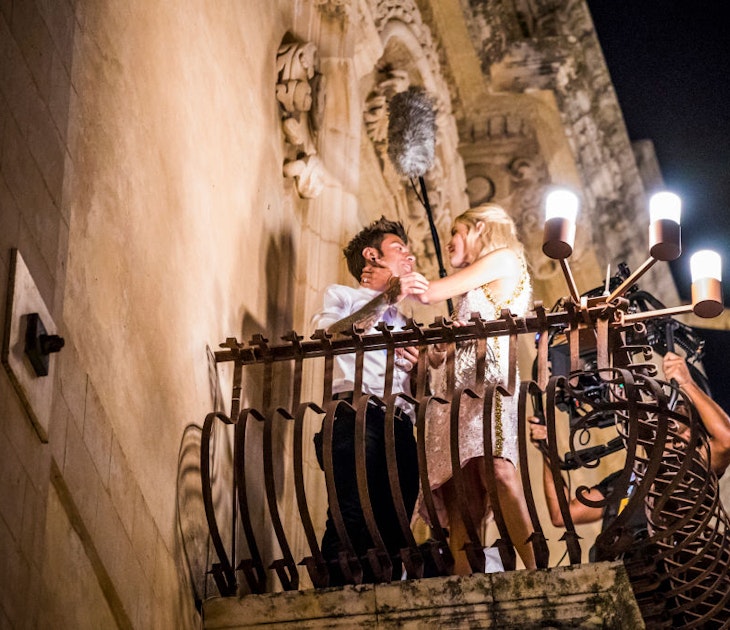
Jan 15, 2024 • 7 min read
They've got fame. Their weddings cost a fortune. But you'll fall in love with the destinations they've picked to tie the knot.

Oct 20, 2022 • 5 min read

May 21, 2021 • 4 min read
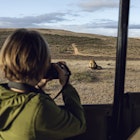
Feb 2, 2021 • 4 min read

Oct 6, 2020 • 2 min read

Sep 3, 2020 • 2 min read

Aug 25, 2020 • 2 min read

Aug 7, 2020 • 7 min read

Mar 1, 2020 • 5 min read

Feb 6, 2020 • 5 min read

- RECENT BLOG POSTS
- Sustainable travel tips
- Packing light
- Sustainable travel products
- Volunteering
- Why sustainable travel
- El Salvador
The power of slow traveling

Table of contents

The beauty of slow traveling
What is meant by slow travel?
More on traveling sustainably during your trip.

Exploring Panama by bike
Where does slow travel come from?

Nothing better than local food!

Benefits of Slow Travel – Why is slow traveling important?
You prevent exhaustion.

Time to calm down
You have a deeper travel experience

Central American bus rides are always fun

It helps to get connected

Slow traveling helps to save money

Strolling through Vietnamese markets

You leave your comfort zone with slow traveling

Have you ever done a boat trip that left you on a tiny island?
You support local businesses

Shopping where the locals go

Slow traveling treats the environment with care

Who is slow travel for?

On the way to the local bus in Costa Rica

How do I start slow traveling?
Take more time at one destination.

Take some time for yourself

Our wonderful Guesthouse Casa Papaki in Ometepe ( Nicaragua )

Immerse yourself into the local way of living
Be mindful of transportation.

Isn’t the bike one of the loveliest modes of transport?

Stay flexible with your travel plans

Sunset drinks in Utila
Avoid touristy places
More about reducing waste during your trip.

Copan Ruinas in Honduras

Travel off-season & off the beaten track

Alone at the beach in Paros
Be open to new experiences

Hiking around Lake Como (probably not the first thing you’d think of at this chic Lake, right?)
Examples of slow travel
- Road trips – Let the road be your destination and take you to places you wouldn’t have imagined before. Stop wherever you feel like, no matter if it’s a cute roadside café, a hidden campsite, or an unknown waterfall of which you’ve just read the sign.
- Traveling by local means of transport – Look out for the slow coach or regional train that takes you through totally untouristy villages and landscapes. And why not get off in a cute town you’ve never heard of before to check out their farmers market or to have a looong lunch break?
- Homestays – Why is it that so many people crave fancy hotels? Some of my best travel memories are from times that I’ve stayed with locals. This usually leads to unforeseen highlights such as a rustic family dinner with garden-grown veggies, homemade ice cream, a private traditional cooking class, or lots of cuddle time with their dogs.
- Long strolls – Instead of just hopping in between sights, put away your phone and map apps and just follow your nose. Take whatever alley looks cute and allow yourself to get lost. I’ve found the cutest corners in London this way, even after I had visited the city almost ten times. Walking tours with locals are also a great experience!
- Bike tours – How about skipping the tourist bus and either renting bikes and exploring by yourself or booking a bike tour? You’ll see the place from a completely different angle!
- Farm stays – Staying right where the local food grows is the best way to try a country’s real taste. Here you can also learn about traditional production methods, original recipes, and enjoy fresh food “zero km” or “farm to fork”. This could be a vineyard in Tuscany , a rural farm in the Alps, or a small lodge right next to a rice field in Vietnam.
- Sailing trips – Why always stay at a hotel? You can also stay on a sailing boat to explore different parts of a Mediterranean island or take the unique 5-day sailing adventure from Panama to Colombia. This is for sure a once-in-a-lifetime experience!
- Cooking with locals – You’ve never truly experienced a culture if you haven’t tried the local food. And even better, if you’ve cooked them. So book a local cooking class, and you can even take the taste home with you and cook for your family and friends. That’s better than any souvenir!
- Volunteering – Yep, volunteering is probably the best way to not only get to know the locals and their culture, but to also support the disadvantaged. So help out in a local organization, support building projects, or try wwoofing (working on organic farms).
- Freighter travel – You may have never heard of it, and it’s only an option for those who have a lot of time and are willing to refrain from any comfort and civilization. But freighter travel is a way to inexpensively travel around the world without airplanes or commercial cruise ships.

Volunteering in Guatemala

Get a free packing list to travel lighter!
Subscribe to get your free packing list for traveling light or carry-on only!
By requesting the packing list and subscribing to the newsletter, you agree to receiving updates via e-mail.
We respect your privacy. Unsubscribe at anytime.

Share with friends!
Related posts.
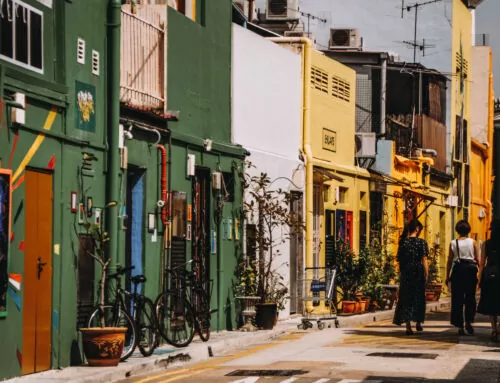
Singapore | Highlights & hidden gems in the world’s greenest city
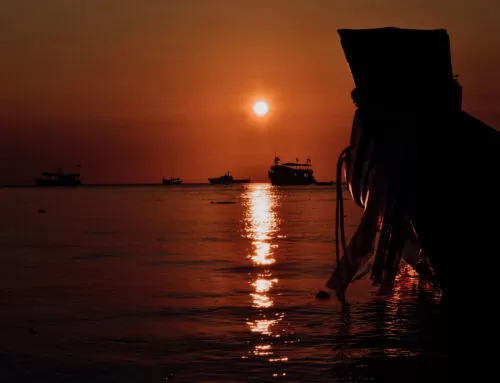
Thailand | Island hopping, food paradise & lots of smiles

Why Eco-Friendly Travel Is Essential in Protecting Our Ecosystems
19 comments.
Great read. I need to do some slow travel because I tend to do too much and sometimes come back from leave even more exhausted.
Hey Mayi, thanks for your feedback! Yes, that’s exactly what slow travel can prevent :) Try it out next time and see how you feel after leave.
I used to try to cram as much into my trips as possible, but that had to stop after I started traveling full-time. I think it just isn’t possible to do any other type of travel for an extended period of time! And honestly, I love slow travel so much more! I feel like I’m actually getting the most out of my travel experiences this way :) Awesome post, thanks for sharing this!
Hi Natalie, thanks for sharing your positive experiences with slow traveling! Especially when traveling full-time, there’s definitely no other way!
These are all brilliant ideas for slow travel…I noticed on our last trip we stayed in one area more and travelled around and our next is planned along the same way…when we travel in Europe, once we get their its trains and buses…I love this article thank you
Thanks for sharing your thoughts and experiences, Jeanine! I especially love that you travel around Europe mostly in trains and buses. I also love this kind of transport. You just see so much more!
This is so brilliant to read: I’m a slow traveller myself more now than a decade or so ago as well as putting sustainability at the forefront of my travels. So so important and I also do many social responsibility projects when abroad. A wonderful post articulated beautifully.
That’s awesome! I love that you support responsibility projects when you’re traveling! This is so important not only in terms of slow traveling but also in traveling more sustainably. Thanks for sharing your thoughts on the topic.
Lovely post! It was inspiring to read it. Slow travel is far more meaningful than we imagine it is.
Thanks for your feedback. So true! I think it will shape the future of the travel industry.
Wish I could slow travel more often but I can’t leave my dog for that long :(
The magic about slow travel is that you don’t have to travel for weeks or months. It’s a mindset that you can follow even during a long weekend or other short trip. The most important part is not traveling longer, but spending more time in one place instead of rushing through a destination. And I’m sure your dog would also love more relaxed time instead of transportation time :)
Lovely article Jill. There is so much more joy in slow travel and taking time to really soak up a destination. Great advice.
Thanks for your lovely words. You’re correct in everything you say! Happy travels :)
Lovely article. Slow travel has definitely changed my view of how to holiday, or see a place. A huge slow travel convert here. Planning some sailing trips this year and can’t wait!
Sailing trips sound like an amazing way of slow travel. I’d love to try it one day! So happy to hear that you’ve also fallen in love with slow traveling!
This article beautifully encapsulates the essence of slow travel, emphasizing the importance of savoring every moment and immersing oneself in the journey. The author’s insights truly resonate, reminding us to embrace the journey as much as the destination. WildKamp is an excellent resource for those seeking to enhance their slow travel experiences by connecting with nature at campsites across the globe.
I wish this great concept was called a bit more attractive than “slow travel”. I have skipped posts with this title for a long time, because it sounded so … not motivating. However, your post is trully helpful and inspiring! I tried this idea one time and did a couple of months in 1 city, it felt not like tourism but more like immersion and connection, as you say.
Thanks, Sasha! You’re making such a good point indeed. While I do see where the term comes from (thinking about slow food – which is so much more joyful (& stustainable) than fast food), I also get that it’s not clear to many. Staying several months in a foreign city is such an amazing experience. I also love thinking back to my short insights into life in Madrid, Chester (UK) or Koh Tao where I each stayed several months.
Leave A Comment Cancel reply
Save my name, email, and website in this browser for the next time I comment.
- Destinations
Slow Travel Planning – How to Design Your Trip
- November 2, 2021
There are not a lot of things that I think I’m really good at. I can’t think of much, even as I’m saying it, but there are two things that I am confident about:
- I know how to plan a slow trip, and
- I know a lot about Bulgaria
(The second thing is neither here nor there, it’s just something I know.)
Adulting, having my life together, being tidy, all not things I’m good at, but this…
I’ve got this.

Okay, so I should actually say we , because my darling husband likes things even slower than I do. If it was up to him there would be a minimum of one nap every day, but there isn’t.
So rest easy if you hate napping, (me too) or if you like it, because there will be time to both nap and explore!
What should a slow trip be like?
A slow travel plan should be a loose DIY guide to having meaningful experiences on your trip.
Think of it as a minimalist blueprint for your slow travels.
If you are wondering more about the basics of slow travel (what does it mean? etc.) take a look at this guide.
Throughout this post I am going to act as though your itinerary is a piece of paper, but it’s not necessary.
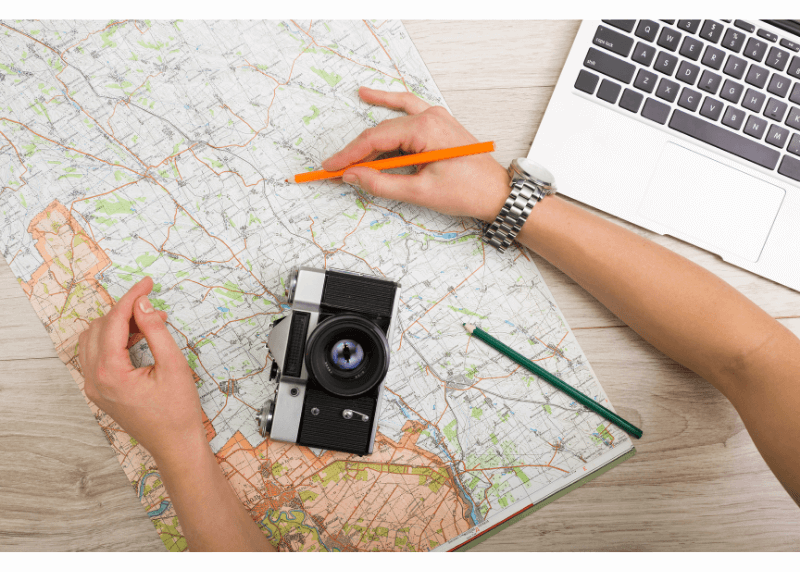
If you have a good memory you may not need to write anything down, or maybe you prefer to use an app.
Anything goes!
Further down, I will add an actual document, if you prefer to be more specific in your plans.
How to Design Your Slow Travel Itinerary
I will assume at this point that you already have flights booked and are operating with somewhat of a schedule.
If you don’t, consider allowing flight deals to choose a location for you. I usually try to choose flights and then plan a trip because it saves the most money and is the most spontaneous.
(Here are my best tips to finding a great deal on flights.)
Make Time for Your Big Plans
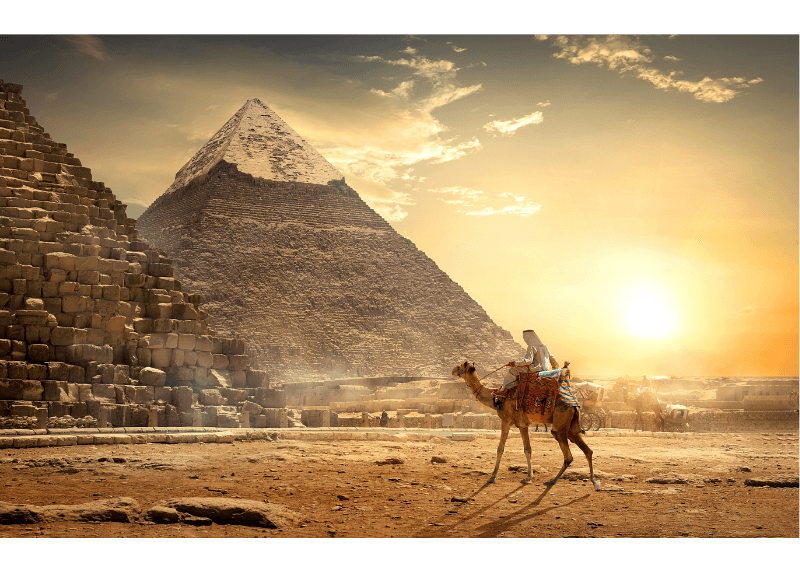
Slow travel is all about finding authentic and meaningful travel experiences instead of checking a bunch of boxes on your list, but that doesn’t mean you don’t have a list at all!
When you add a location to your dream travel list, whether mentally or physically, there will be reasons that it sparked your interest.
So, what are those reasons? Ask yourself, “Why did I choose this destination originally?”
Jot down your must-sees and if they aren’t all in the same city, make a note of where they are.
Next, if your main attractions are things that have opening hours, like a museum or castle, check online for the opening hours.
Make sure you do this , because sometimes things will be closed on random days.
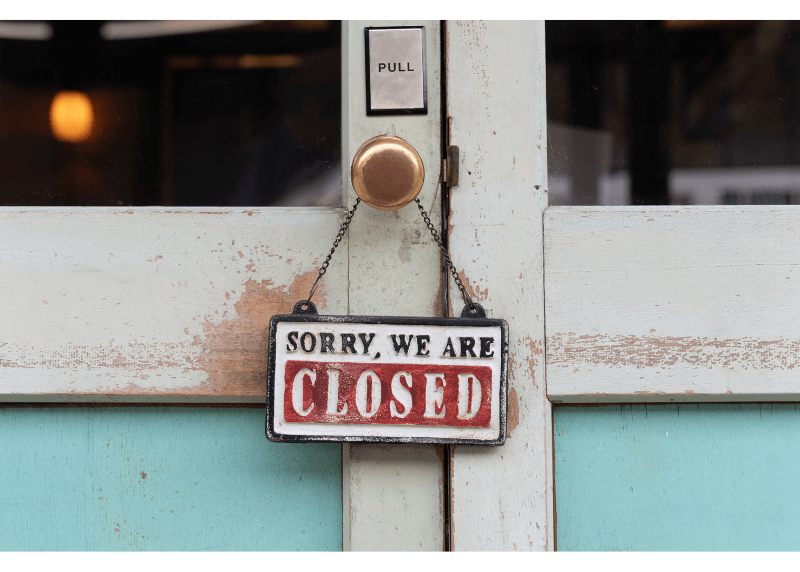
We have been disappointed more than once by not checking, and then finding out we left something to the end of our trip that was actually closed on a Tuesday!
I tend to front load our vacations now , with the things that we really want to see. Not that we cram them in, but I always leave empty days towards the end of the trip.
This way we can either relax even more, or we have some insurance time if something doesn’t work out when we planned.
Highly recommend, because this will also allow you to bump an activity to later if you stumble on something else you want to do.
It’s always a good idea to have that contingency plan, because in less structured parts of the world, things can definitely be closed without notice.
This is also how I handle any fast travel portions of our itinerary.
Not to be hypocritical, but sometimes checking boxes is the most efficient and pleasant way to see things if they are either: Extremely expensive , or extremely crowded .
I would never plan a whole trip that way, but for short stays in very touristy cities, it can make sense.
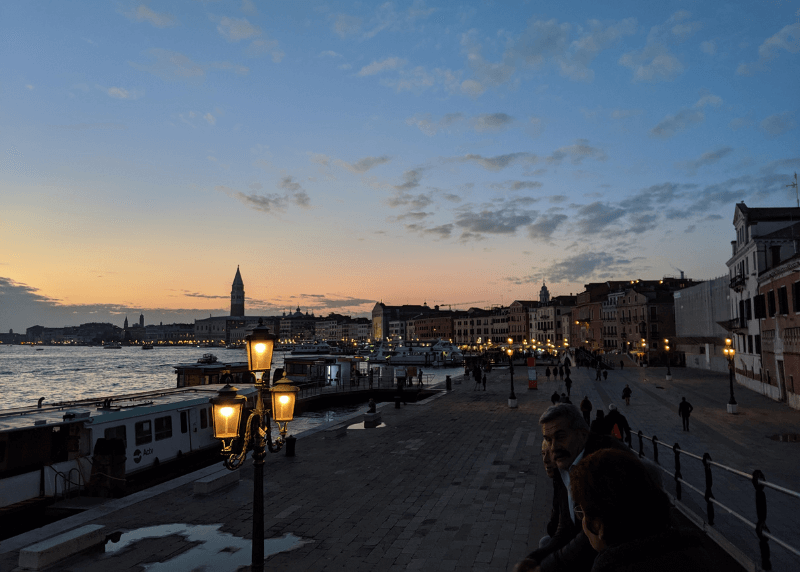
For example, we put Venice at the beginning of our last trip so that we could relax more in the second part.
Next, check for anything that needs to be booked in advance, because those will be the only hard plans in your itinerary.
Now that you have all of these firm plans down, let’s make our “schedule” more enriching!
Follow Your Interests
Take some time to consider your passions and interests. Now choose a few things that you like to do anywhere .
What is “your thing?”
I am really into architecture and street art. No matter where I’m going, I will enjoy seeing both of those things.
So it makes sense to look into a self-guided street art walk, or searching for the most interesting buildings in the area.
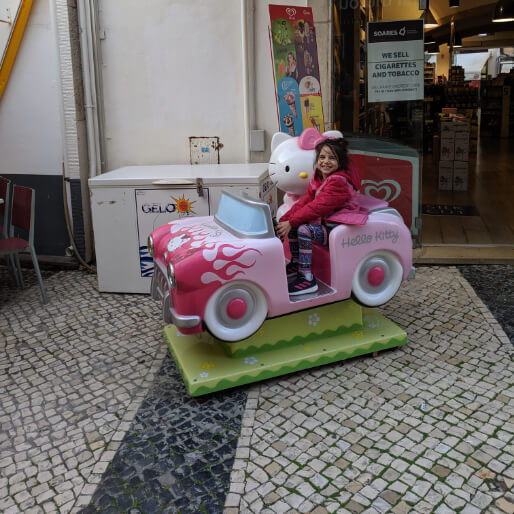
If you like rock-climbing, or wine-tasting, see how you can work those into your itinerary.
Find Some Off-beat Ideas
Be open-minded to new experiences and search in Reddit for ideas.
You can search both the r/Travel sub, and the country specific subreddit for your destinations.
After you search in the travel sub, pose the question, “what is the most unique or authentic thing you did in ______.”

In the local forum ask for some local hangouts, quiet restaurants, or for the sights, activities, and areas that tourists overlook.
You could also do a search in r/digitalnomads (a group for people who work abroad) to see if anyone has mentioned cool experiences at your destination.
If there are a lot of results for the location you are searching “hidden gems” is a great search term to narrow things down.
I used to despise Pinterest, I just didn’t get the point.
It also used to be that every single pin was either broken, or linked to spam.
I am happy to tell you that is no longer the case , and if you give Pinterest a chance, you may find something new!
Pinterest is now super popular with bloggers, and fresh content is constantly being added.
This means that bloggers are going further off the beaten path and creating pins from their experiences.
Browsing won’t be very productive, but their search function is actually really good , and the more specific you are, the better.
Search “hidden gems Barcelona” or “Hot Springs in the Rocky Mountains” and you WILL find some great results.
I have only recently been using YouTube to feed my travel itch, but if you know how to search you can actually find some great quiet spots.
Be specific and open in your search terms at the same time, for example, search “ village ( country )” and see what comes up.
(Specific being “village” but open because I won’t dictate a region or anything else about the village.)

You could also search “ abandoned ( country )” or whatever else you think would float your boat.
“ Secret ” is also another great search term, “secret beach Portugal ” “secret lake Slovenia” “secret Barcelona.”
You may be surprised at what you find!
Bonus : You get to watch a fun travel vlog to get you pumped for your trip!
I think this works so well because the information isn’t written down anywhere, it’s just in the video, so you will find different results than you would by performing a Google search.
Now that you have some great ideas, add them to your plan!
Be flexible.
Now what we aren’t going to do, is schedule all of these ideas.
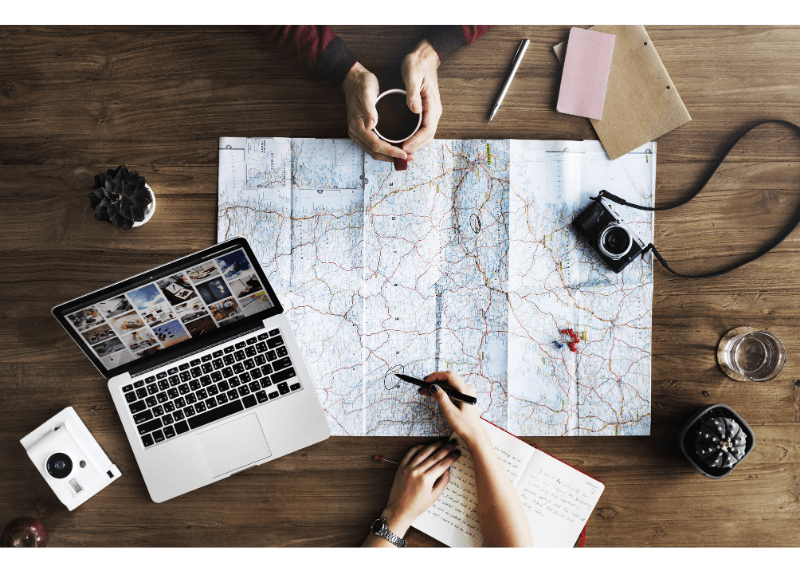
We are going to resist the urge to plan everything and instead, take a “choose your own adventure” approach to each day.
- Our original list of must-haves
- Our list of ideas
- We know where everything is
That’s almost everything we need to know to have a great trip!
I say almost because it is also a good idea to…
Figure Out Transportation
Without a doubt, researching transportation is my least favourite part of trip planning (slow or otherwise.)

I would love to figure it out when we get there, and I have tried to do that before, but there are a few problems with this strategy:
- Wifi can be less than reliable at your destination
- Information may be difficult to find and you waste valuable holiday time
- You may find out there is NO public transport to one or more of the item’s on your travel plan, and you will have to scramble to figure out an alternative like hiring a guide or renting a car
We have dealt with all of the above , and it is information better covered in the comfort of your home when you have lots of time to figure it out.
Central and Nearby Transportation
In many cases you can quickly find out that there are easy public transport links by metro or bus and that will cover most of your movements.
(If you can’t walk, that is.)
For the sights and activities that are in the centre , you don’t really need to worry about it. You can cover it on foot, or worst-case scenario : hire a cab.

For transport to rural activities or ones further from the centre , Google maps has pretty good public transportation directions, so check those first and it may be easily sorted.
Transportation Between Cities
To move between cities, Rome2Rio is a great website and app that will tell you how to get anywhere !
Use it to check schedules and make notes of the transit companies you will need to book through.
No need to actually reserve anything yet, or put it on your itinerary, unless there are few times available.
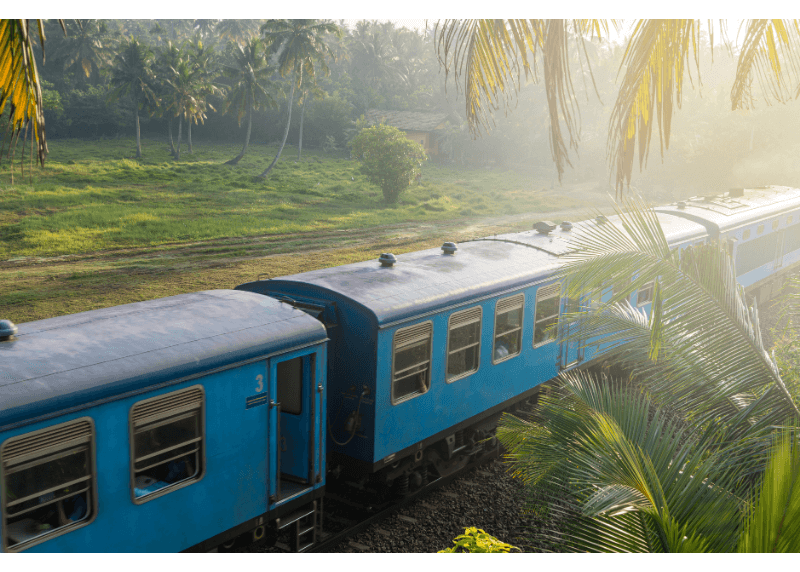
When There Are No Options
Finally, if you can’t find transportation on any of these tools, search and/or ask in Trip Advisor forums.
As a last resort, see if you can book a tour , either private or small group.
I have had good luck finding facebook pages for small, locally owned tour companies.
If you don’t like the tour options and you are comfortable driving, then look into car rentals, which you may want to book in advance.
Choosing Accommodation
To book or not to book.
In an ideal slow travel plan, you wouldn’t need to book any accommodation for your trip ahead of time, besides the initial day or two.
If you are travelling:
- In the off season,
- To a place that isn’t very touristy, and
- You don’t plan to stay in one city the whole time
Then that is the trifecta! I would say feel free to leave your accommodation open.

- Are going to a busy place at a busy time (or either really)
- Want the same accommodation for the whole trip , or
- You just aren’t comfortable booking as you go
Then book ahead.
Also, make sure that your destination is truly not touristy, and not that it isn’t touristy as far as you know.
When we went to Montenegro for the first time, we knew nobody else who had ever been, so we thought that it would be fine in summer without booking ahead.
People from North America may not go there often, but the regional tourism scene is bumping and we drove around for HOURS not being able to get a room!
Not an experience I would care to repeat , and in summer I would always book ahead.

Choosing Your Ideal Accommodation
Although budget ranks high on the list of priorities when we choose accommodation, we are also trying to enjoy every part of the journey and take everything in.
Therefore, it should be a balance between the budget and the wishlist.
When you think about your upcoming trip, you probably have a picture in your mind:
Something with a view?
A Soviet apartment block?
A place near the beach?
Try not to compromise too much on your vision, because where you stay does have an impact on how you feel about a location.
If you are visiting a destination where everything you want to see is in the old town, and you picture yourself strolling through the cobbled streets every morning:
Don’t book a modern hostel in the suburbs just because it’s cheaper.
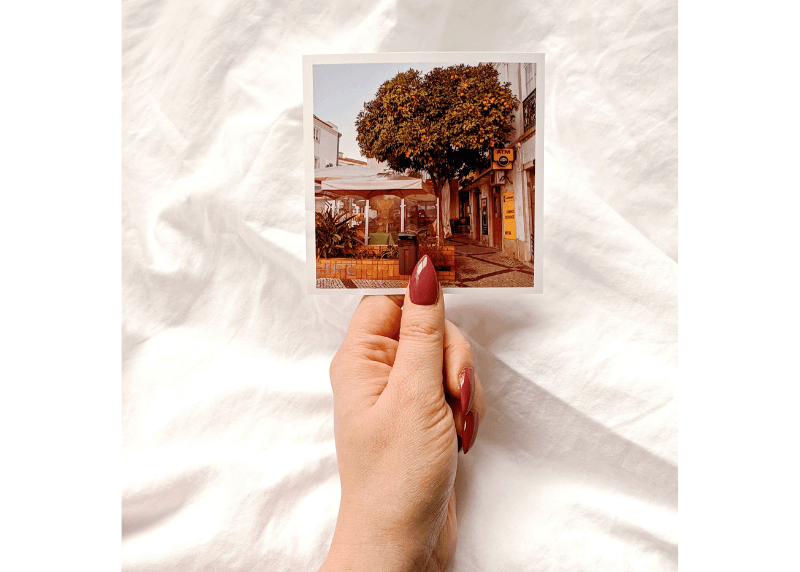
In some really expensive cities, the center may not be in the budget, but get as close as you can if that’s where you want to be.
Alternatively, do some research and find a similar charming neighbourhood.
You will LOVE being able to enjoy the aesthetic out of your apartment window on a quiet evening (or a jet-lagged early morning!)
It’s worth remembering that while accommodation in the best locations will be more expensive, you will also save time and money , by getting around on foot.
(As well as be a little greener!)
Especially when you are travelling with kids, simple is always better.
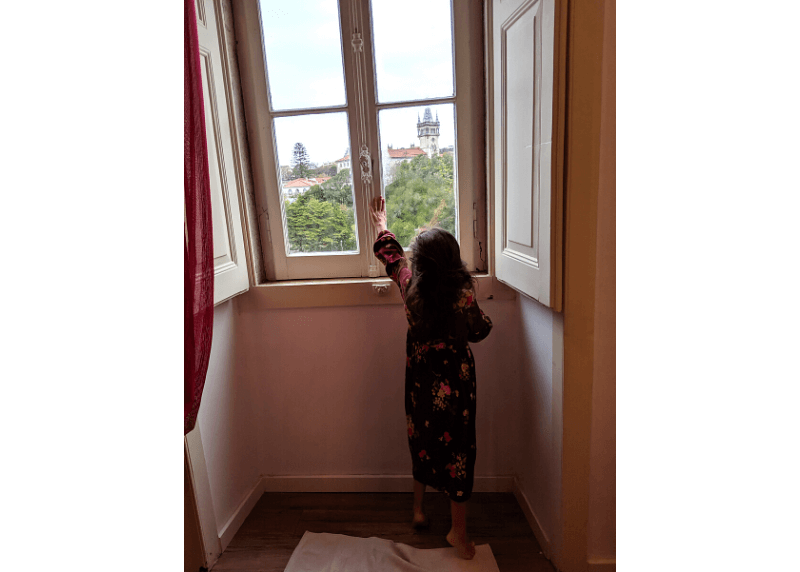
Whether you want to be in the city center or not, do make sure that your location is walkable to as many things on your list as possible.
(Or at least good transit links.)
It may seem a little wasteful, but if you are travelling somewhere affordable, consider booking an apartment or room for your whole trip , and then plan a day or two away once you are there.
This way all of your plans can be flexible , but you have a place to stay if you change your mind or can’t get last minute accommodation.
For a longer trip especially, (a month or more) sometimes this works best.
An added bonus to having a “home base,” is that you can leave some of your extra luggage and move around lighter (if you haven’t packed extremely light to begin with!)
We almost never take tours, it’s just not our thing and we prefer to explore on our own.
There are exceptions of course!
You may need a tour to gain access to an area off limits to the public.
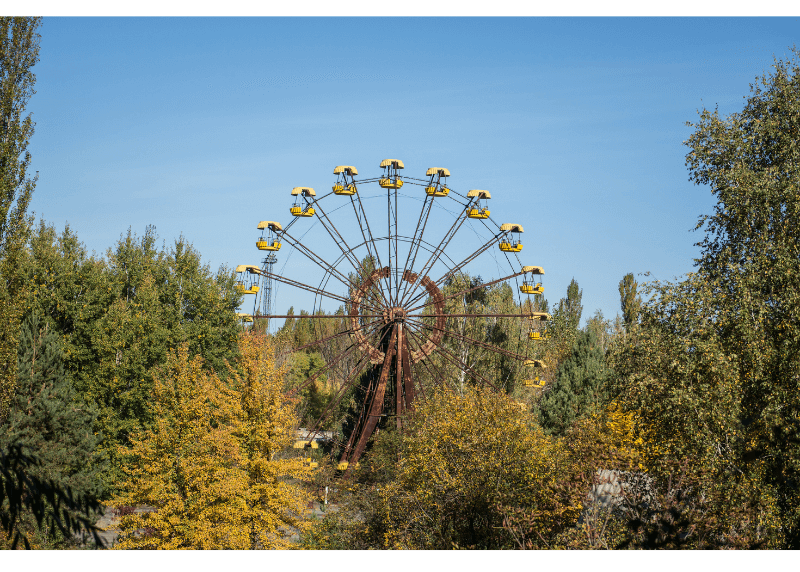
An extreme example being something like Chernobyl, but it could be that you want additional access to a popular attraction.
Sometimes tours will get you into more areas of a castle or museum.
Consider taking a tour if you want to visit an extremely busy attraction :
You may be able to get access while it is closed, or skip the line.
If we were to ever go back to Versailles, it would definitely be worth the money for a tour to jump the hours long queue!
It’s worth performing a quick search to see if there is anything unique that you can do on a tour.
I recently discovered Sofia Retro Tours , and they offer Soviet tours in a retro car. They even offer a 24 hour tour to a village where you can stay overnight and learn to cook Bulgarian foods!

Maybe tours aren’t always the contrived claustrophobic experience that I picture!
Unless you need to, don’t pre-book your tours.
If you are concerned about availability, just reach out and ask how soon you need to book in advance.
It is usually more expensive to book from home before you go, and you will not be aware of all the options that you would have in person.
It’s always a good idea to wait and ask at your accommodation when you arrive about the best way to do or see a particular thing.
Ideally, see what tours are free or by donation, and on a “show up” basis.
A lot of cities have a free walking tour of the city center, and you may find other options of interest.
I will always take a “show up” tour over a booked tour, it’s just so convenient!
Whenever possible choose a small group tour, and try to keep to a few hours.
Skip the massive full-day bus experiences.
Tours in a bus are annoying because not only do they guarantee that the sights are crowded (hello, we ARE the crowd) but you are at the mercy of whatever attitude your fellow bus people have.

I once took a HIGHLY unpleasant day tour from Albufeira to Gibraltar. So much so that I will have a hard time even going back to Gibraltar because the other tourists were rude and grumpy and soured the whole experience.
Plan For Cultural Highlights
What quintessential experiences are you hoping to have on your trip?
When you think of the country or city, what comes to mind?
Sitting by the ocean with a walled city behind you having salt cod and wine?
Strolling past a cafe to the sound of accordion music?
Eating at a busy street market with scooters honking as they zip by?

It’s a small thing, but planning to have the experience that you picture is totally worth doing.
You don’t need to actually pencil it all in and choose a time and spot to make it happen, but keep it in the back of your mind.
“When I picture going to __________. I picture_____________”
Think about food, drink, music, dance, smells, sounds, and sights that will create the experience that you are looking forward to.
When you are at your destination, be intentional about creating it for yourself.
Don’t feel silly about finding the perfect spot to have tea and crumpets. It’s easy to go home and say that the trip wasn’t what you expected.
Some of it can be made to live up to your expectations if you seek out the experience that you are really after.
This is actually another reason that I prefer an apartment to a hotel or a private room.
I often picture myself living in a place. I imagine the view from the windows, having a meal on the rickety balcony, or listening to the sounds of the city through the open window.
Ah. Sounds nice doesn’t it?

Experiences
I wouldn’t usually plan paid experiences ahead of time.
They are something that I like to find when we have arrived.
Since we have lots of open time, we can seize the opportunities as they arise.
If there is something that you KNOW you want to do, like stomping grapes or fishing , then go ahead and do the research to see how it can be done.
Ideally there will be a few places and vendors so that you can choose one on an open day.
If you have to schedule and book ahead, or just feel more comfortable doing that, of course you can do that!
The reason we try to have as much open time as possible , is so that we can always change our plans and add new activities, sights, or even cities, when we discover them.

I for one, would WAY rather find things to do that naturally capture our interest, over sticking to activities we picked ahead of time on the limited information we had from our internet searches.
Discover Places Via Google Earth and Maps
I am the queen of finding places to see through random visual searches of Google Maps and Google Earth.
When I am planning from home, I usually try to find somewhere to go that would be off the beaten path.
I will search for the general area that we are travelling to, and then search outwards for any interesting little towns or geographical features.
Look for villages, beaches, parks (either national parks or within the city,) islands, lakes, etc. Anything that makes you say “What is THAT?”
Then Google search them and scroll through images and wikis to see if they would be fun to visit.
This is a good way to find places that are interesting but not on any “best of” lists.
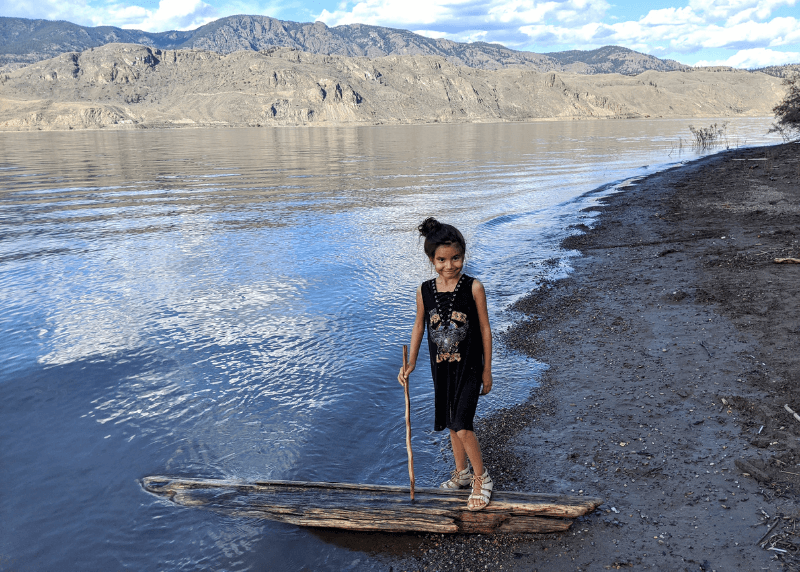
Once you have arrived and have some free time, this is something you can do locally as well.
If you are into the outdoors, AllTrails is a great site and app that has – you guessed it — all the trails!
Discover new hikes and walks of all skill levels, anywhere in the world!
If you are planning to hike in a foreign country, just be sure to also educate yourself on the dangers. Make sure there aren’t large predators to be worried about, and look up any poisonous friends you may encounter. (Perhaps not actually a good idea, because I didn’t especially enjoy our hike once I knew there could be snakes and killer bees, but I’m sure it is worse to be unprepared!)
Leave a Lot of Time Open
I’m sure that you’ve gathered already that the whole point is to keep as much time as possible, flexible and open.
Have more days in your trip than you have plans for , that is the best rule of thumb.
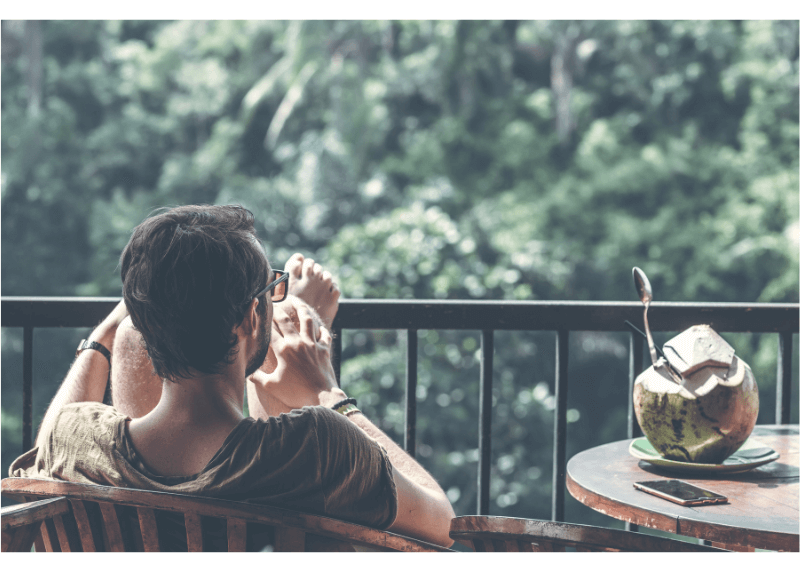
Don’t worry about being bored, I promise that you will discover more things on offer when you are actually at your destination than you will ever read about beforehand!
Find a Grocery Store
Do search for at least one grocery store or market in the area that you will be staying before you go .
(Unless you are solo and/or aren’t planning to make any of your own meals.)
It can be time consuming to figure out the right word for “market” or “groceries” and to actually locate what you are looking for on the map.
If wifi is spotty that complicates things further. If you are trying to look while still at the arrivals hall in the airport, when everyone is cranky, even worse!
It’s just a nice thing to know ahead of time for when you arrive and either realize you have forgotten something, or just really need some snacks.

Maybe it’s the jet lag, but I have found grocery stores incredibly hard to find on Google Maps a few times (mostly where there is a bigger language barrier and you can’t simply search the english words, as I mentioned.)
At least at home you can search at a leisurely pace, and ask somewhere if you can’t find anything.
Of course if you forget, you can always try to remember to ask your host when you check in.
I do find that their version of “5-10 minutes walk” is not that reliable, and they may not know the actual closest spot.
Keep Your Pre-trip Anxiety in Check
I know it can be nerve wracking to feel like you are showing up without a plan, but if you have followed this guide and are armed with the opening times of everything and have the must-have’s scheduled , there is no need to stress!

You WILL have time for everything that you make a priority.
You WILL have a place to sleep.
(If you chose not to book ahead, the absolute worst case scenario is finding yourself a bit further away than ideal. In the off season you will not be without a roof!)
You WILL have an amazing time discovering things as you go!
Consider a Hop On Hop Off
I realize that this is literally the opposite of slow travel , since Hop On Hop Off Buses are designed for tourists to see everything as efficiently as possible, but hear me out!
If you are going to a major tourist centre that has this option, you most likely want to see the attractions that are on these routes.

Visiting these big ticket stops can totally be amazing and a great experience, but they will be touristy no matter what .
Therefore they also won’t be the most authentic experience, no matter what.
So in my opinion, one of the better ways to relax and enjoy the experience is to:
- Accept the direct transportation
- Enjoy the guided narrative through the city
- Be efficient seeing the big sights
By taking the tour you can reduce the stress of finding your way to all of these attractions on your own.
Also, it is technically still “public transportation” and sustainable in it’s own way.
(Definitely beats a cab or uber.)
At the end of the day it will definitely free up your time to then proceed with having your slow , intentional travel experiences elsewhere.
They are a particularly good option for small kids in a centre that isn’t very accessible for strollers.
If you are unfamiliar with Hop On Hop Off, know that you are still completely on your own schedule.

You simply get off at a stop and catch the next bus when you are done.
To get the best value, you will want to plan ahead for a whole day or possibly two using the bus.
It will not be worth it to decide in the afternoon that you want the bus because they can be pricey.
Don’t Be Scared to Change Your Plans
I hope this is a theme that you are picking up.
There is no reason to be married to an itinerary or a schedule you have in your head.
A million things can happen that make you WANT to change your plans, so don’t feel the need to stick to plan A.
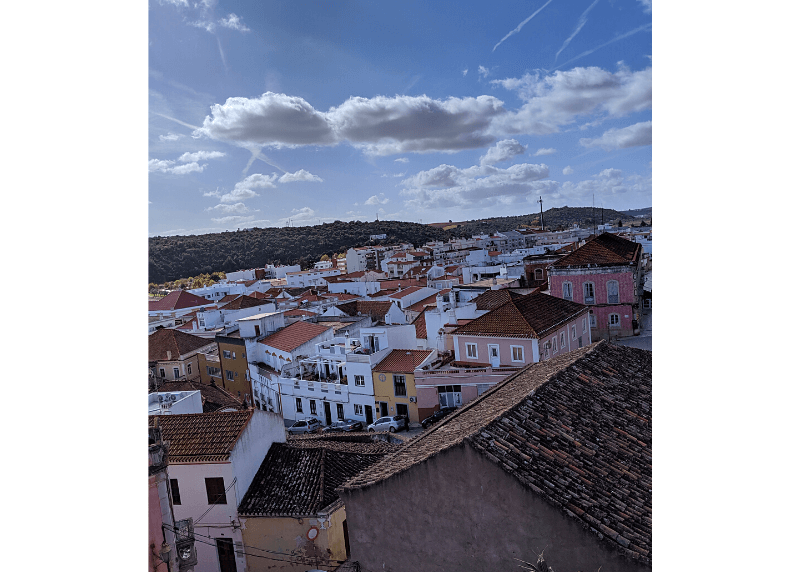
You could arrive somewhere and realize that it isn’t for you AT ALL . Unfortunately it happens (for me, that was Rome.)
If it happens to you :
- Get out of town and find something in nature to do
- Find totally different activities
- Switch locations altogether
You could find that a place is too hot to reasonably see something at midday.
Maybe you realize that you just don’t care about going up the Eiffel Tower enough to actually wait in line with a thousand people.
Maybe you don’t want to leave the apartment for the fourth straight day of rain.
All of that is okay!
This is your hard earned vacation, there is no need to do anything because you feel like you should , or even because it’s already paid for.
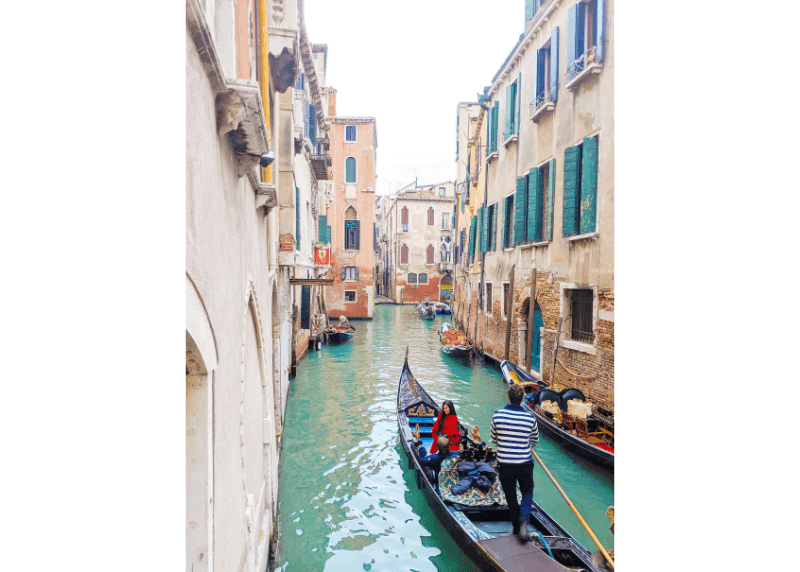
We’ve bailed on non-refundable activities because it was going to be windy and -27C.
The way I see it, we paid for the opportunity to back out when it was clearly going to be unpleasant.
It has taken a long time but I am getting over my weird guilt complex, and if that’s you, you can too!
Bring Printed Documents and Pre-loaded Maps
Hi, it’s your friendly neighbourhood old person, here to tell you that for peace of mind, some things are better off printed!
Jason hates it, but I always bring printed proof of onward and return travel.
(Thanks to some bad border control experiences)
I also bring a printed sheet of our first day’s accommodation so that we have the address, name, and phone number, in case our phones are dead.
(Sometimes also necessary for border control – the accommodation details, not dead phones.)

I also save the location of our first stay on the map so that I can use it offline .
We also usually download offline maps, not necessarily before we leave, but you will want them if you are outside of the city (especially if you are driving.)
Sample Slow Travel Itinerary
Here is a printable slow trip itinerary that I made based off of these tips!
You can either print and fill if you’re a paper person, or add text boxes over the Google doc.
If you’re planning your first ever slow travel experience , I hope you will let me know, and keep in touch with all of the hidden gems that you discovered along the way!
If this is always how you flow on your travels, what are your best tips?
1 thought on “Slow Travel Planning – How to Design Your Trip”
Pingback: Exploring The Drumheller Badlands - Slow Travel Blog
Comments are closed.
NEWS... BUT NOT AS YOU KNOW IT
‘Slow travel’ is surging — but there’s a secret to it

Share this with

Holidays can often feel rushed, dashing to cram in as much as possible while wanting to feel adequately rested during that crucial time away.
In fact, it takes the average person three days to switch off , and the average trip length is just eight days. So, how does that match up? And is it possible to accommodate all our rest and relaxation needs?
Enter the ‘slowcation’ (AKA, ‘ slow travel ’), a trend encouraging tourists to take a slower, more meaningful approach to travel and incorporate more time to unwind and de-stress.
According to new research, 81% of Brits are using travel this summer to slow down and de-stress more than anything else. But in the same vein, 57% don’t think they could go away without their phone , while 50% couldn’t hack 24 hours without checking their social media.
That’s where ‘slow travel’ comes in, embracing switching off and detaching from everyday life, with Google searches for ‘slow travel trips’ having increased by 61% in the last three months alone. Likewise, the trend has been tagged almost 20,000 times on TikTok.
But ‘slow travel’ isn’t just about slowing your itinerary down – there’s a secret to mastering it.
What is a ‘slowcation’ or ‘slow travel’?
A ‘slowcation’ or ‘slow travel’ isn’t just about slowing down the journey: it also necessitates taking a different mindset.
‘Slow travel is more about a mindset as opposed to a pace of movement, it’s exploring somewhere on a deeper level, making space mentally and physically for things to happen spontaneously. For example, taking time to walk in nature, cycle through countryside, engage with the locals or taking a long-distance rail journey,’ Simon Lynch, Global Product Director at Scott Dunn Travel , explains.

What does ‘slow travel’ look like in 2024?
Train travel.
Not only is taking the train eco-friendly: it’s also the most obvious way to slow down a trip and embrace the ‘slow travel’ vibe.
‘Leisurely train travel is one of the best ways to experience ‘slow travel,’ allowing you to sit back and savour every moment with each stop of the route,’ Simon advises, noting that the company has seen triple the amount of bookings for train journeys between January and April this year compared to the same period in 2023.
‘A new wave of luxury rail itineraries has driven a thirst for cultural immersion, exploring the less-visited backroads of popular destinations.’

Likewise, the new figures reveal some of the most popular train journeys right now, which include the Belmond Andean Explorer in Peru, the first luxury sleeper train to travel across South America, alongside the Eastern and Oriental Express, connecting Singapore with Malaysia.
Adopting a ‘go with the flow’ approach
As Simon explains, ‘slow travel’ isn’t just about the time it takes to reach a destination: it’s also a mindset.
The research from Scott Dunn Travel also finds that Brits aren’t exploring as much as they used to, instead taking a fast-paced, pre-arranged approach to holidaying.
However, 30% reported that going on an excursion helps them to unwind on a trip and 31% said that mother nature also helps them to relax, proving the point that perhaps taking a ‘go with the flow’ approach might wield some benefit.
Your Daily Horoscope

Saturn Retrograde will make you think twice about a decision – your sign's tarot horoscope
So, why not channel your spontaneous side the next time you go away? It could change the way you holiday forever.
Do you have a story to share?
Get in touch by emailing [email protected] .
MORE : This sedate little island just off the coast of France comes alive for Pride
MORE : Manchester Airport resumes flights after cancellation chaos at two terminals
MORE : Three easyJet wheelchair passengers left stranded after plane takes off without them

Get need-to-know travel news, inspiration and advice from Metro every week.
Sign up here....
Privacy Policy

To the red-haired guy with bright blue eyes on the delayed 5.27pm to…
Just wanted to tell the sexy man who walks up King’s Road, Birmingham…

Enter your birthday for your free daily horoscope sent straight to your inbox!
Get us in your feed
Southwest flight drops to about 500 feet over Oklahoma suburb, triggers alert: 'You good?'
Federal aviation officials are investigating after a Southwest flight flew so low over Oklahoma early Wednesday it triggered an altitude warning from air traffic control.
After an automated warning sounded, an air traffic controller alerted the pilots on Flight 4069 the jet had descended to a low altitude nine miles away from Will Rogers World Airport in Oklahoma City, The Federal Aviation Administration told USA TODAY.
The automated system is the Minimum Safe Altitude Warning (MSAW), per the FAA's website, which alerts controllers if an aircraft gets too low.
"Southwest 4069, low altitude alert. You good out there?" the air traffic controller asked just after midnight Wednesday, according to an audio archive of transmissions provided by LiveATC.net .
Hawaii FAA investigation: Federal officials are investigating after Southwest plane plunged within 400 feet of ocean
Flight apparently dropped to about 500 feet over high school
The flight from Las Vegas, a Boeing 737-800, had been cleared to land on a visual approach from the northwest, The Oklahoman , part of the USA TODAY Network reported.
Transponder data shows the plane appeared to descend to about 500 feet as it passed over a high school in Yukon, a city in Canadian County about 18 miles northwest of downtown Oklahoma City.
Second Southwest flight under recent investigation by FAA
The incident is the second altitude-related incident at Southwest in just over two months being investigated by FAA.
Southwest Flight 2786 flight plunged to 400 feet above the Pacific Ocean near a Hawaiian island on April 11, the Federal Aviation Administration confirmed Monday.
The plane briefly dropped at "an abnormally high rate of more than 4,000 feet per minute" before pilots pulled up to avoid crashing into the water, according to a memo Southwest distributed to pilots obtained by Bloomberg, who first reported the news last week.
The flight crew performed a "roller coaster maneuver" the outlet reported, to avoid slamming into the ocean.
Natalie Neysa Alund is a senior reporter for USA TODAY. Reach her at [email protected] and follow her on X @nataliealund.

COMMENTS
History of Slow Food and Slow Travel. Slow travel is actually an offshoot from the slow food movement which began in Piedmont, Italy in the 1980s as a backlash to fast food.. Local food producers rallied behind Italian journalist and activist Carlo Petrini to call more attention to the local chefs, farmers, producers, and artisans who were already growing the best local food, after a McDonalds ...
This is a great example of slow travel! Business travel. Many people will travel on business. Business tourism can be either long or short term and it can involve travelling to one destinations or multiple different places. Business travel can be a form of slow tourism because it can require the traveller to spend long period of time in a ...
Slow traveling in South America presents a wide range of potential opportunities. For example, you can trek Machu Picchu, explore the Amazon, party in Rio de Janeiro, and learn to salsa in Cartagena. With so much to do and see here, you'll undoubtedly want to extend your stay.
3. Embrace Sustainable Practices. Practice sustainable tourism and eco-tourism and be responsible when traveling. Opt for eco-conscious accommodations and be mindful of over-tourism.. 14 Ways to Immerse Yourself in a Destination. Although there are many ways in which you can enjoy a mindful travel experience, here are my top choices of slow travel examples.
1. Plan to take some extra time. "Unfortunately, in today's society, it's hard to step away for an extended period of time," says Shieh, noting that travel itself is a luxury. "It's important to acknowledge that slow travel is a huge privilege," she says. "I feel so lucky to be able to experience the world at a slower, more ...
Slow travel allows you to set a more relaxed pace, reducing stress and anxiety. You can take the time to be spontaneous, relax, and appreciate the beauty of each moment. This approach results in a more enjoyable travel experience. 3. Enhanced well-being.
Join the locals on the wheels. Slow down your travels by taking yourself from place to place. Sustainable, convenient, and a great thing to do, biking is one activity you have to add to your slow travel checklist. Cycle your way across nature reserves, past the cities, or even follow along a local ice skating route.
Slow travel means tamping down our own built-in, conditioned obsessions with time and allowing the world to move just a little slower so that we can actually notice it. If slow food is defined, at ...
What is an example of the slow travel movement? The slow travel movement is a philosophy of traveling that emphasizes connection to local people, cultures, food, and music. It's about taking the time to immerse oneself in a place and truly experience it, rather than rushing through a checklist of tourist attractions. ...
Learn about slow tourism, its rise in popularity. Find out about the slow tourism types and read about popular examples.
The trend of "Slow Travel" has become increasingly popular over the past years, however through COVID19 it accelerated immensely and has almost become a new norm without people even realising. ... An example being solar power providing electricity anywhere, such as in mountain cabins, a boat or other remote locations. Both urban and rural ...
2. Cruise with Holland America. Cruising is the ultimate slow travel experience, allowing travellers to uncover hidden gems and immerse themselves in each port they visit. Holland America has been wowing passengers on the world's oceans since the 1800s and it's full steam ahead to mark its latest milestone.
Slow travel is as an offshoot of the slow food movement that began in Italy in 1986 to resist the opening of a McDonald's near the Spanish Steps in Rome. The slow food movement emphasizes local food and traditional cooking over mass-produced, homogeneous fast food.
Slow travel means everything but a plane, so the Orient Express is included. Photo by Ariel Fuchs/Gamma-Rapho via Getty Images "We embrace the notion of slow," is one of Original Travel's mottos, and the London-based tour operating company is one of the leaders when it comes to slow travelling experiences, and their numbers confirm the popularity of this form of travel.
Sri Lanka. Travel has never been anything but slow in Sri Lanka. This large Indian Ocean island nation was once part of the maritime Silk Route - an ancient trading route that connected China and Roman-controlled ports in Egypt - and in modern times it has emerged as a favourite destination for taking it slow. The ancient Anuradhapura ...
Examples of slow travel. To give you some more inspiration in order to get started, here are some examples of slow travel vacations. Time to say goodbye to all-inclusive holidays and vacation packages. And to say hi to quality time and to combine slowness with deeper experiences.
Otherwise, the travel quote "It's about the journey, not the destination" wouldn't be such a hit! 7. You'll Leave a Traveler, Not a Tourist. Tourists often get a bad rap. Sadly, tourists are often negatively perceived because they come in hoards with a "me mentality" often leaving a place worse than when they found it.
Benefits Of Slow Travel. Slow tourism is all about slowing down to have a more meaningful experience while traveling. Think of it as the complete opposite to rushing around and ticking things off a bucket list! It's about being more connected to the local culture, food, music and people. You could define slow tourism by saying it is the ...
Slow travel, as you can imagine, doesn't concern itself with the time taken to get somewhere, and nor does it concern itself with the destination, either. ... Let's take a look at some examples of how a trip might vary if you're slow-travelling. Southern Spain is famed for its beaches, its weather, its hotels, its food, its clear water ...
How to Design Your Slow Travel Itinerary. I will assume at this point that you already have flights booked and are operating with somewhat of a schedule. If you don't, consider allowing flight deals to choose a location for you. I usually try to choose flights and then plan a trip because it saves the most money and is the most spontaneous.
From the western shore to the south, these are two great places to slow travel Ireland. 1. Clifden: Connemara Majesty on the Western Shores. Along the scenic Connemara region in County Galway, the small picturesque town of Clifden is a lovely slow traveler's retreat with a rich maritime history.
Jewish History Walking Tour - Warsaw, Poland. Experienced by Or from "My Path in the World" - Instagram. Monument to the Ghetto Heroes - Photo by "My Path in the World". As much as I love wandering around a city freely, I always look for unique slow travel walking tours I can take.
Slow travel improves the local community and helps restore local ecosystems. "Slow travel is part of an approach that allows us to enjoy nature and local culture in a symbiotic way where we all benefit and create tangible local benefits," adds Etcheverry. While traveling slowly offers an abundance of opportunities for travelers to seek out ...
Enter the 'slowcation' (AKA, 'slow travel'), a trend encouraging tourists to take a slower, more meaningful approach to travel and incorporate more time to unwind and de-stress.
It can also be used as a volitive interjection to command a person or horse (or other animal) to stop or slow down. Examples: Whoa in a sentence (volitive interjection) Whoa, don't go so fast! I can't keep up! Whoa, horsey! Calm down, calm down. Whoa, whoa, whoa, not so fast! Frequently asked questions about whoa or woah
SIOUX CITY, Iowa - June 22, 2024 - If you are planning a trip in northwest Iowa this weekend you need to be aware of several road closures that may slow down your trip. Between the evening of June 20 and morning of June 22, portions of northwest Iowa received significant rain, resulting in flooding along various primary highways. There are currently widespread flash flooding and river ...
The below examples all use the In State travel maximum meal per diem rates. However, the meal per diem reimbursement procedure applies to all In State, Out of State and International meal reimbursements. Example 1: An employee is in In State Travel status attending an all day meeting where lunch is provided as part
An air traffic controller told pilots on Southwest Flight 4069 the plane had descended to a low altitude 9 miles from the Will Rogers World Airport.
Global luxury goods sales growth will slow in 2024, per a new Bain & Company report. The report cited China's economic uncertainties and rising outbound tourism as key factors. "Luxury shaming ...
The sample also contains magnesium-sodium phosphate, which was a surprise to the research team, because it wasn't seen in the remote sensing data collected by the spacecraft at Bennu. Its presence in the sample hints that the asteroid could have splintered off from a long-gone, tiny, primitive ocean world. A Phosphate Surprise